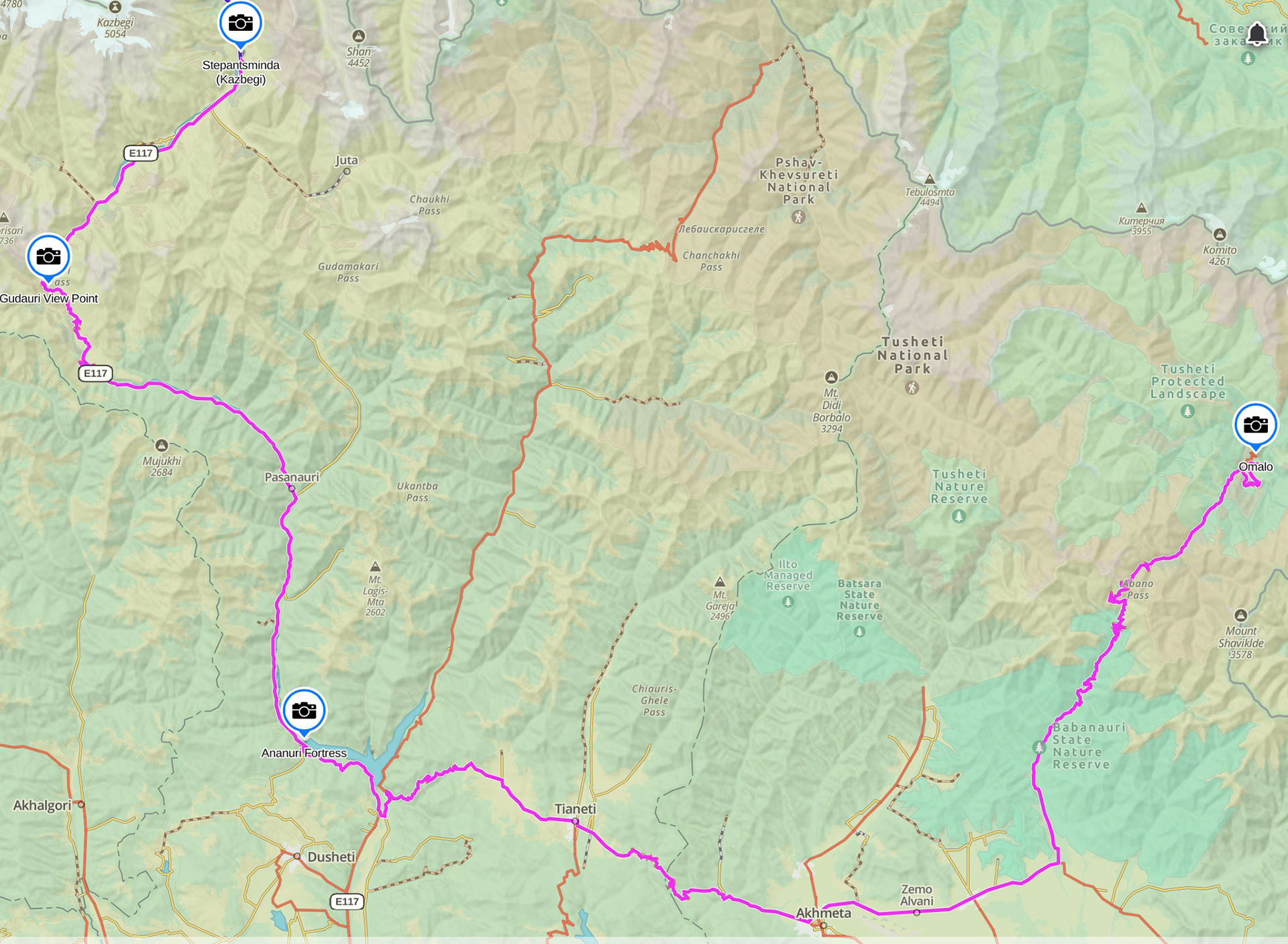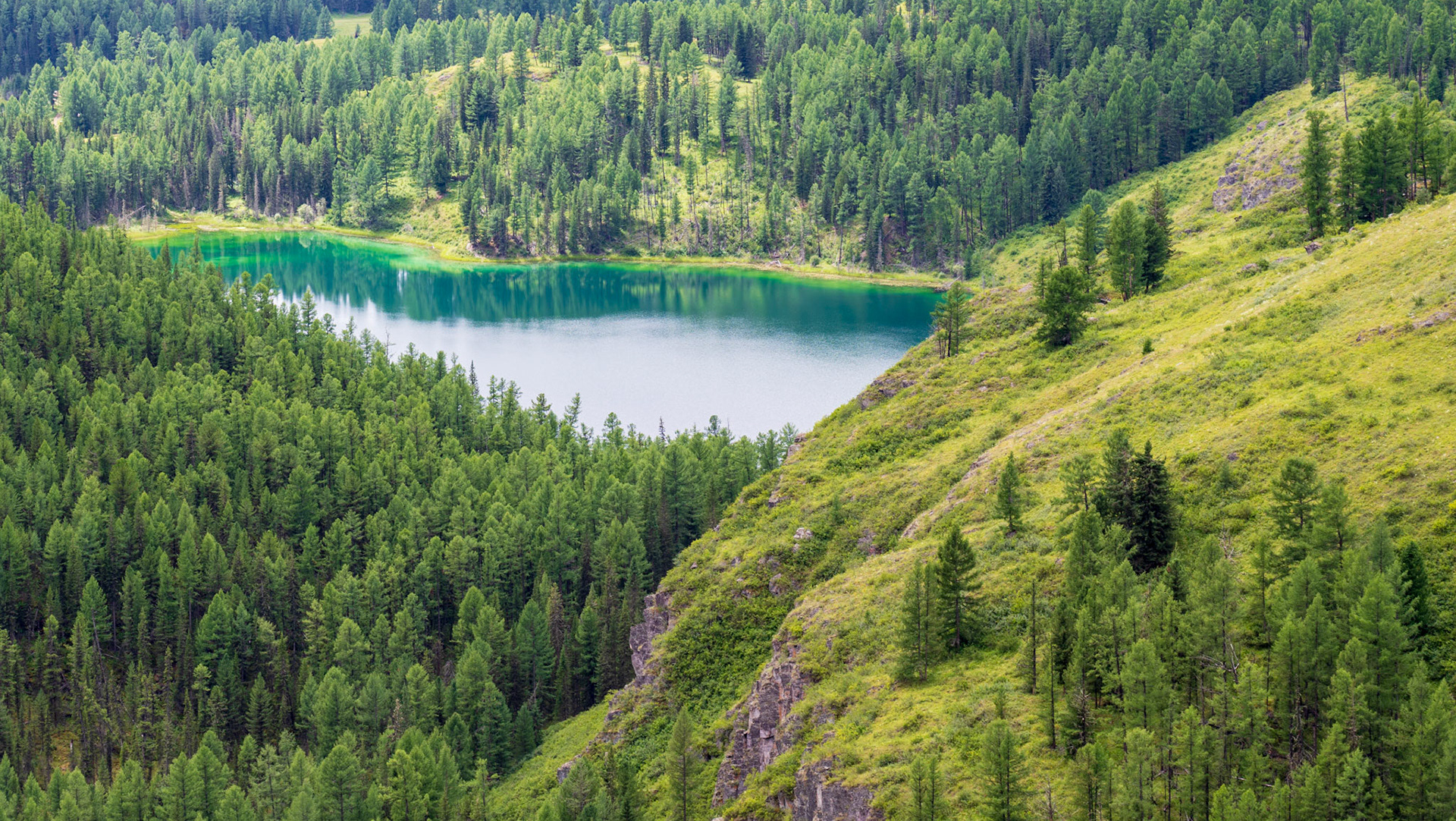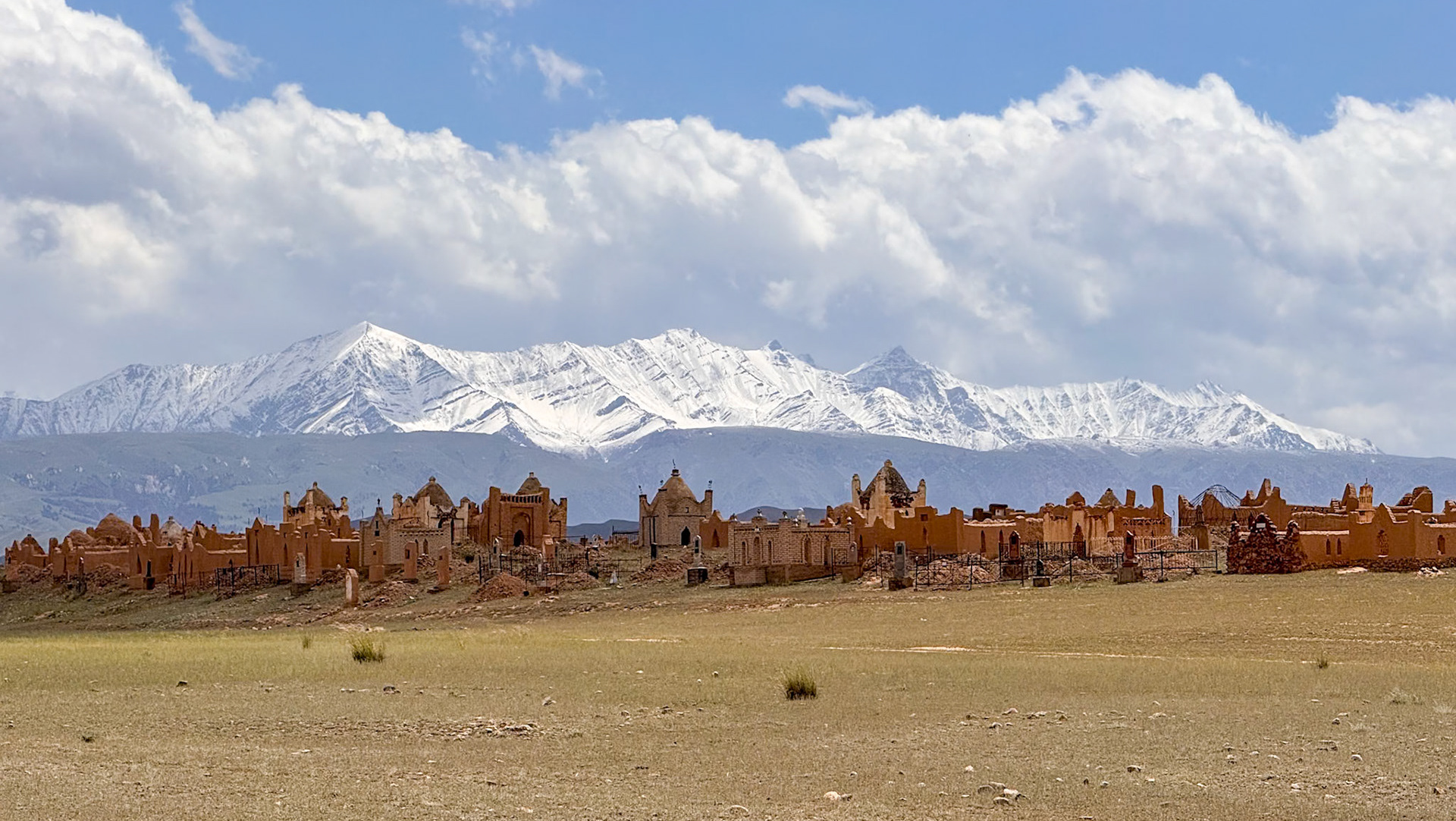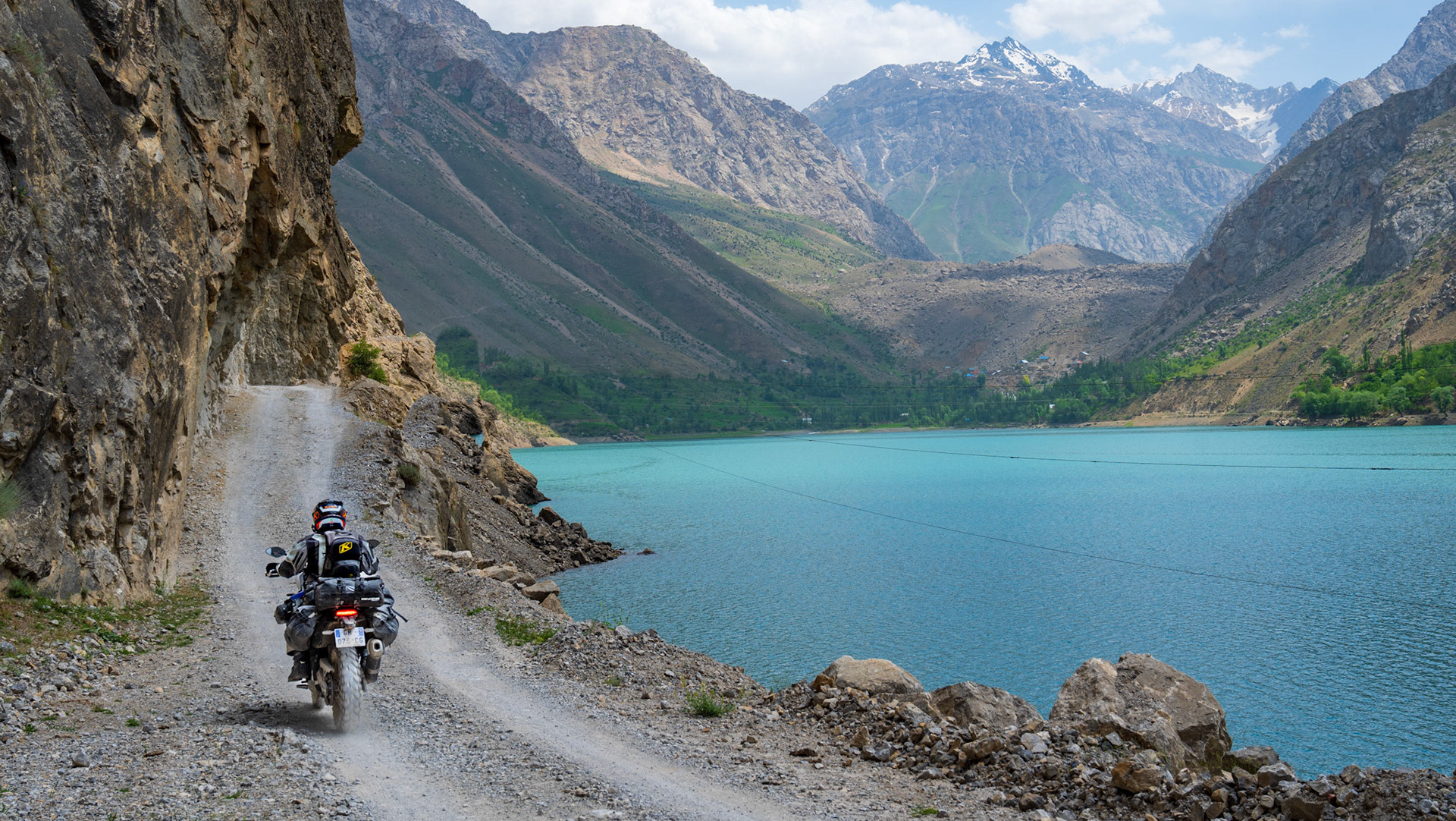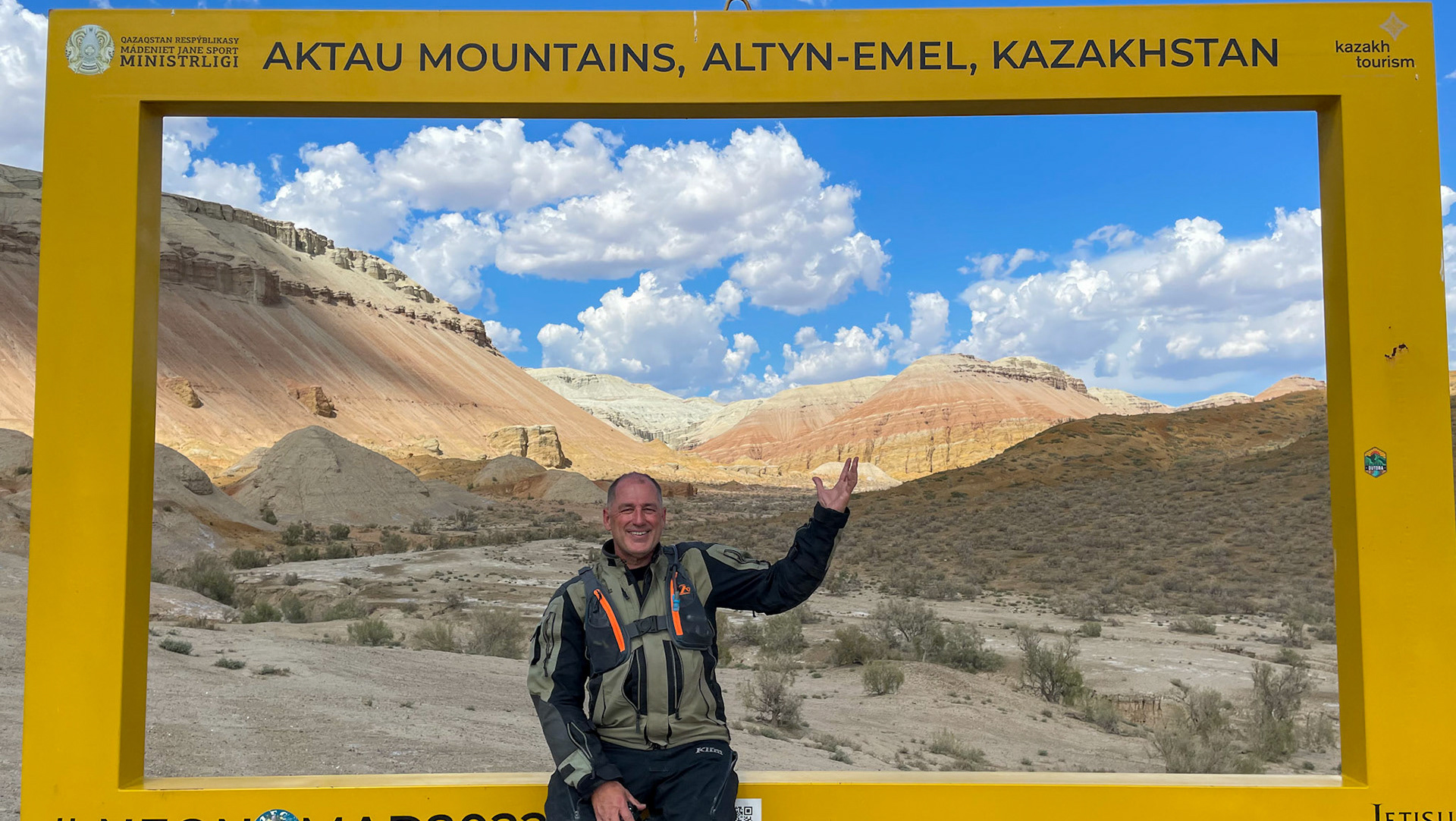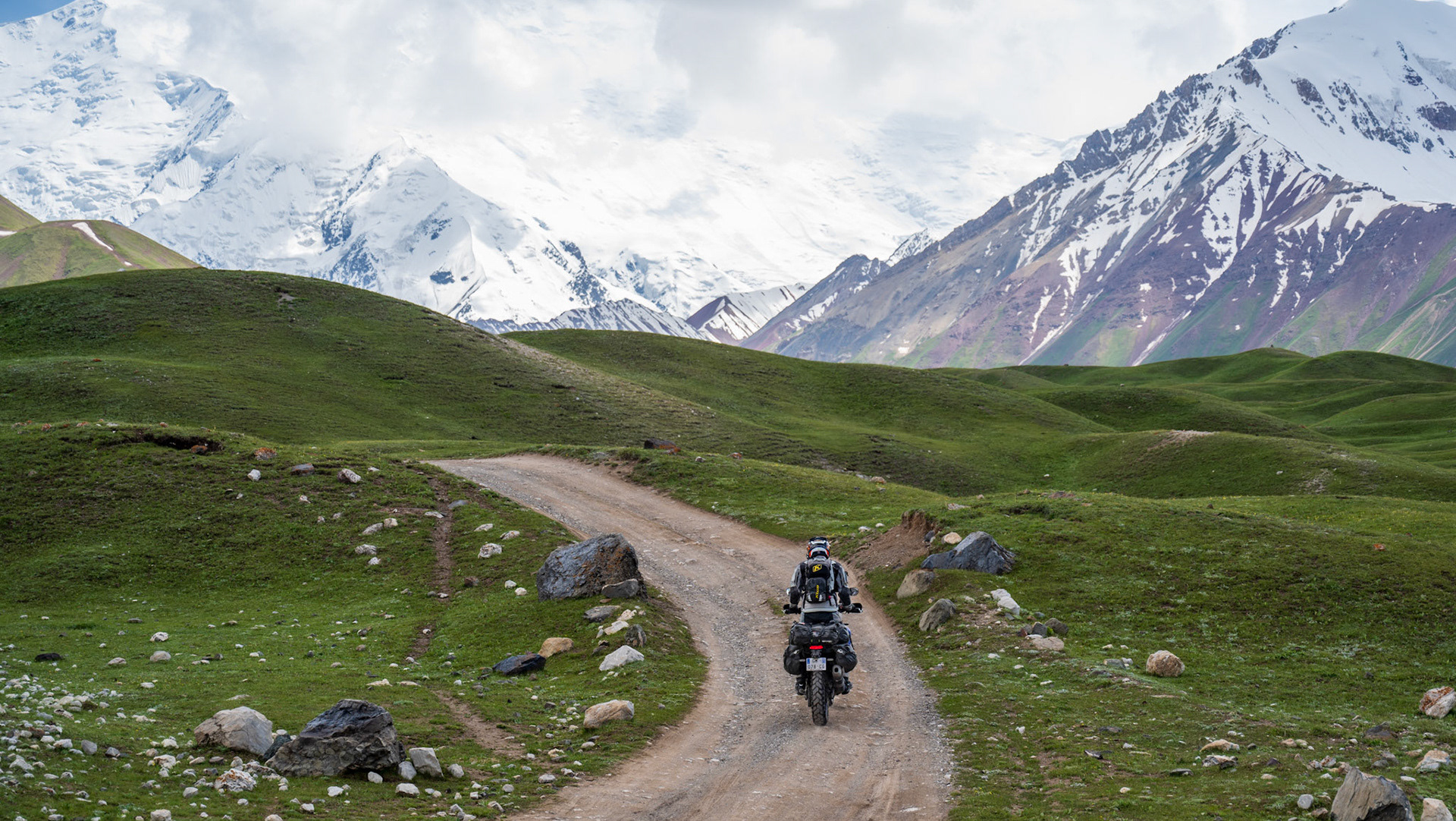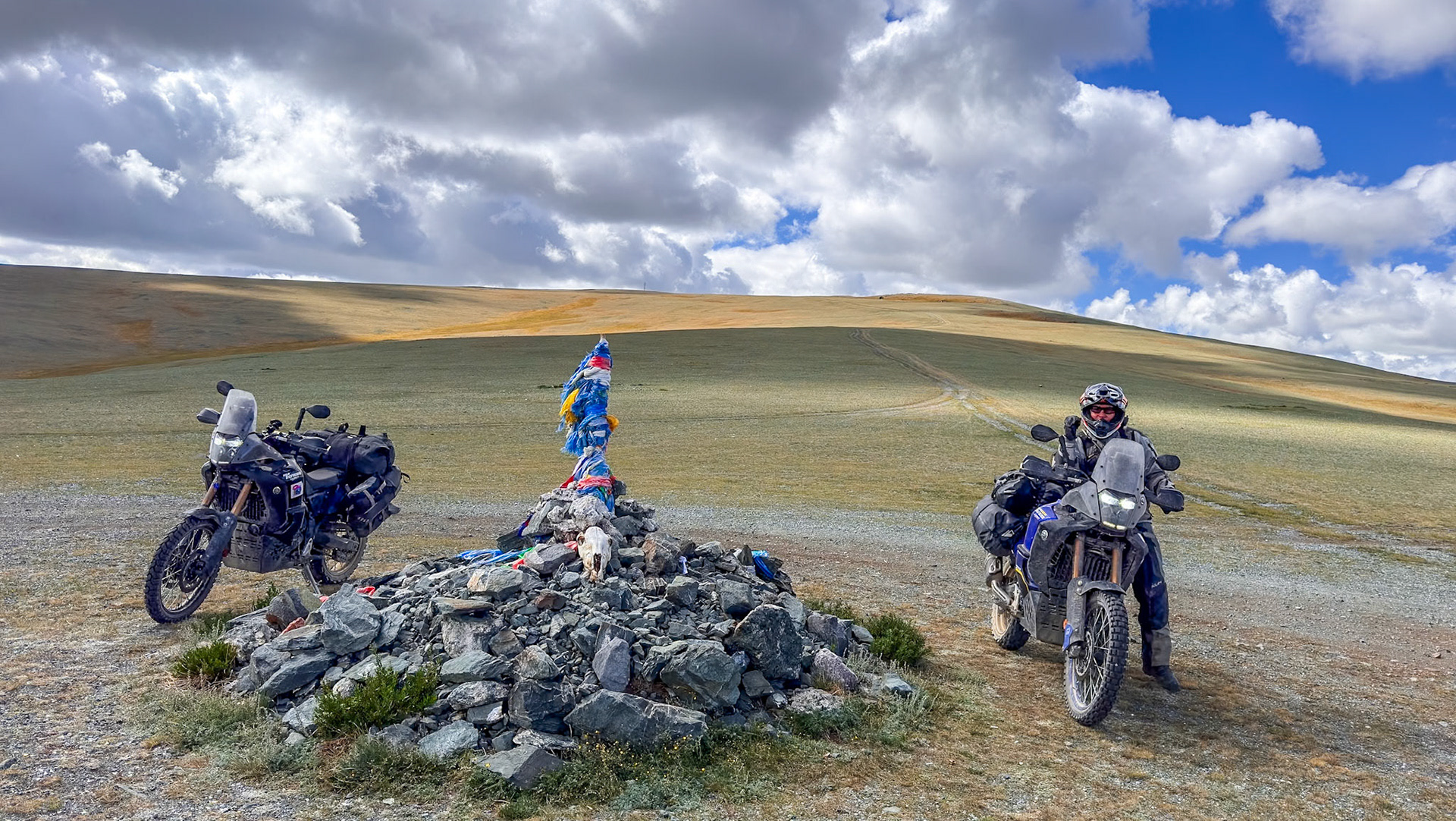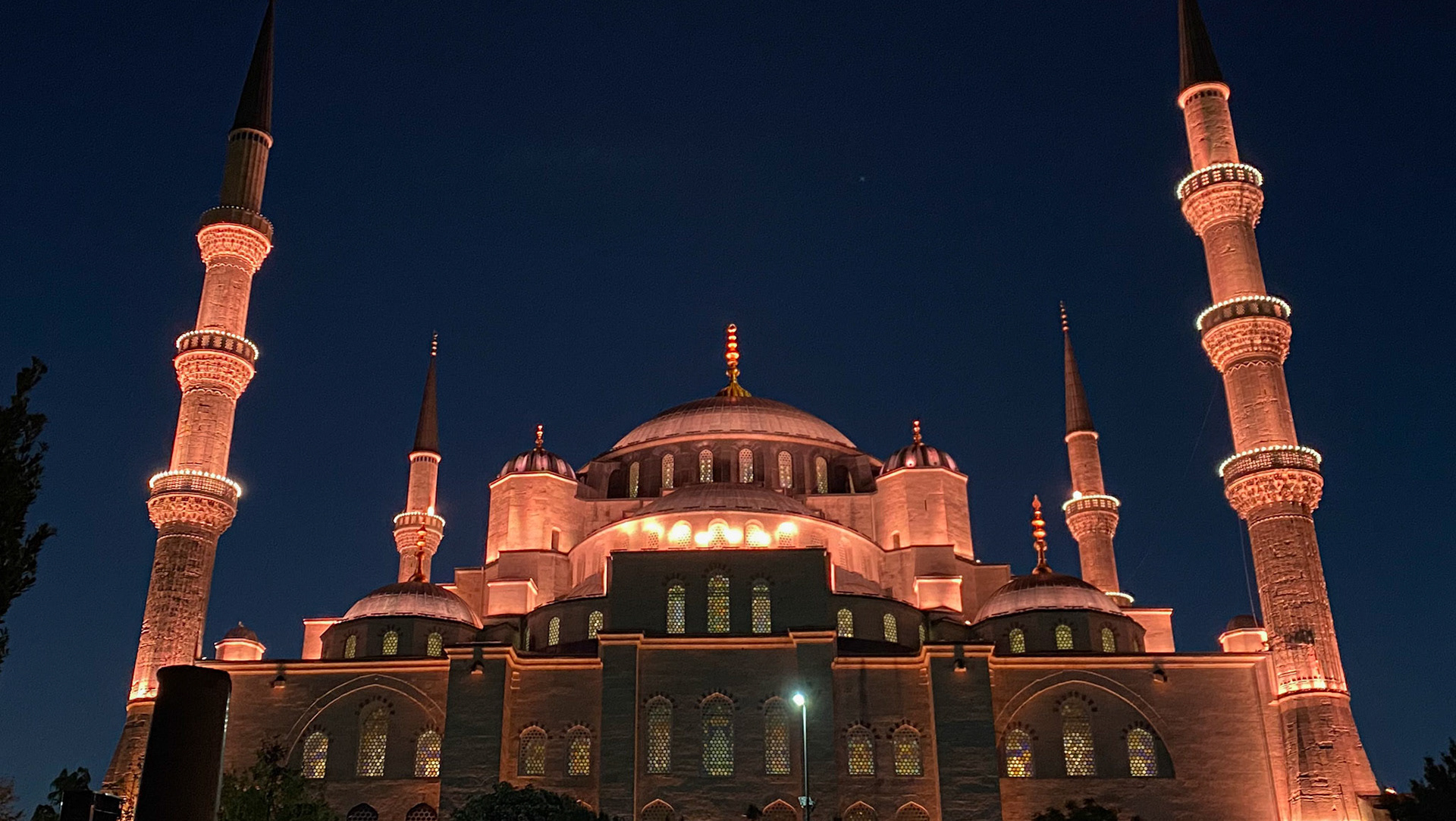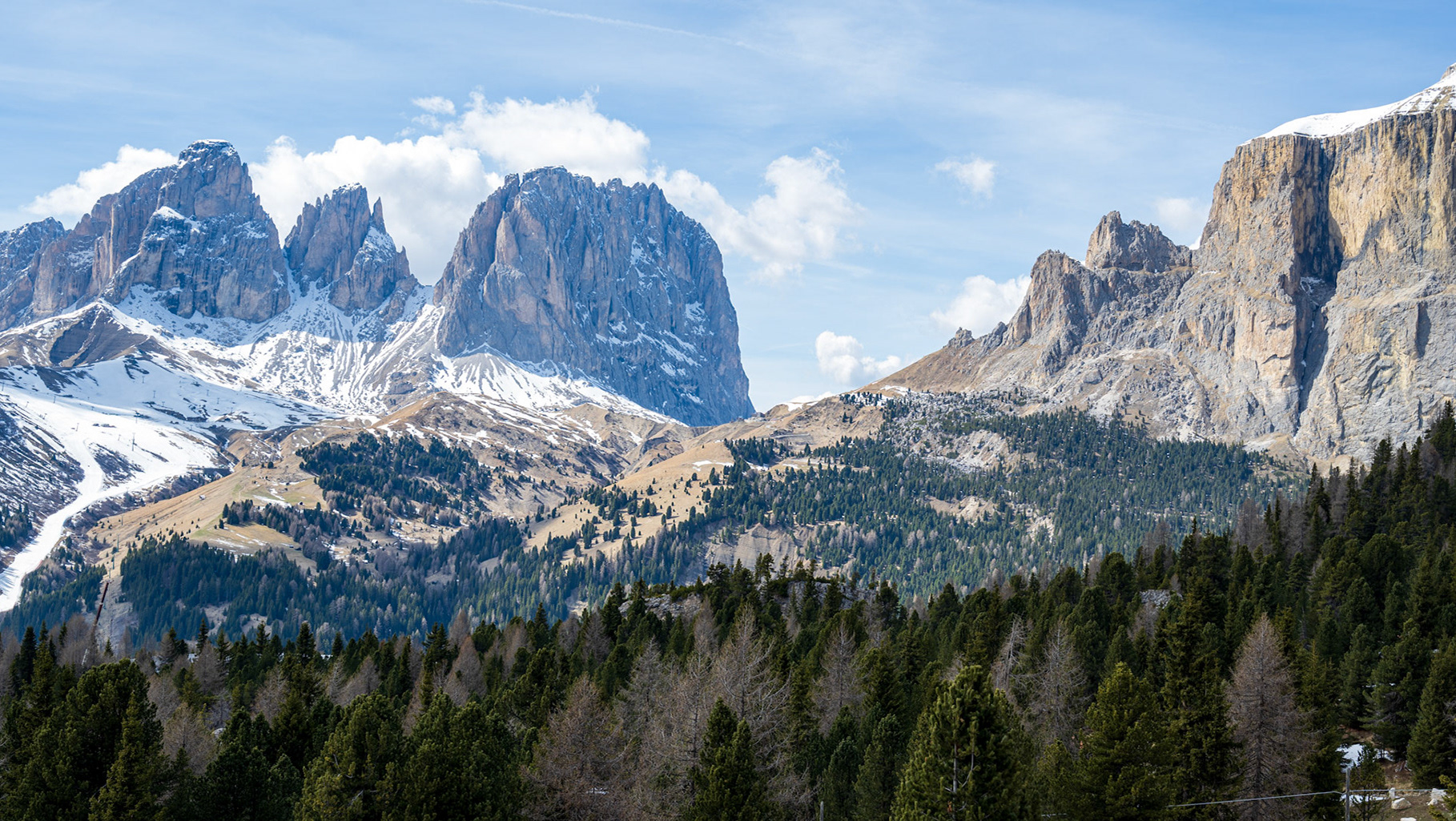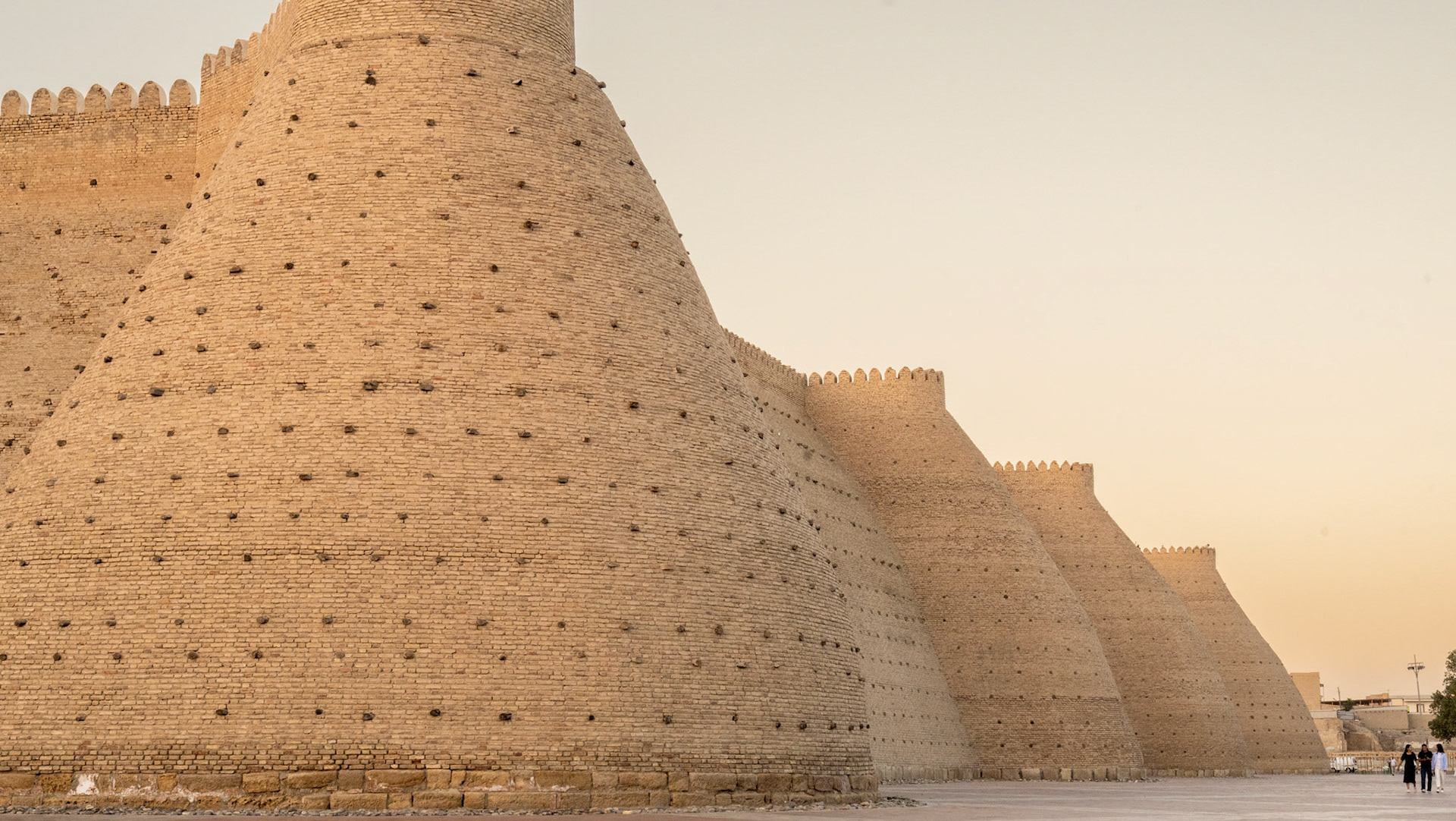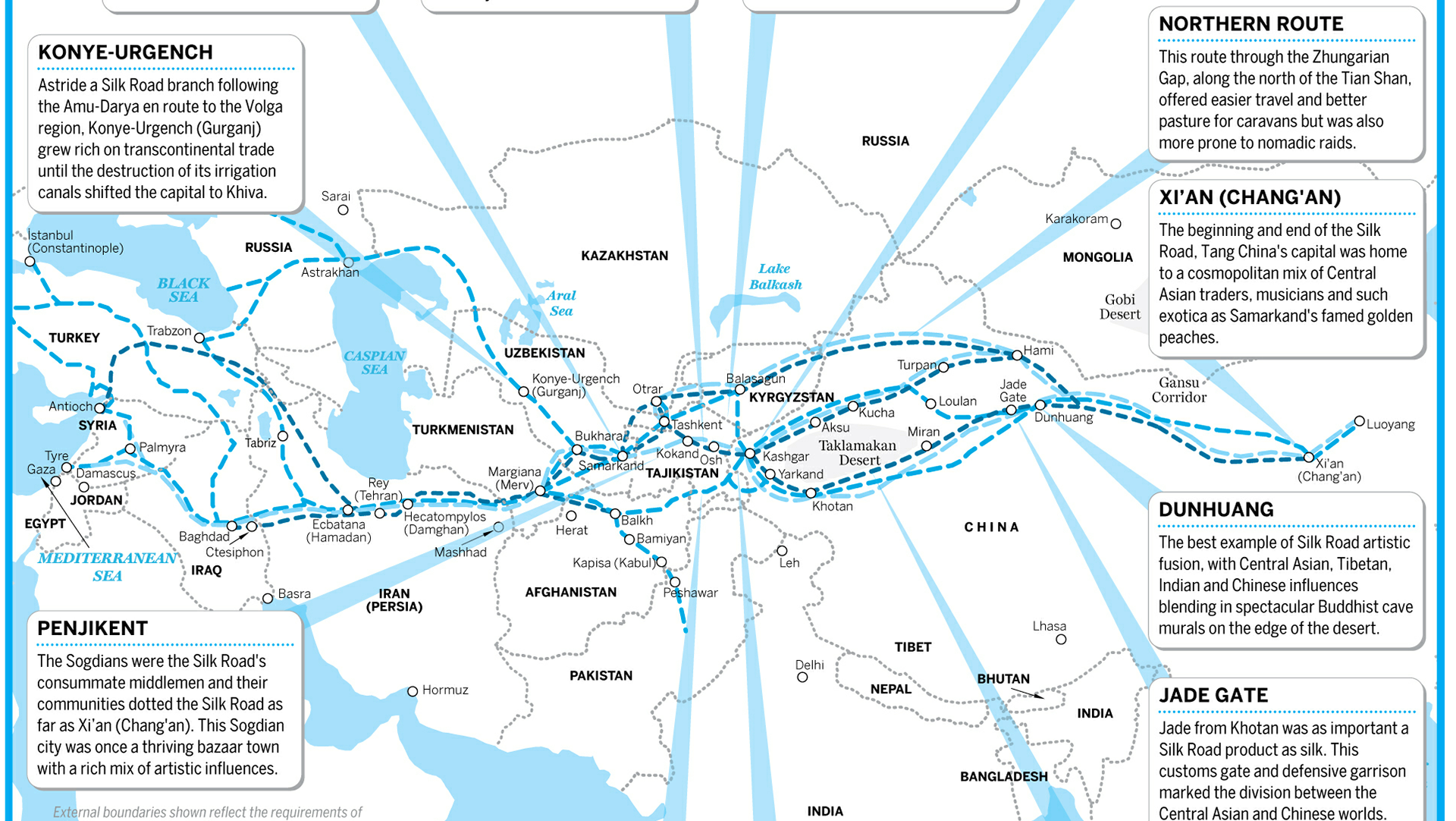I'm truly excited about visiting Georgia! It's a completely new country for me, boasting a rich history, breathtaking mountain landscapes, and a vibrant food and wine culture. Georgia seems to have everything I could ask for!
Day 34 - Ardahan, Turkey to Zugdidi, Georgia
We left Ardahan with the sun shining brightly, making everything look more beautiful. As we rode across the plateau for several kilometers, we noticed the absence of trees, with only grass-covered landscapes and exposed villages visible from a distance.
After crossing the pass, the scenery changed, becoming more hilly and adorned with trees. We soon reached the Turkey/Georgia border. On the Turkish side, we had to navigate through three different buildings, zigzagging between them, in order to finally exit the country. Fortunately, entering Georgia was a relatively easy process.
Almost immediately after crossing the border, we found ourselves off-roading, taking a "shortcut" for the people who have already ridden with me . It was a winding and rocky dirt road, serving as our welcome to Georgia. As we ascended, the terrain became muddy, and we encountered a cattle herder with his cows along the trail.
[DIrk’s own words] “Suddenly 2 German shepherds shot out amongst the cows and started chasing me at speed barking loudly and showing their teeth; I started to speed up in the hope of losing them but could only go so fast so not to crash on the sometimes muddy and otherwise very rocky road; no luck, these dogs were fast and were not going to give up; one of them eventually bit me just above the boot on my right leg; oh no, I don’t have a rabies shot! A third German Shepard was chasing Jean-Luc.
We eventually lost the dogs and I stopped to take a look at the potential damage since the location of the bite was quite painful; luckily the dog did not manage to bite through my motorcycle pants and I only had a skin abrasion where I was bitten.”
We continued our journey on a predominantly rocky road through the trees, navigating numerous switchbacks that led us higher and onto even rockier terrain.
Passing through the Borjom-Kharagauli National Park, we emerged from the trees to be greeted by a grassy alpine landscape, with snow-covered mountains visible in the distance. Riding along the ridge offered us spectacular views. We continued on a twisty road lined with trees until we began passing through several small towns, all of which seemed to be growing grapes.
If in Turkey many dogs were on the roads, in Georgia it’s cows! They walked on the roads, lay down on the roads, and left their excrement all over the place. We reached low elevation and the temperatures reached up to 34 degrees Celsius, something we were definitely not accustomed to during this journey.
We stopped in Zugdidi for the night and enjoyed our first Georgian meal at Diaroni, the best restaurant in town, specialized in Megrelian food.
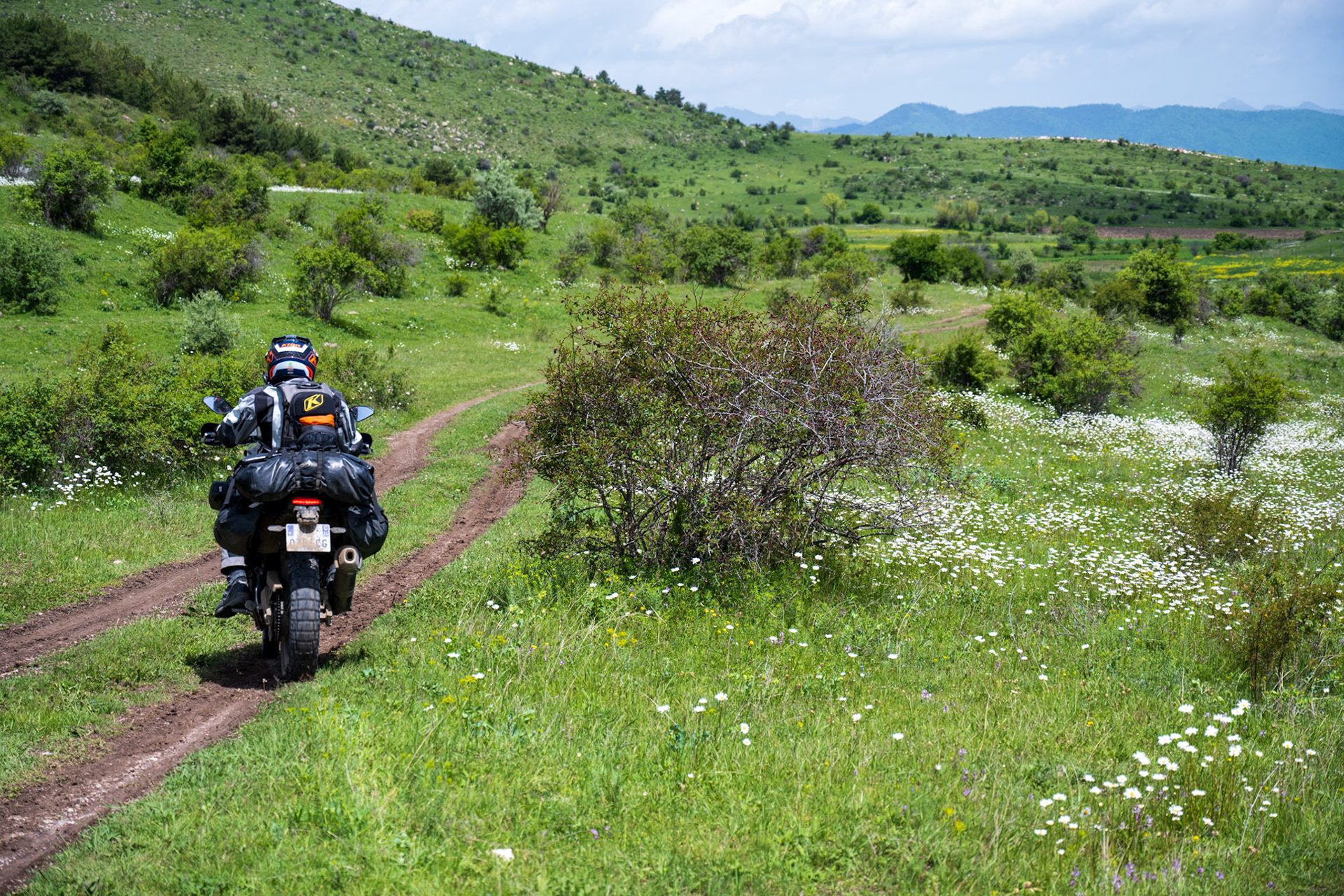
"a shortcut" 😄
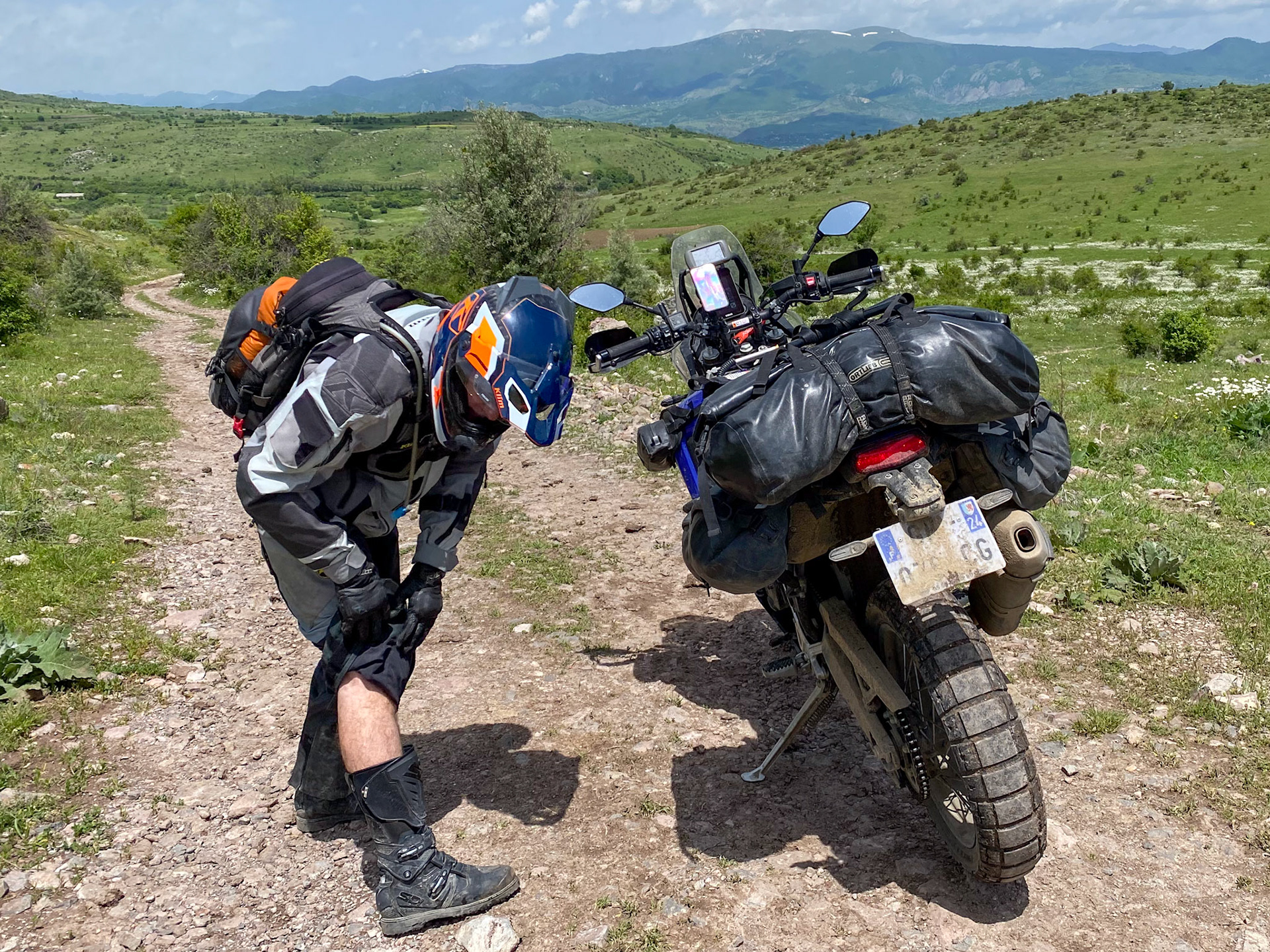
Thankfully the dog bite didn't go through!
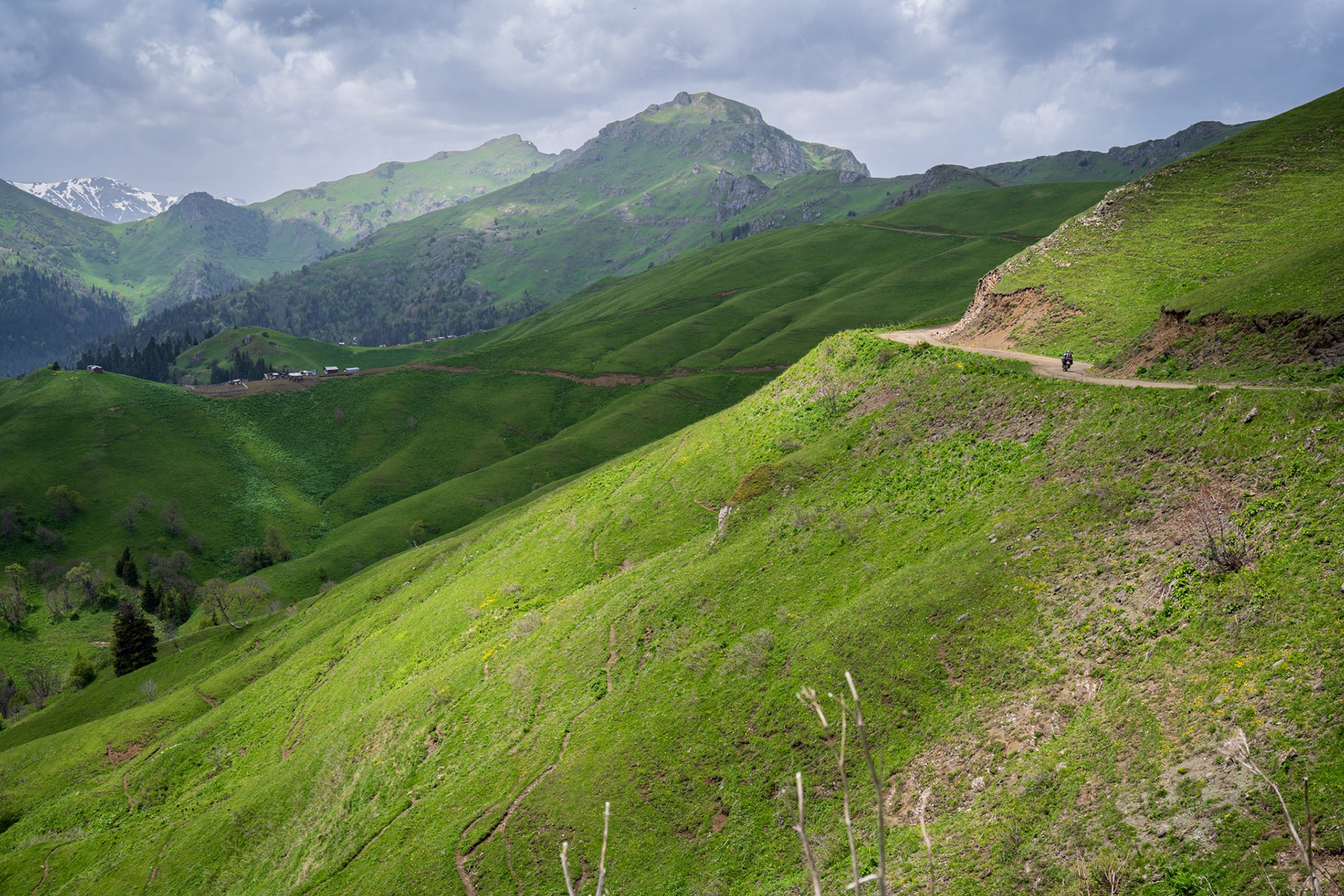
So lucky to witness such beauty!
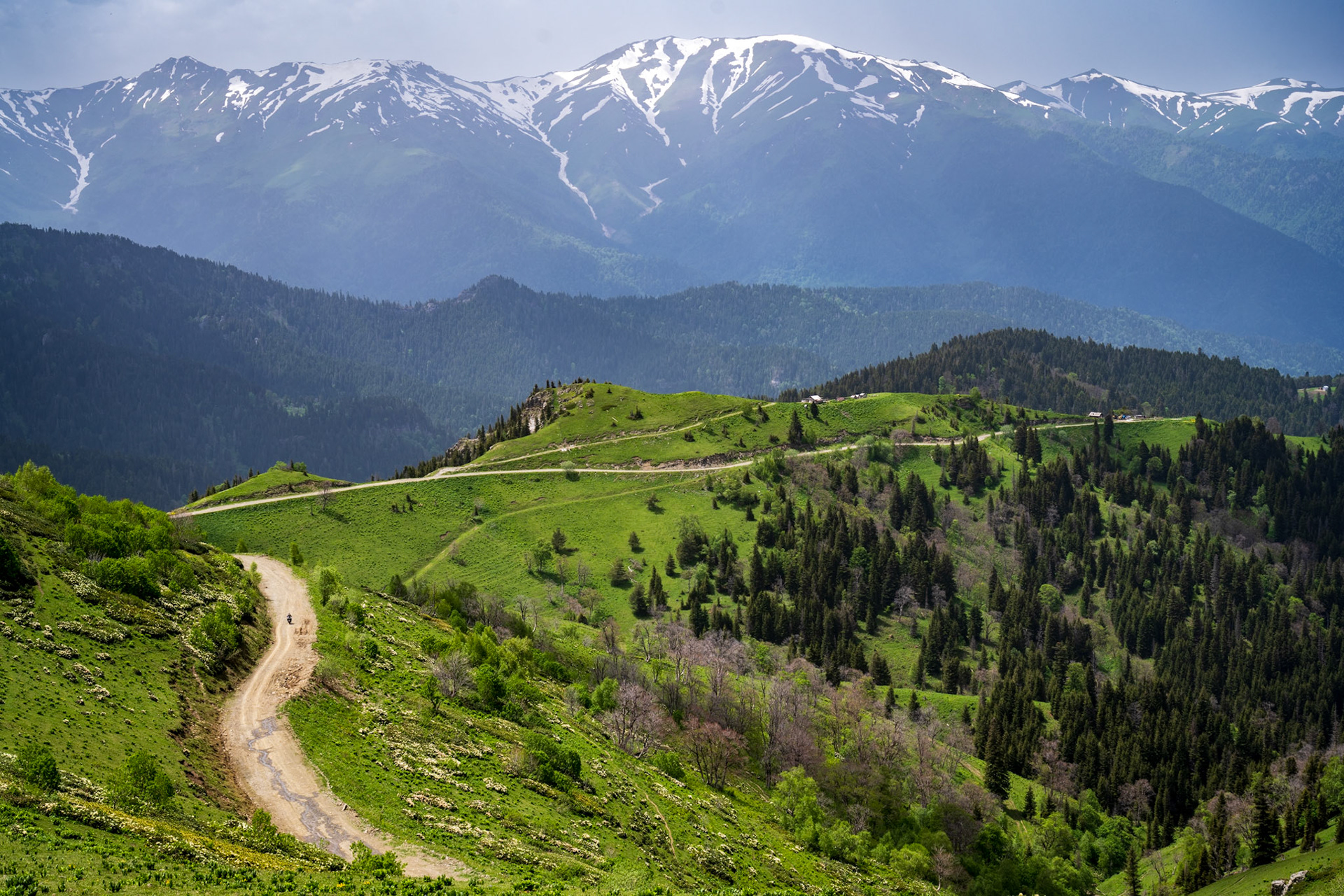
Dirk, looking so small in such immensity
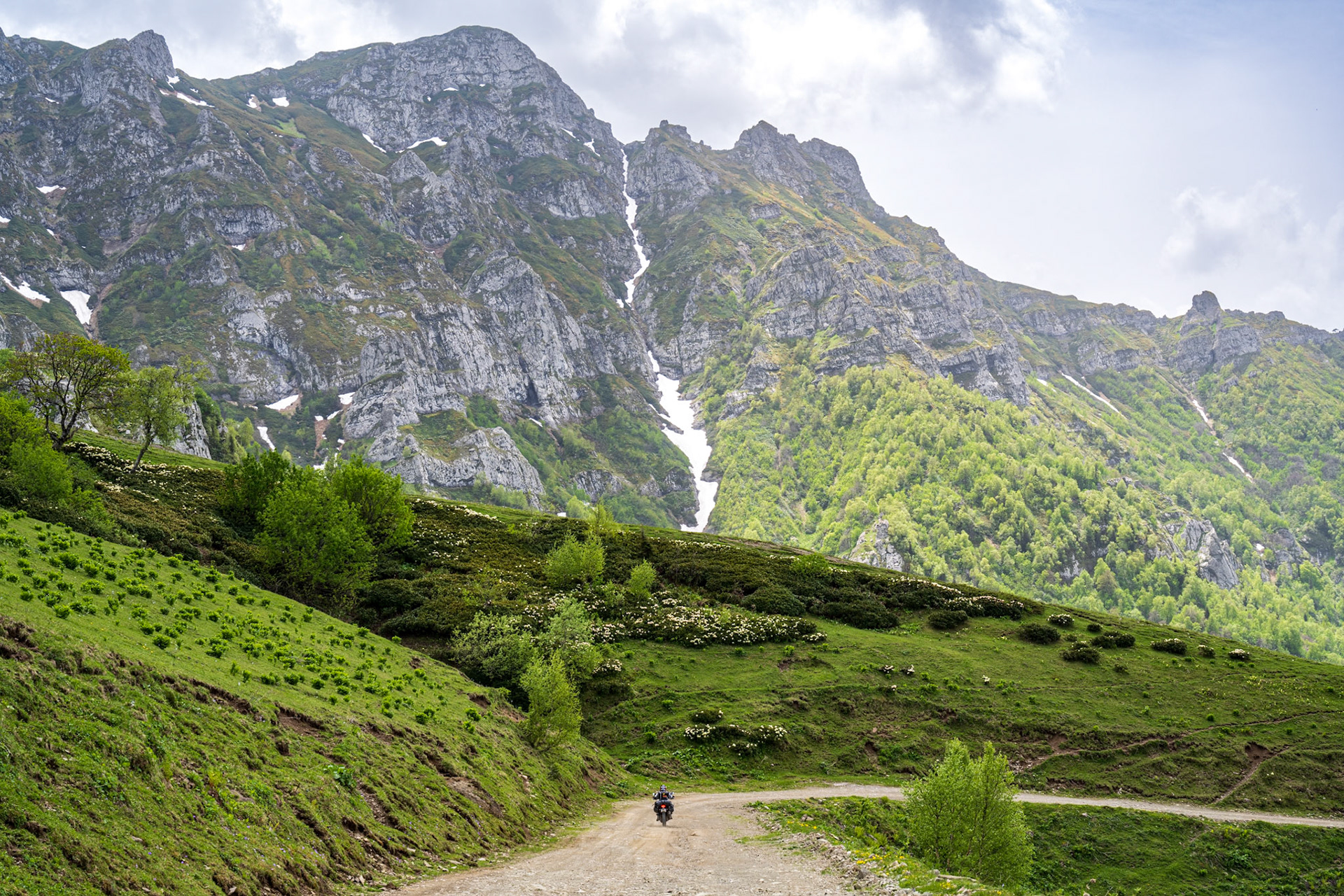
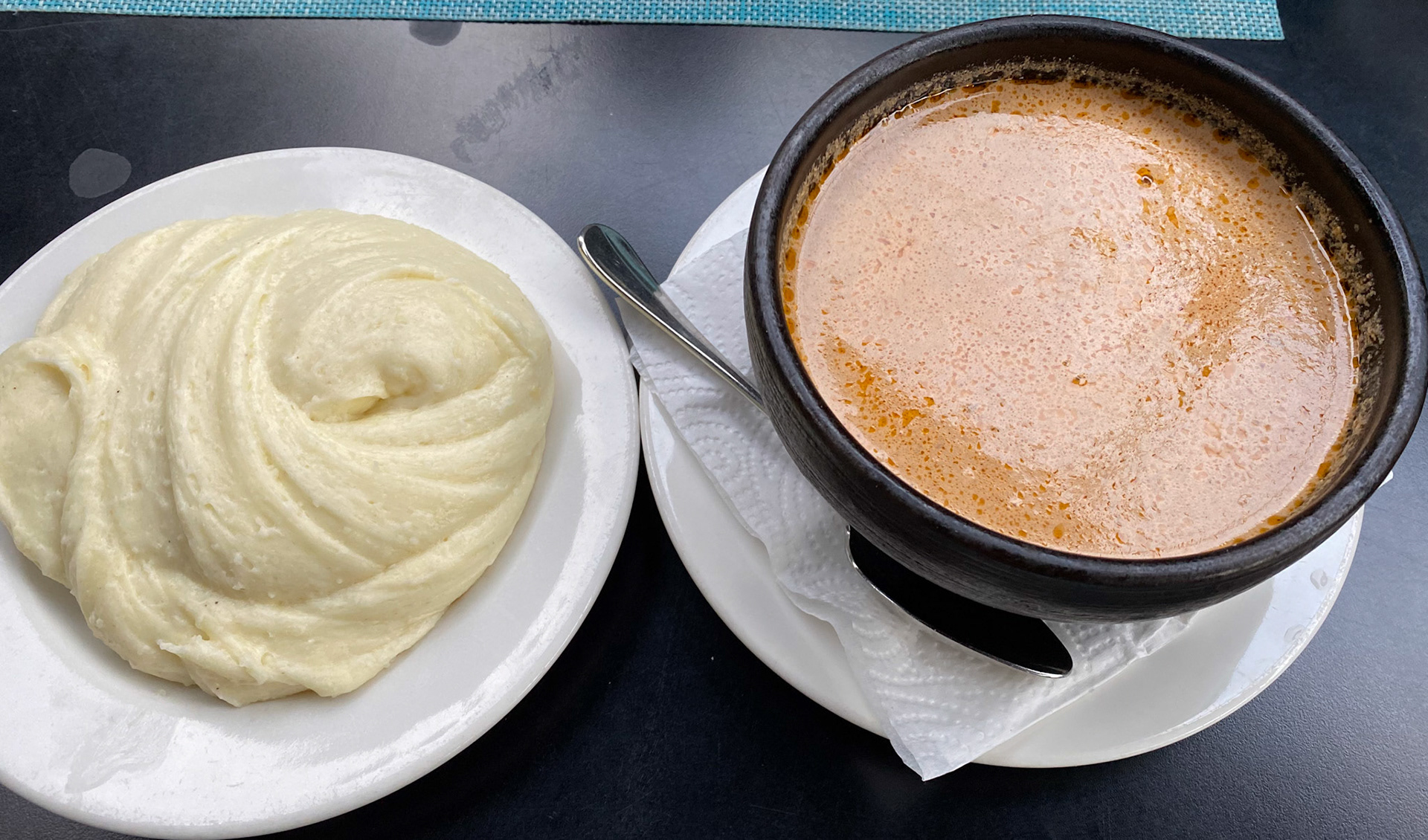
The stringy Elarji and the rich Kharcho, both delicious
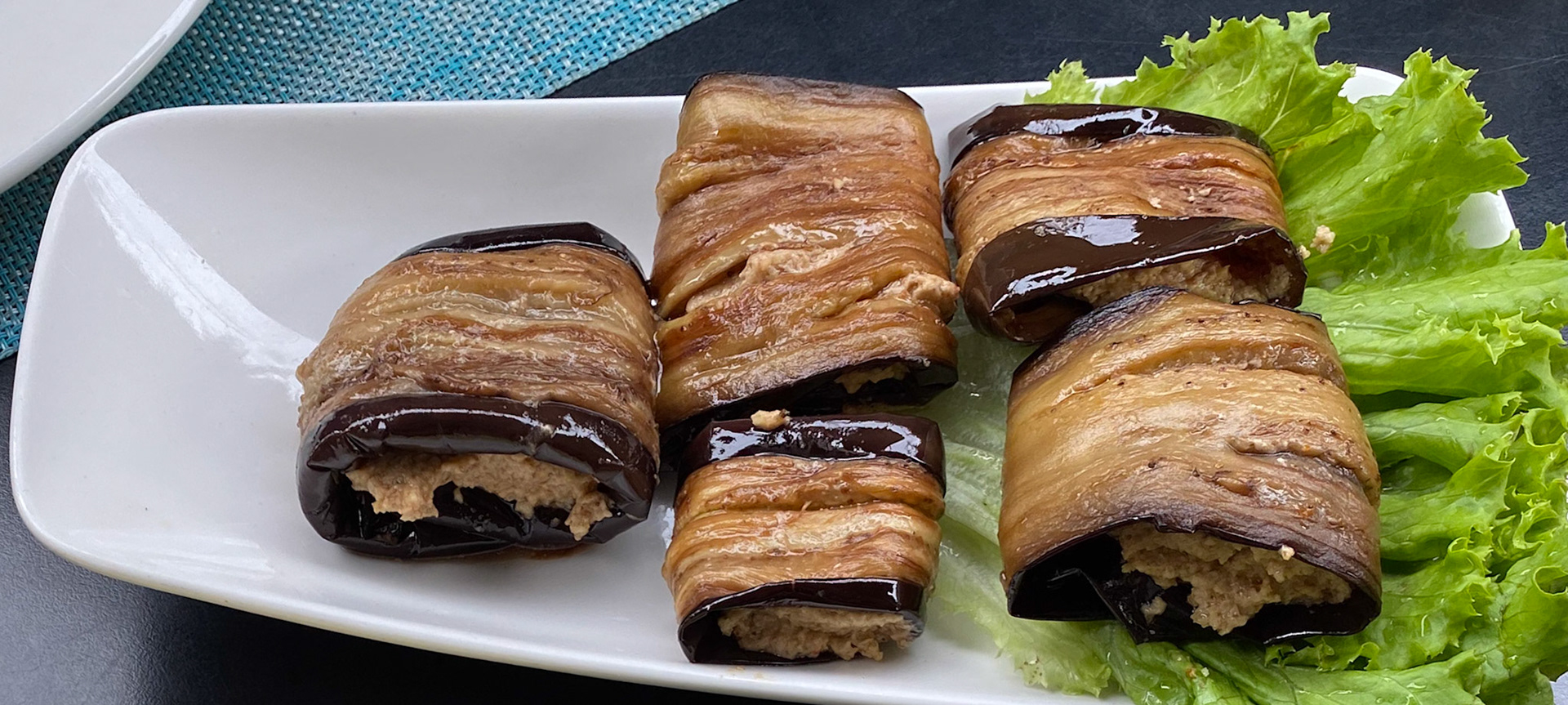
Badrijani Nigzvit is a Georgian food that consists of fried eggplant rolls with walnut (sometimes mixed with garlic) filling.
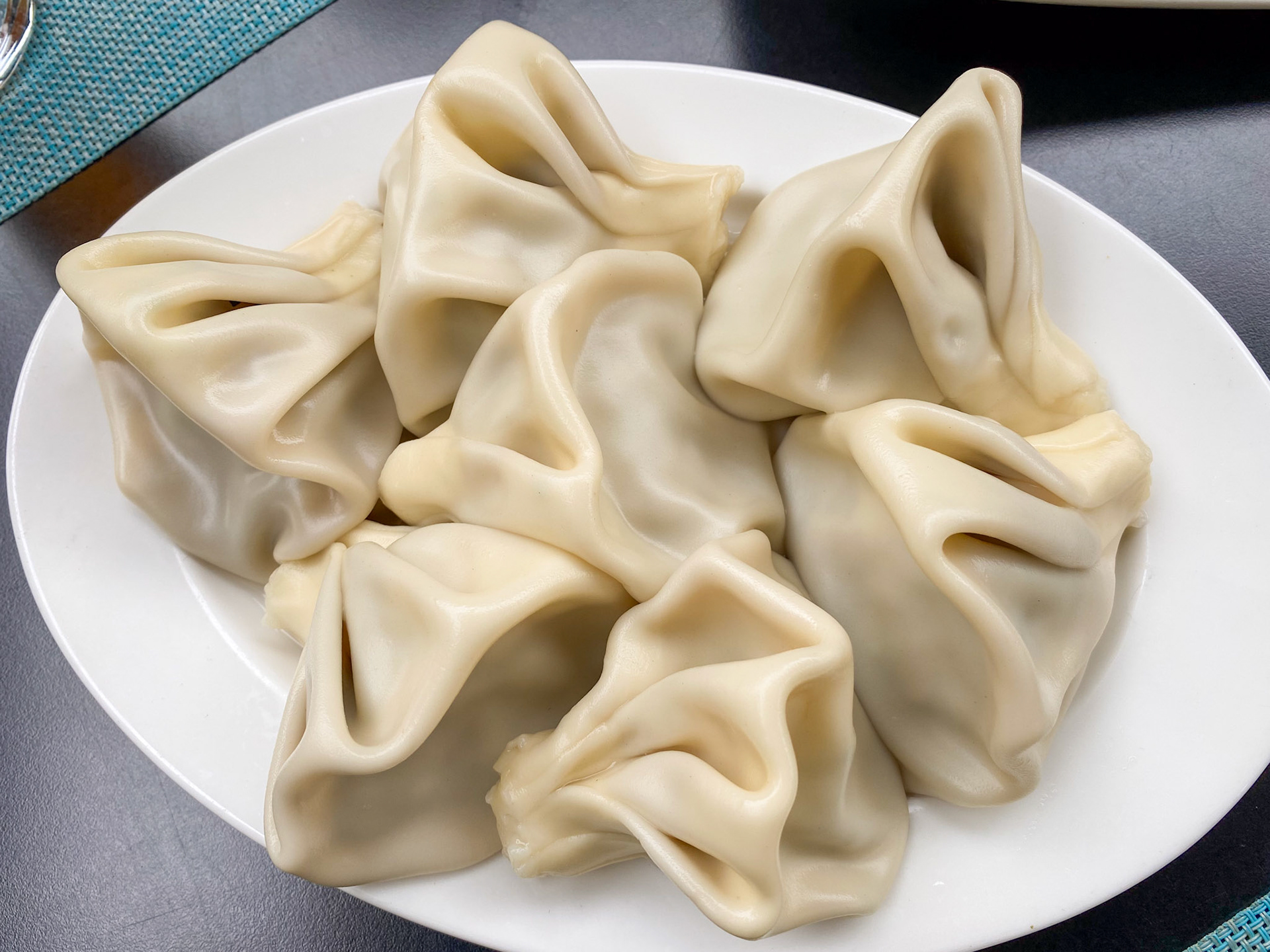
Khinkali is another iconic Georgian food. It resembles the soup dumplings you can find in China but they aren’t the same, thanks to the distinctive use of Georgian spices. Khinkali are artfully twisted knobs of dough stuffed with spices and lamb, pork or beef. They are served boiled or steamed. When the dumpling is cooked, the meat juices are trapped within.
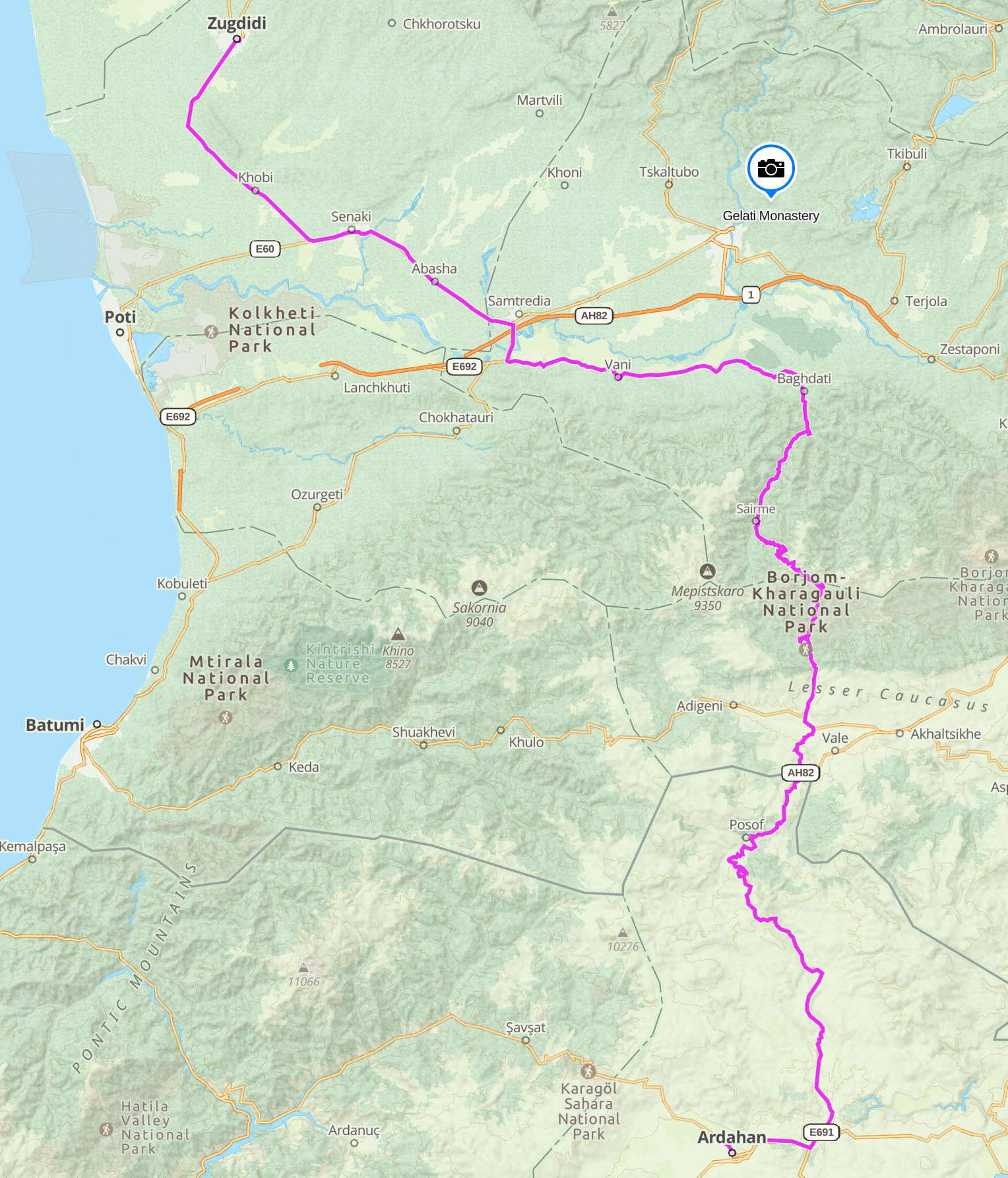
Day 34 - 320 km
Day 35 - Zugdidi to Mestia, Georgia
I woke up with excitement this morning because we were heading to the mountains and Svaneti, a region that has only been accessible to tourists since the mid-2000s. The inhabitants – who are called the Svans and are now a subgroup of Georgians – were known as fierce highland warriors and gatekeepers of the mountain passes. No ruler was able to tame this remote area. Because of their geographical isolation the Svans have their own unwritten language called Svan and most of their cultural traditions are still preserved.
During my trip preparations, I became fascinated by the towers that are found in every household in Svaneti. As the villages were too scattered to be enclosed by protective walls, each family built a stone tower, known as a koshki. These towers provided security for families and their livestock during attacks and blood feuds. They also served as a shelter for the family's most valuable possessions.
The rough and bumpy road is still an improvement over the muddy trails of the past, it has made communication easier in this region.
Upon arriving in Mestia, we were captivated by the snow-covered mountains, breathtaking alpine meadows, and the tower-houses. However, we were disappointed by the level of tourism that already exists, even though there weren't many tourists present during this season. The abundance of guest houses and vans for tourists was quite overwhelming, and I could only imagine how crowded it must be during the summer months.
We enjoyed walking through the village, particularly visiting by ourselves the interior of one of the towers. They were impressively designed for protection. Svan towers are unique to the region and were predominantly built between the 11th and 12th centuries, during the Georgian Golden Age. The upper floors of the towers were exclusively used for defense and launching projectiles.
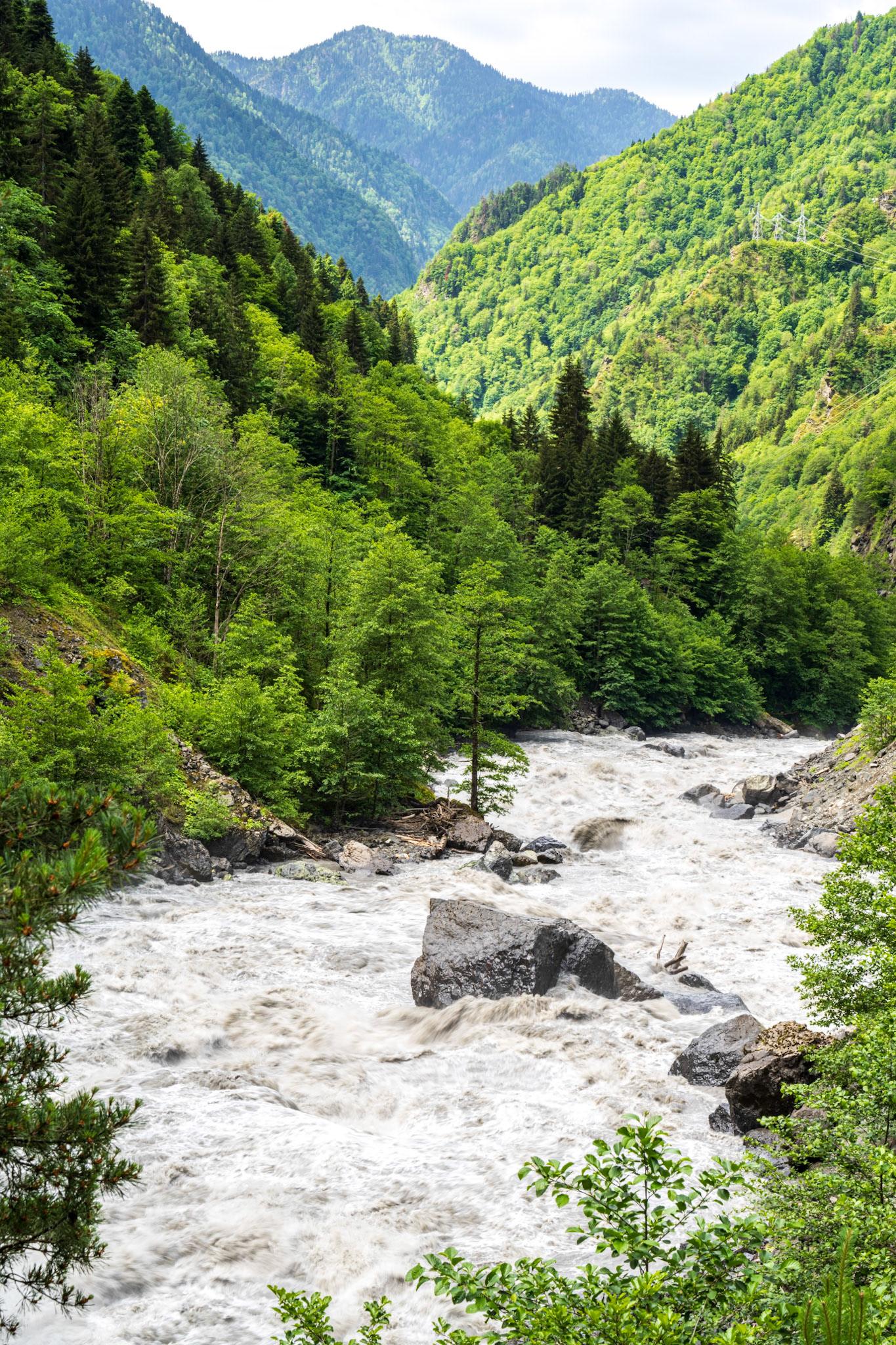
Such a raging river!
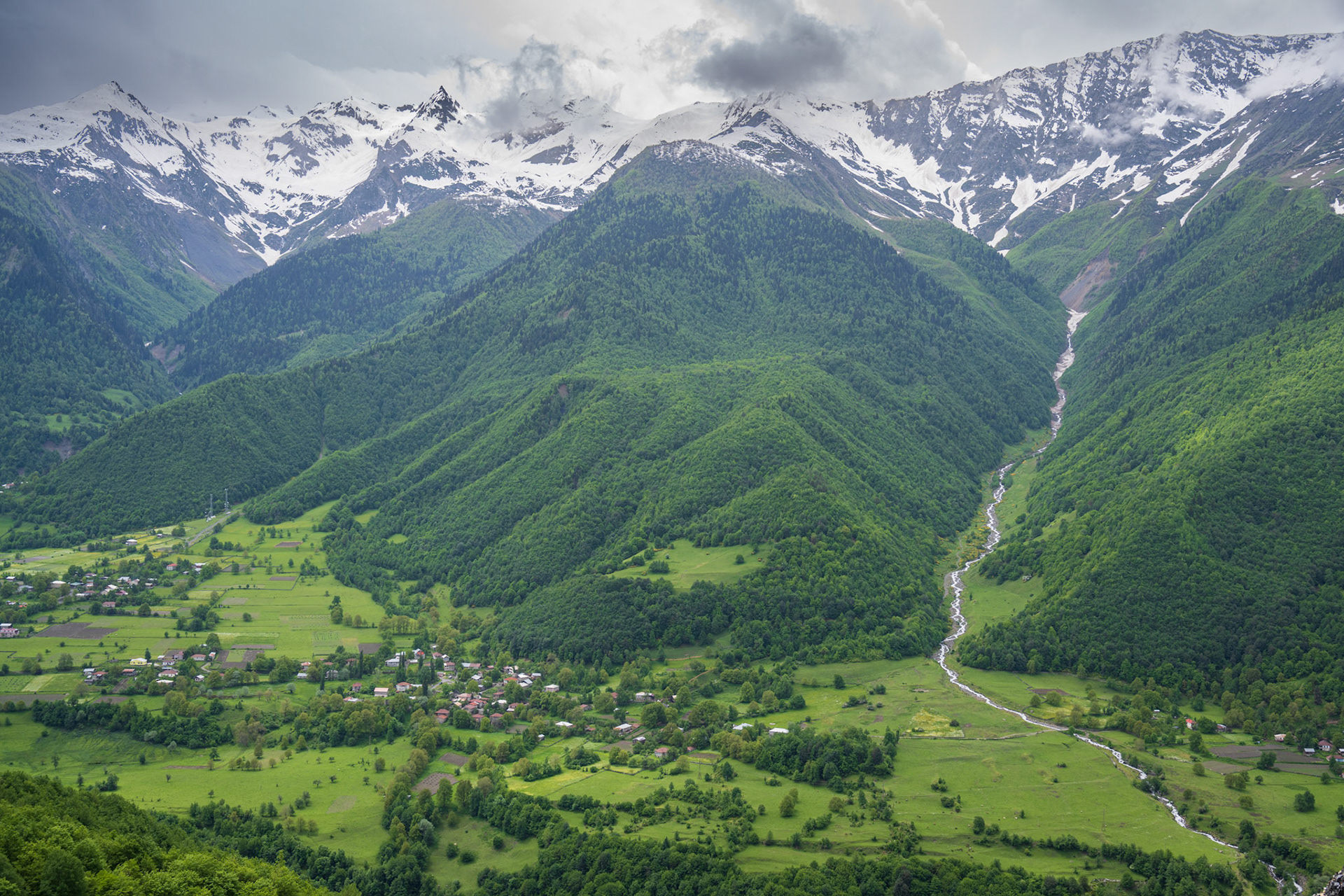
These are villages down the road leading to Mestia.
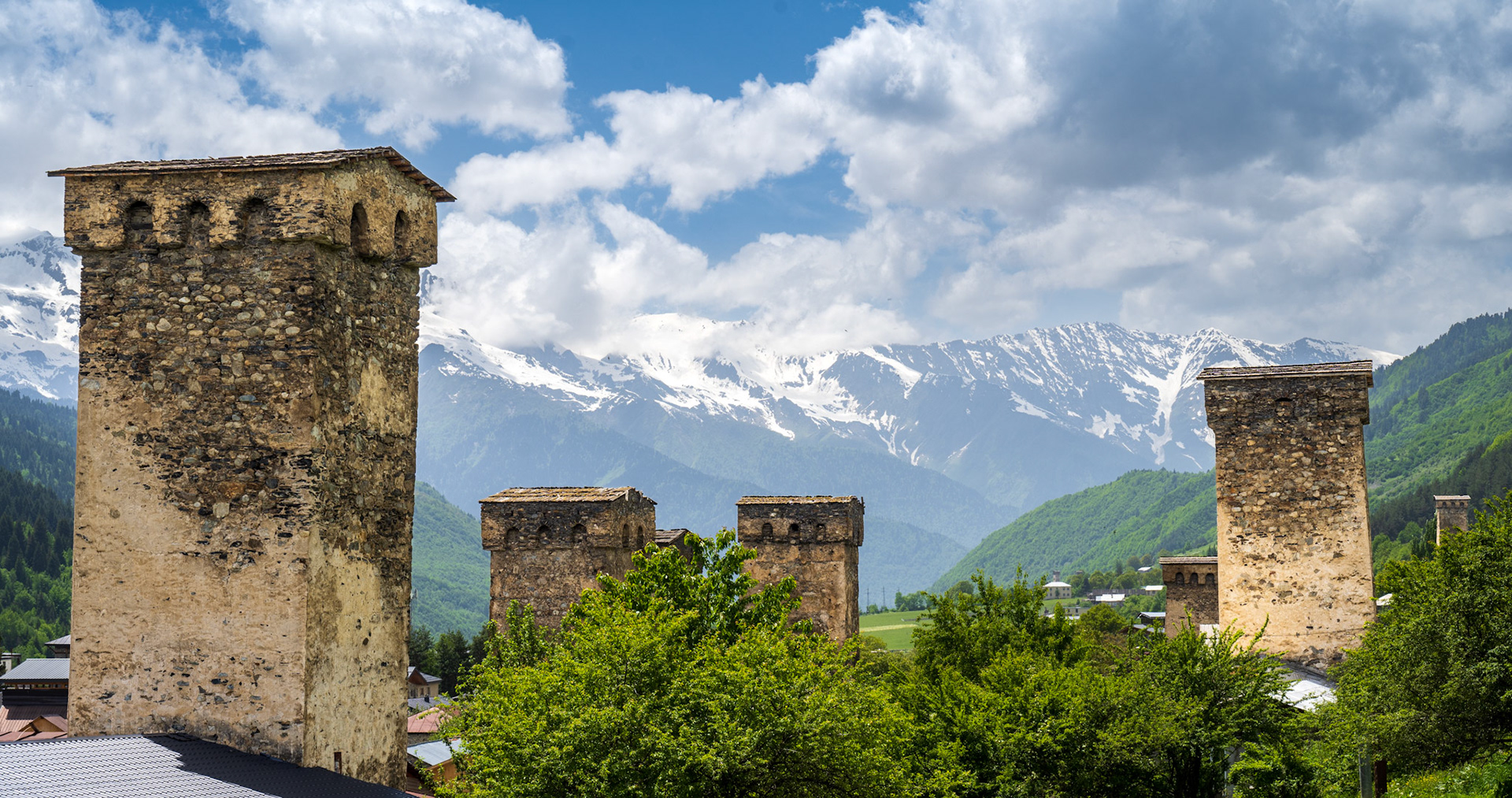
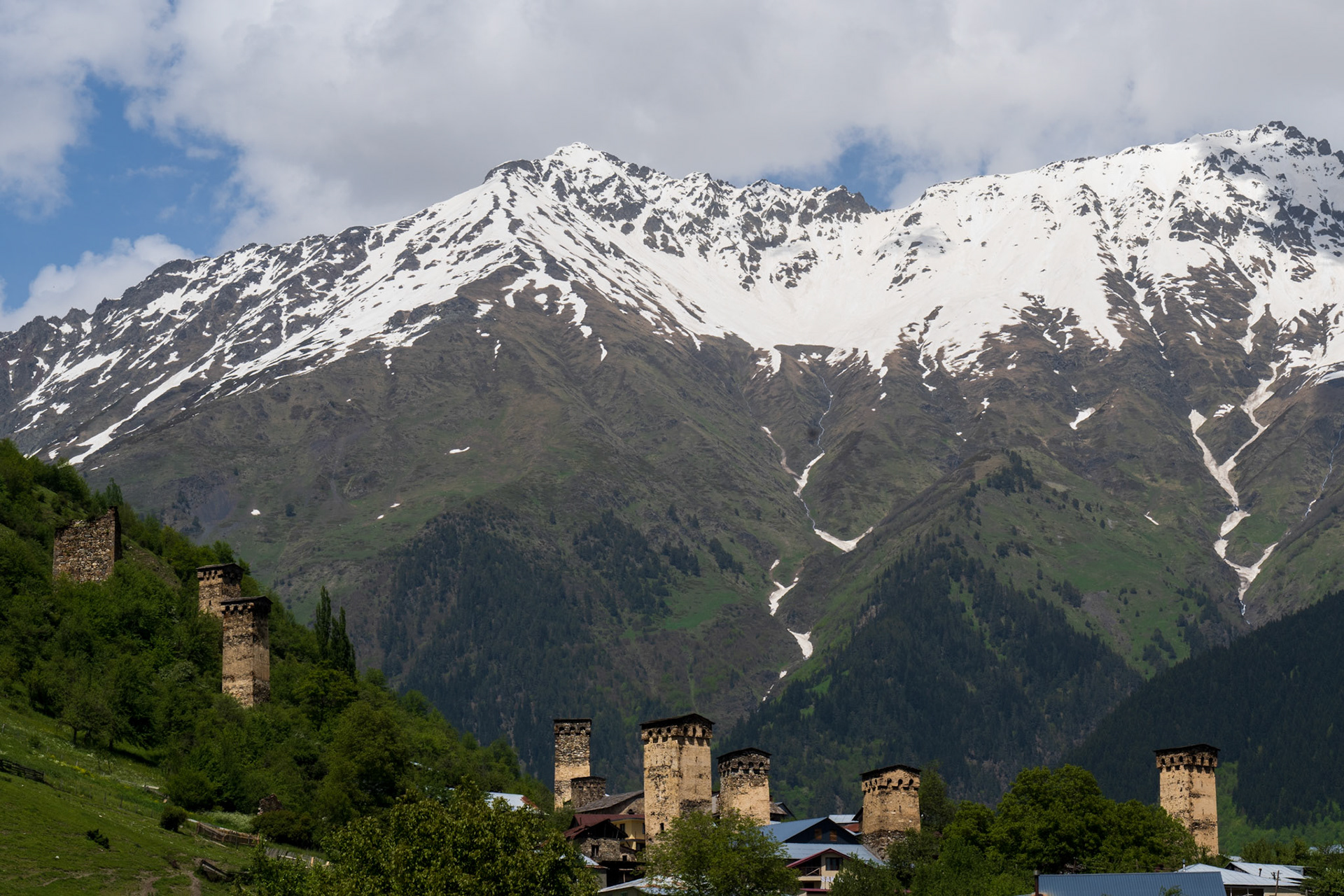
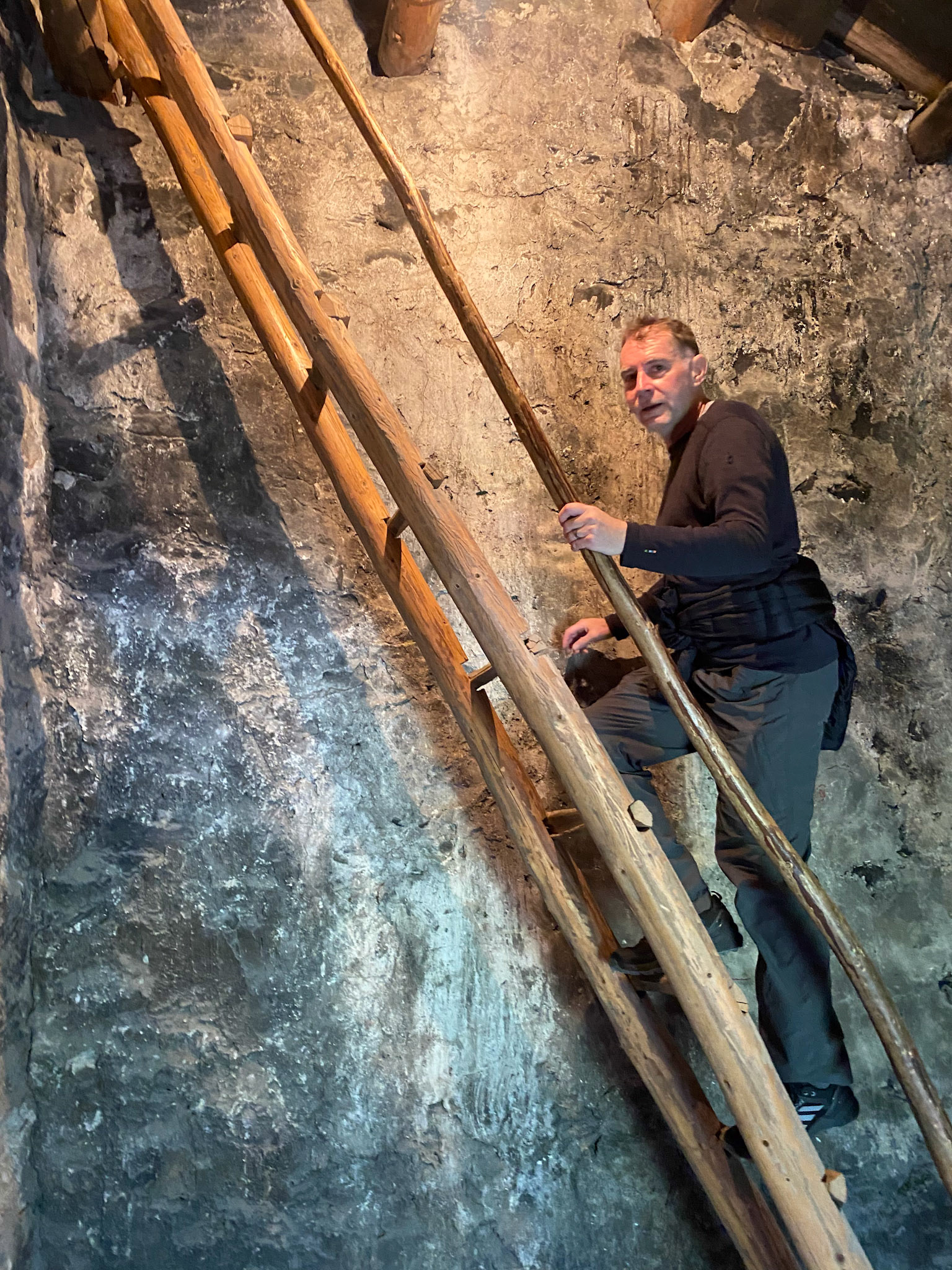
The tower has several floors, and access to it is gained using a rudimentary ladder.
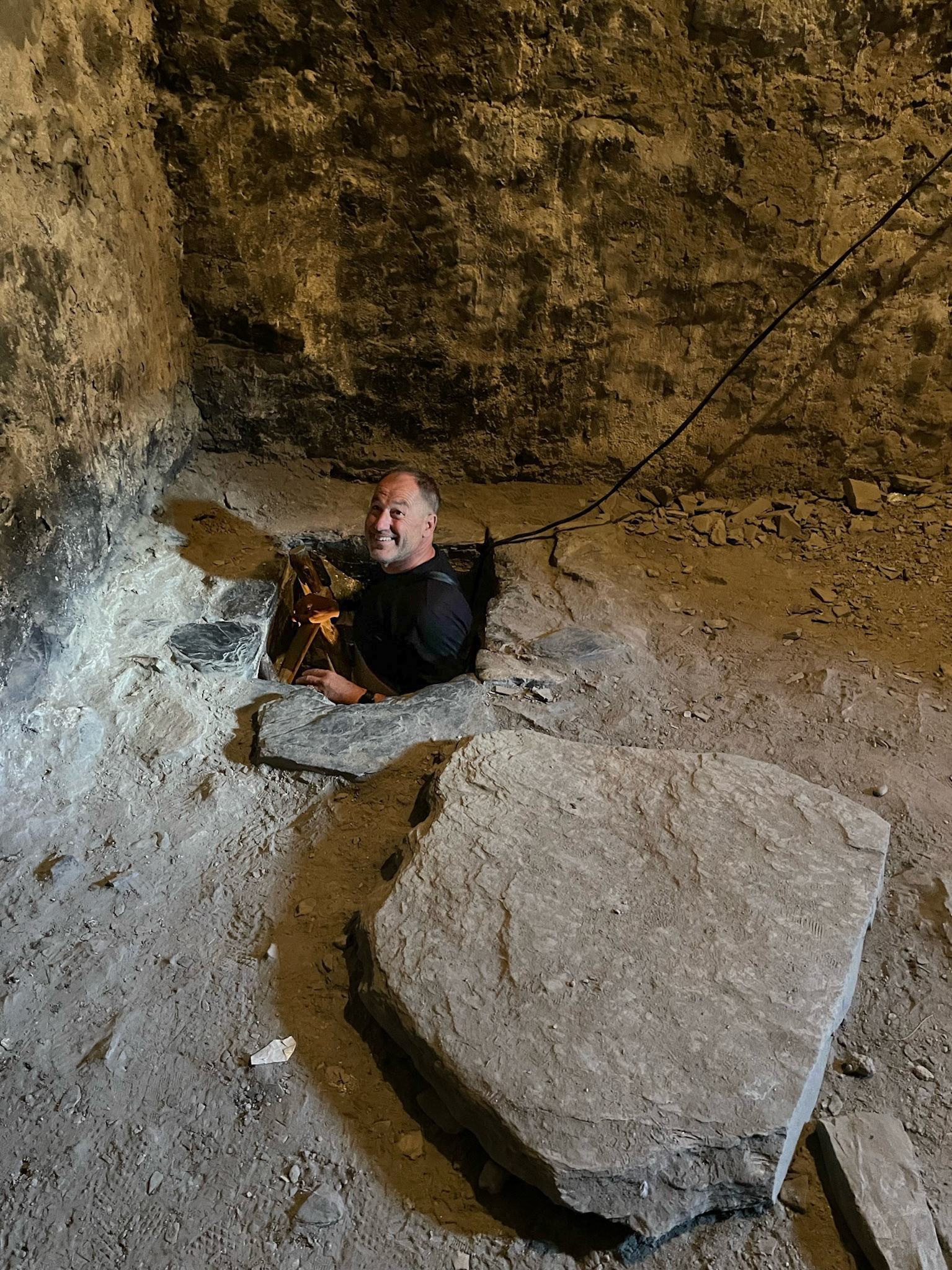
To block access in case of an attack, they would remove the ladder and place a massive stone on top of it. It is so big that it must have been installed during the construction, as it does not fit through the hatch.
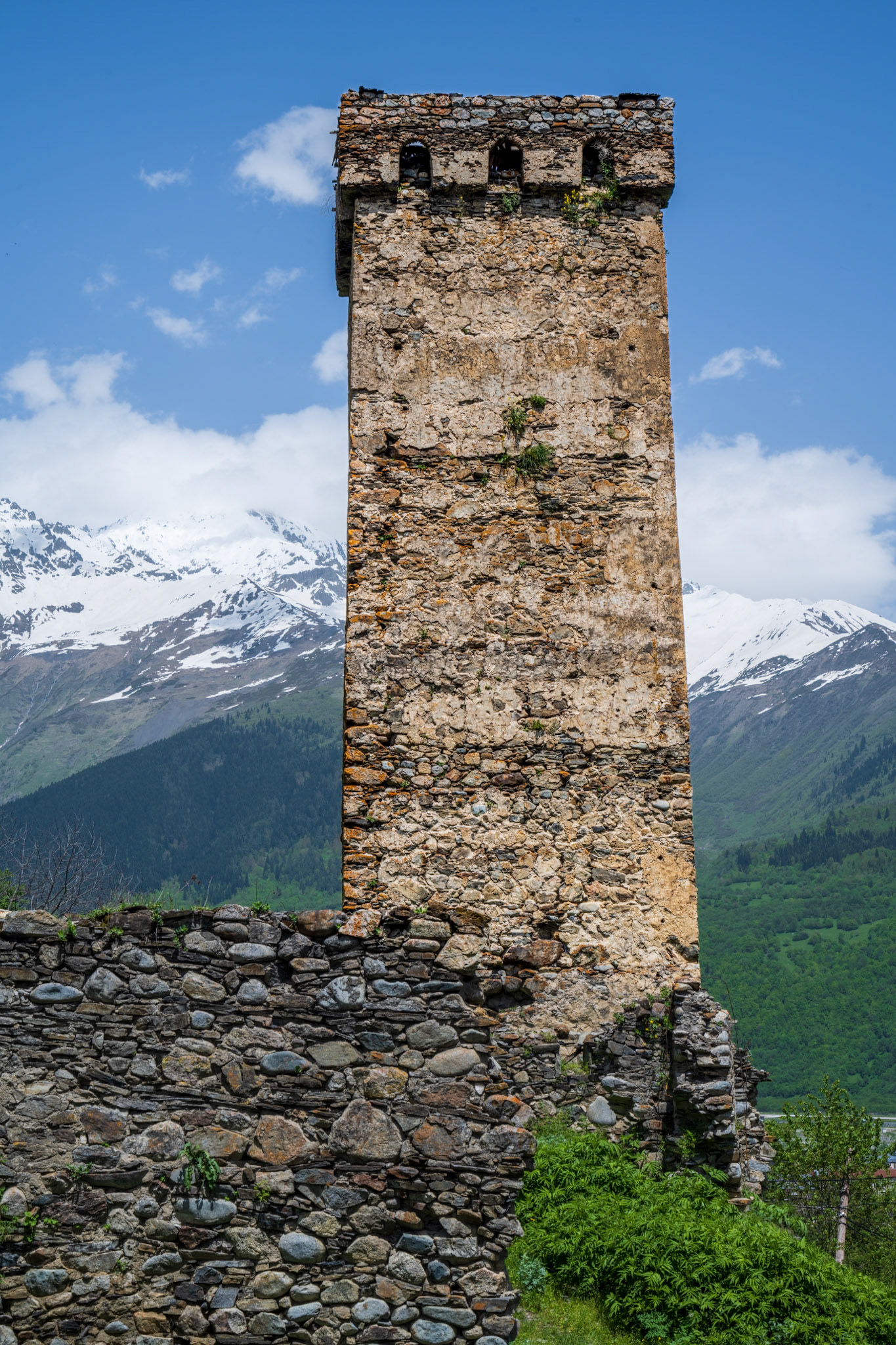
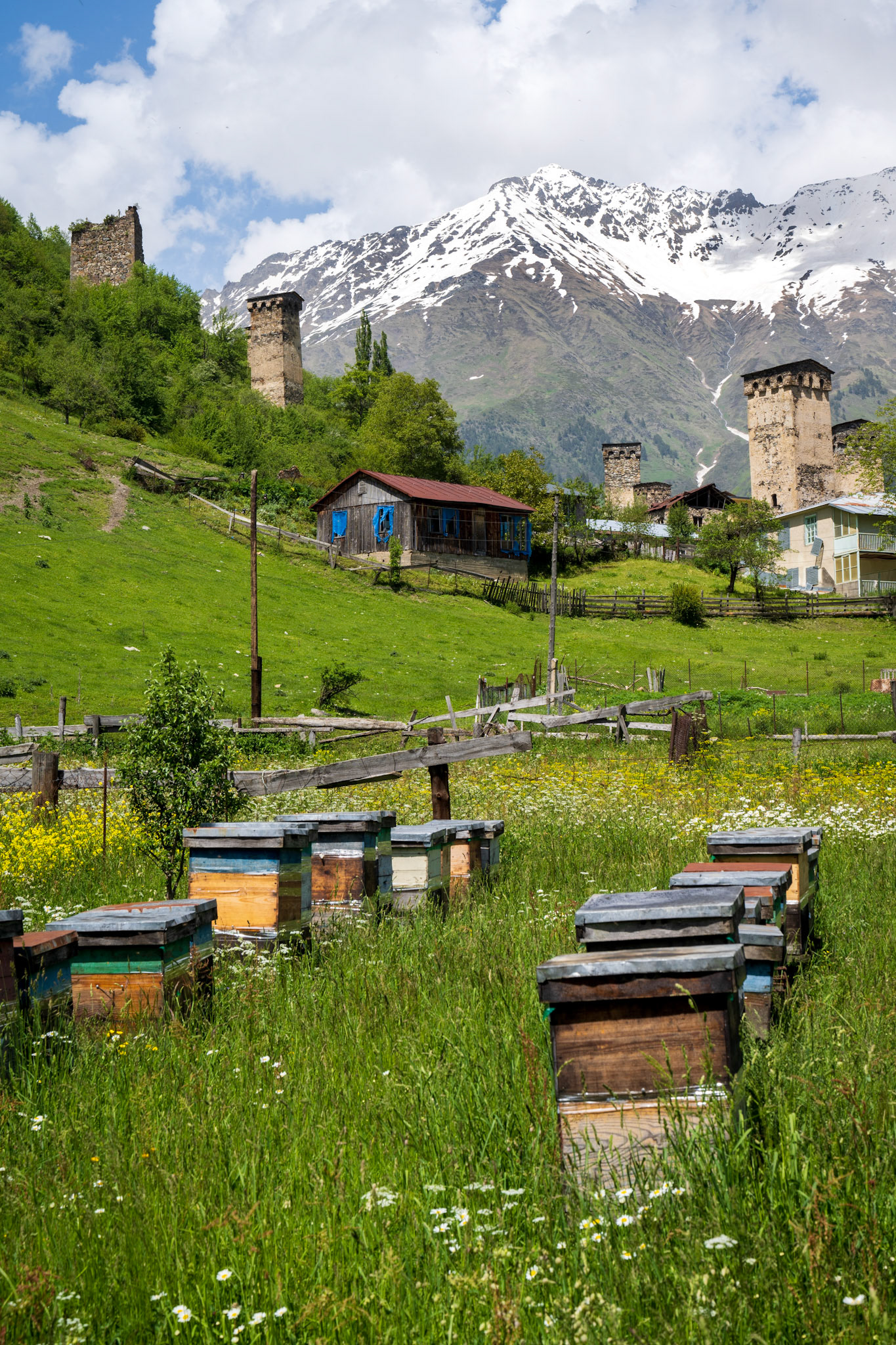
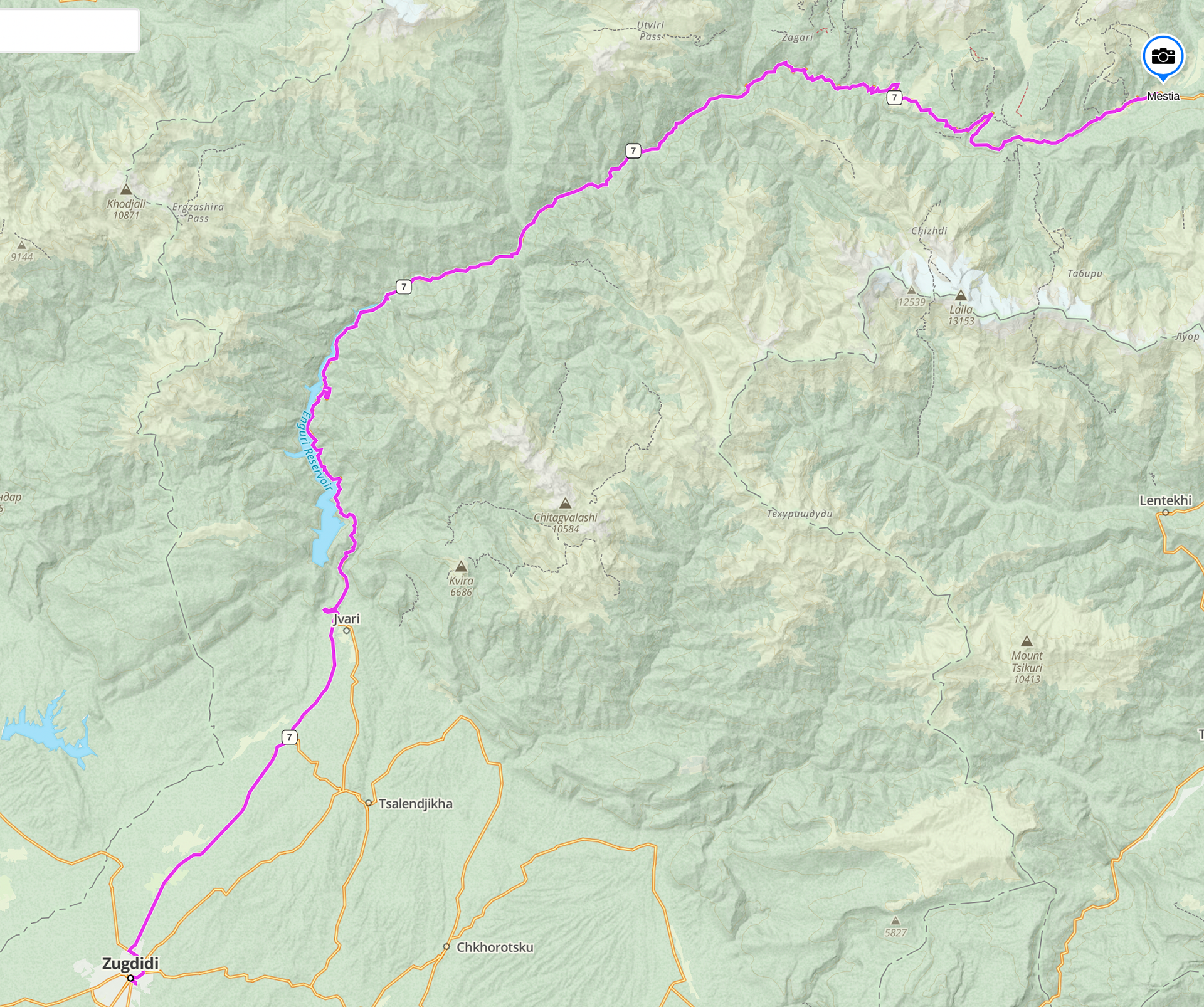
Day 35 - 140 km
Day 36 - Mestia to Kutaisi, Georgia
Our intention was to go to Ushguli and continue on the road leading South of it. Despite the likelihood of the road closure after Ushguli, we were determined to witness the charm of this UNESCO village.
We left early in the morning and headed east, greeted by a mesmerizing sight of snow-capped mountains bathed in the soft morning light. The winding road followed the river, offering breathtaking scenery along the way.
We encountered several spots where the mountain water flowed with such intensity that it spilled over onto the roadway. Around 15 kilometers before reaching Ushguli, the road transformed into a dirt path, with numerous stretches of muddy terrain.
Suddenly Ushguli unveiled itself before our eyes. Its surroundings boasted a ruggedness surpassing that of Mestia, accentuating the magnificence of the Svan towers. It was a sight to behold, lost in the mounts at 2100m of elevation.
Crossing the river, we found ourselves in the inhabited part of Ushguli, where numerous towers stood. Ushguli is one of the highest continuously inhabited settlements in Europe and we eagerly explored the narrow, rocky, and very muddy couple of streets, on our bikes.
That’s when we both had our first LOB (Loss Of Balance ) of the trip. We needed an audience for that and the neighbors were entertained by the show .
We asked 3 different times to the locals if the road past Ushguli was open since this was our way out; unfortunately they all confirmed that the road is currently not passable
Having no choice but to retrace our steps down the mountain, we sought an alternative destination for the evening. We selected Kutaisi as our new evening destination and turned south along some great country roads.
En route, we made a stop near the entrance of Martvili canyon, that was nice seeing.

The road to Uhguli is still in poor conditions after the winter
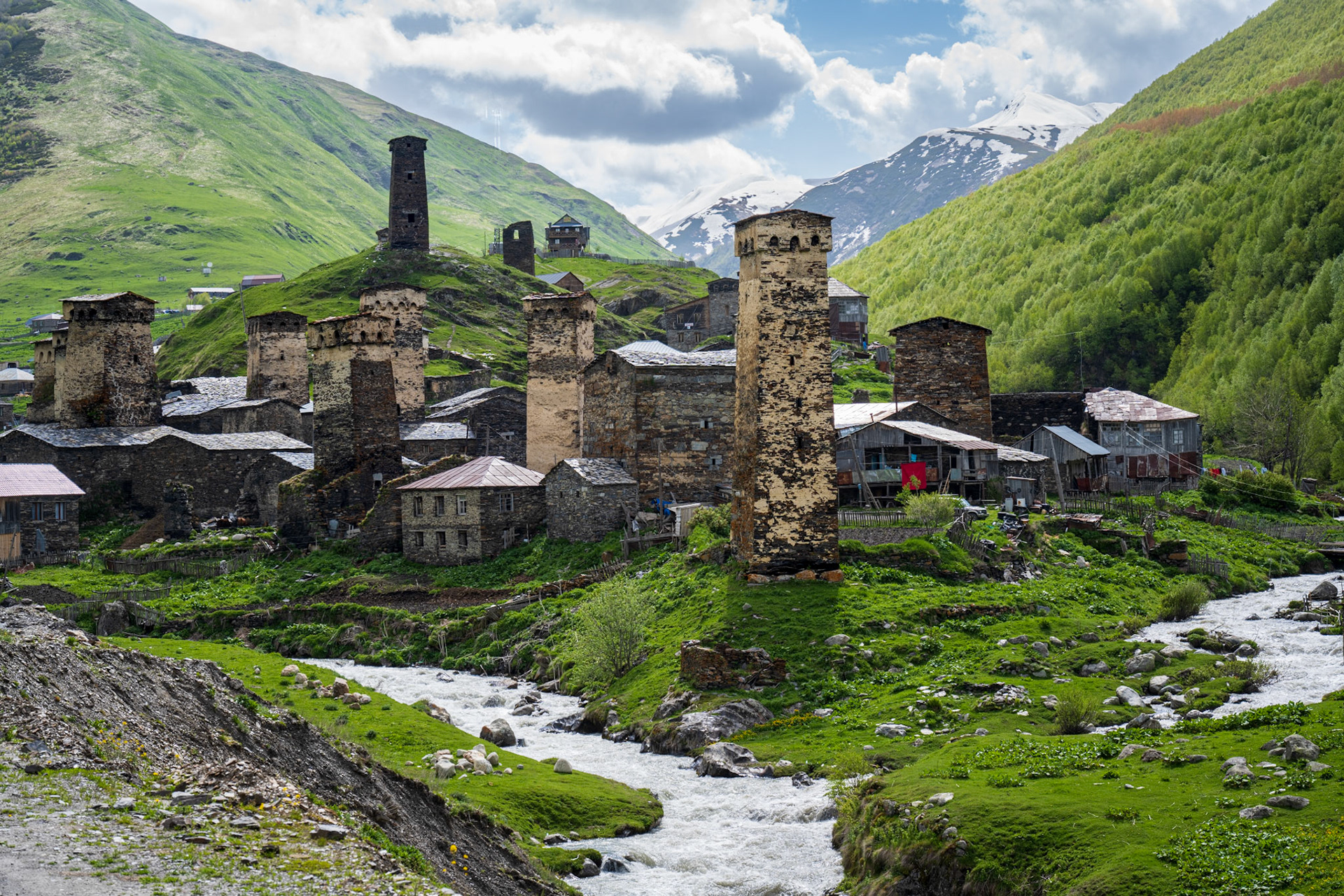
Arriving in Ushguli
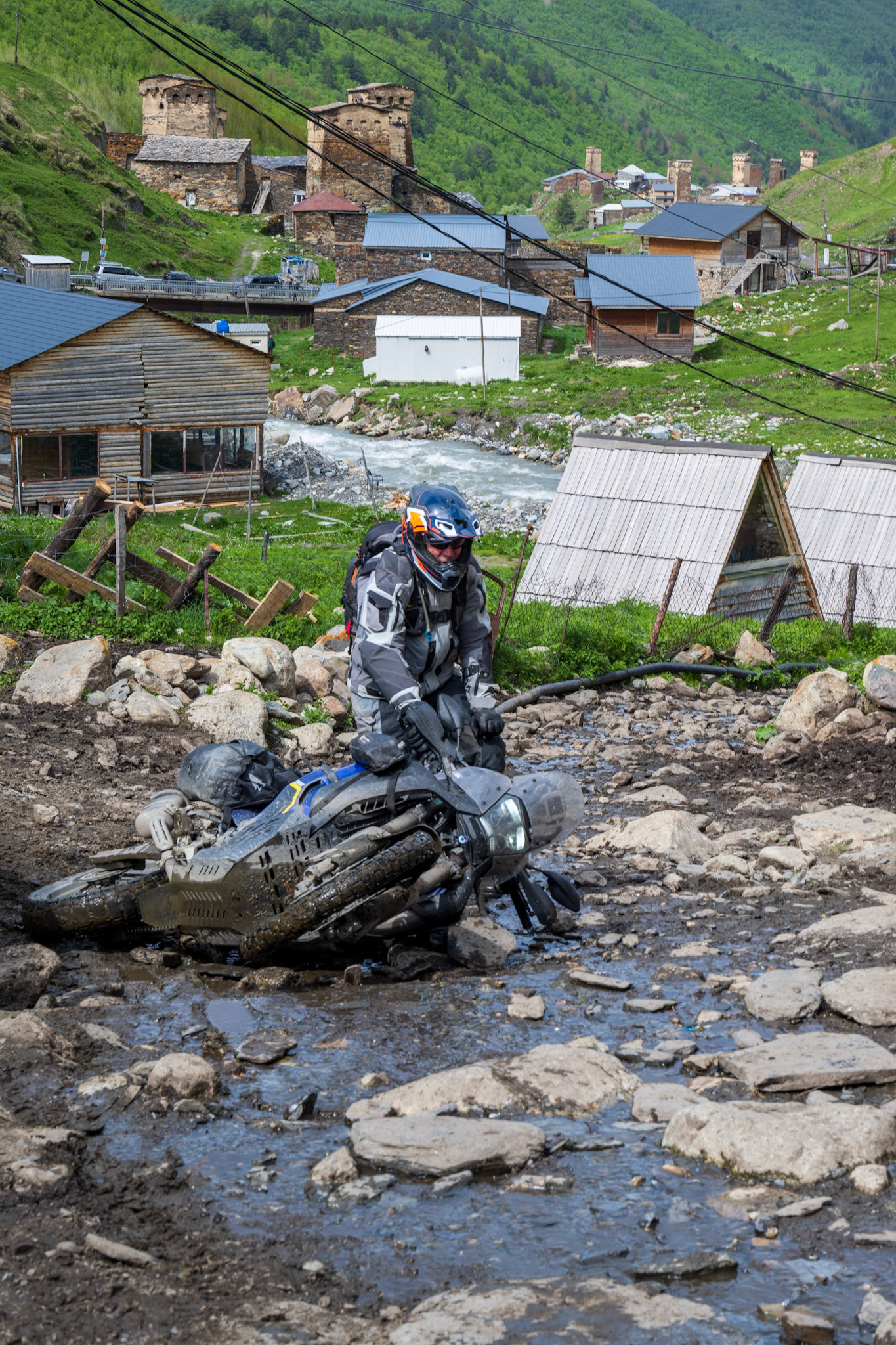
We both had our first LOB (Loss Of Balance) at a 10 seconds interval
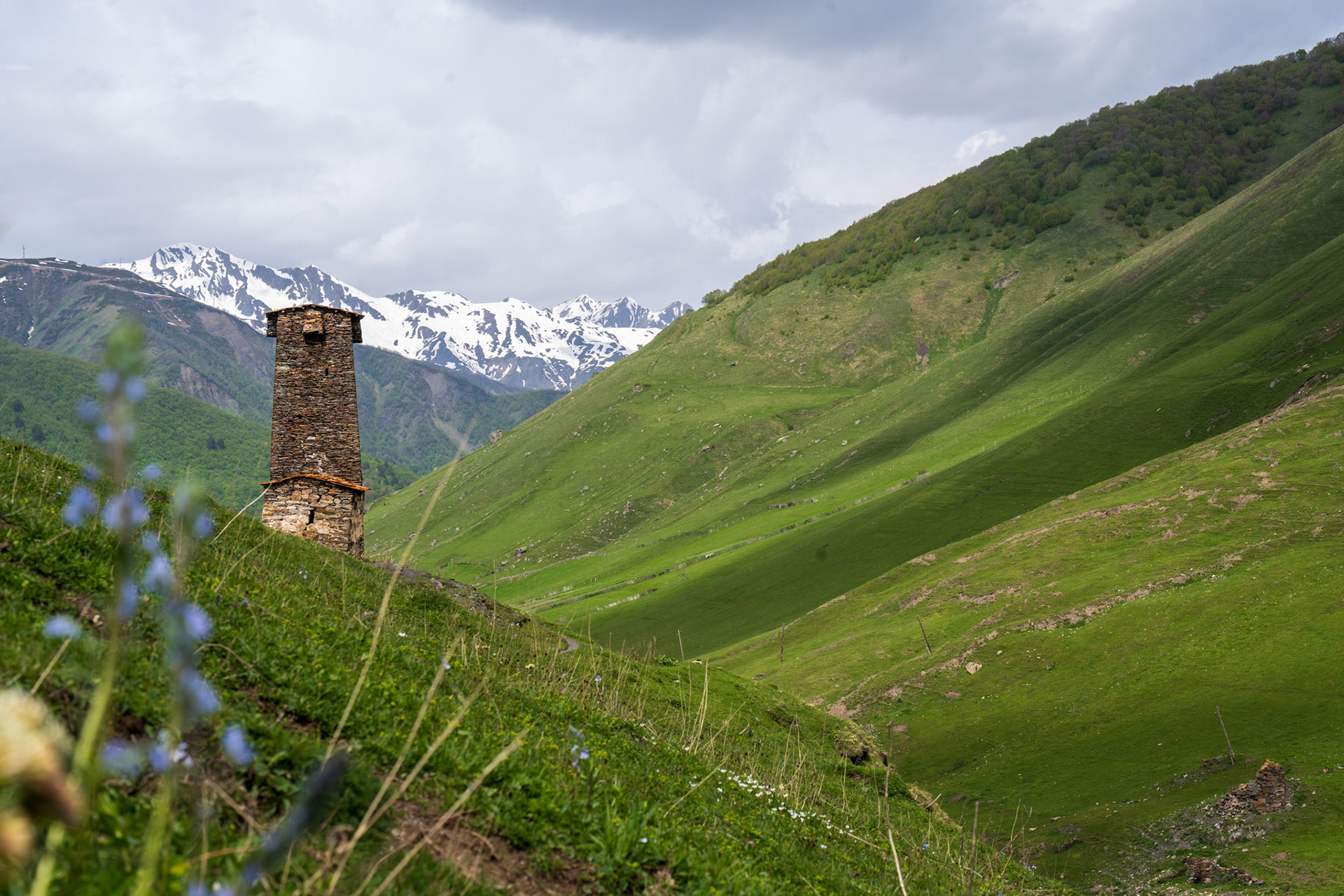
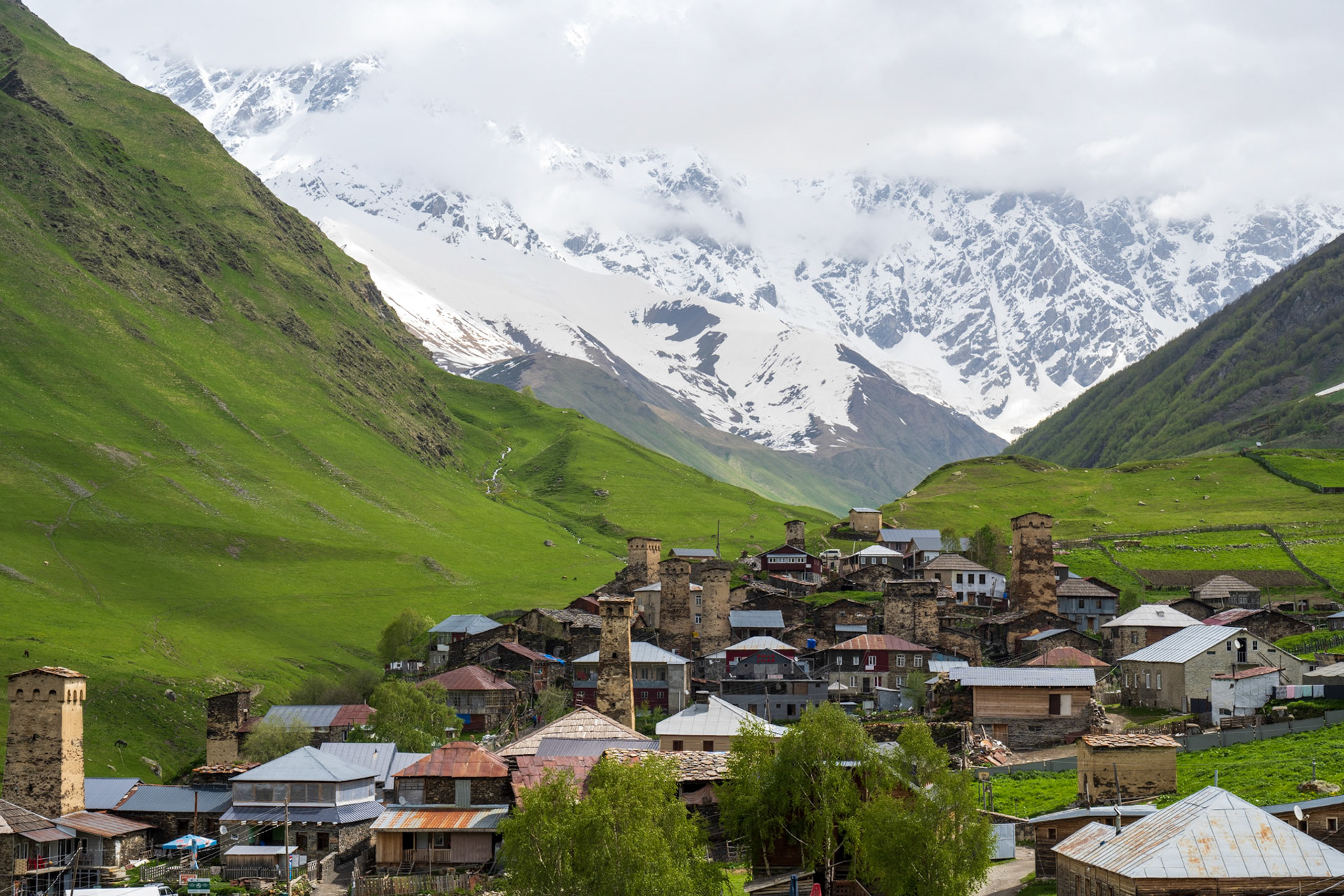
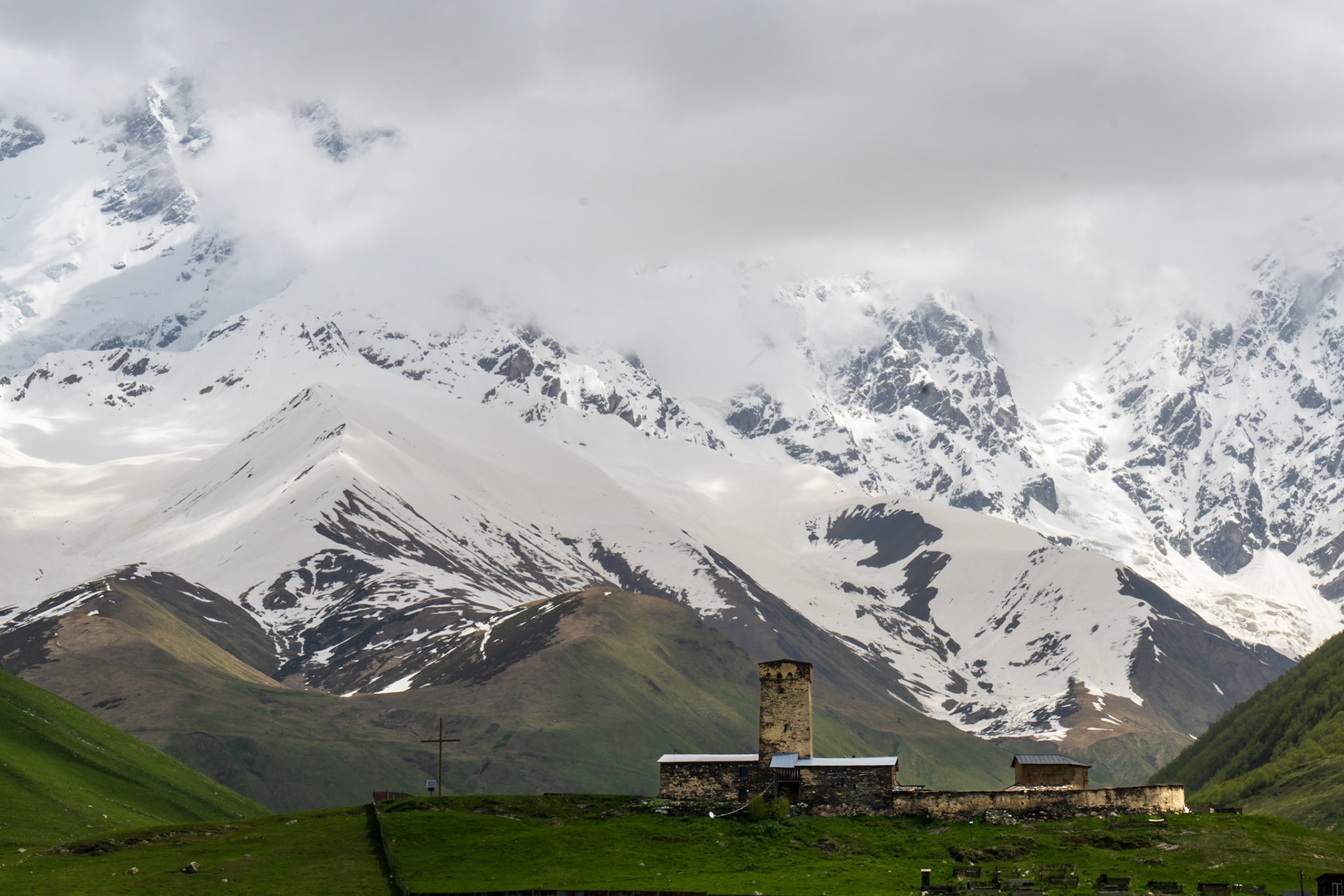
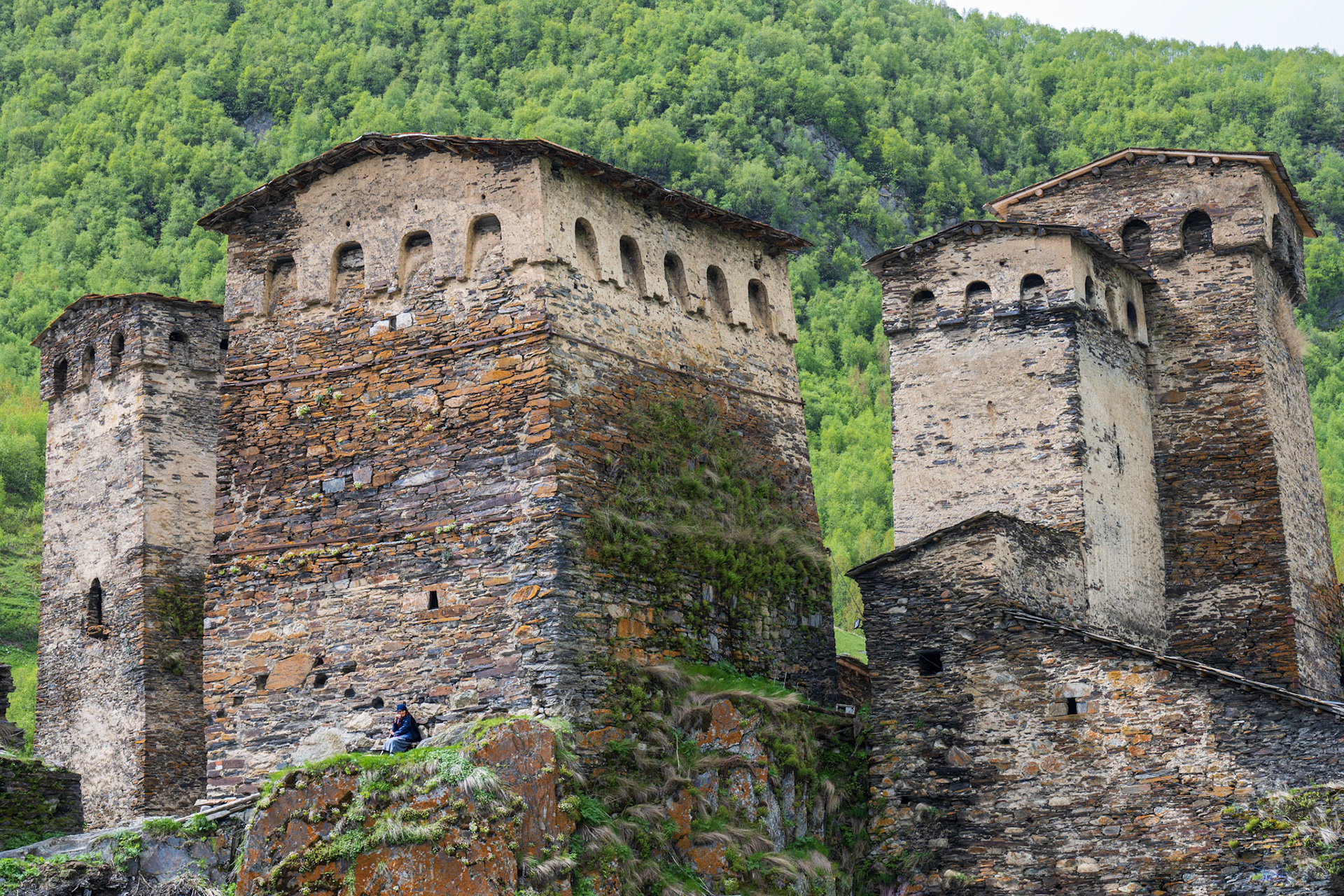
Have you spotted the old lady?
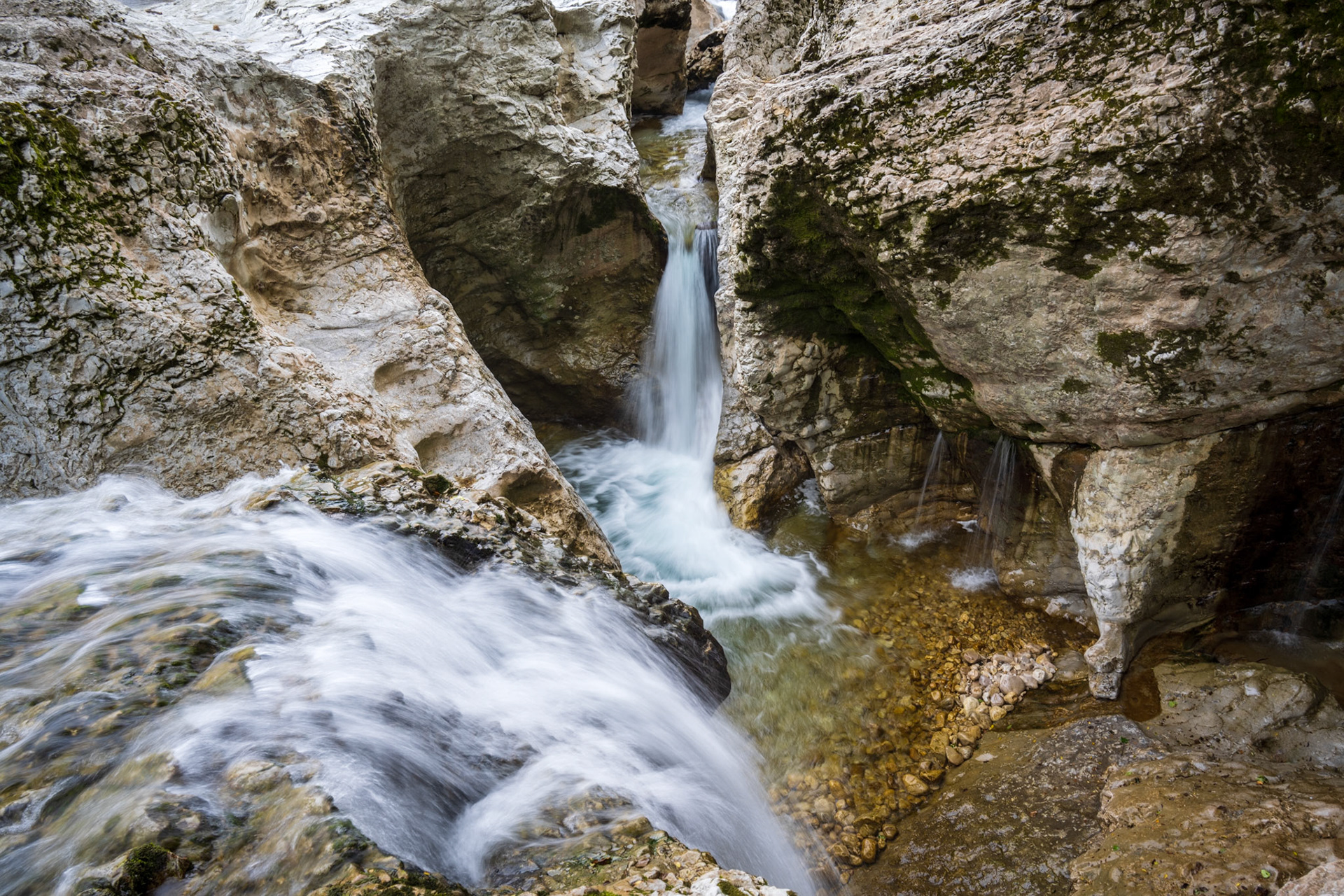
Martvili canyon
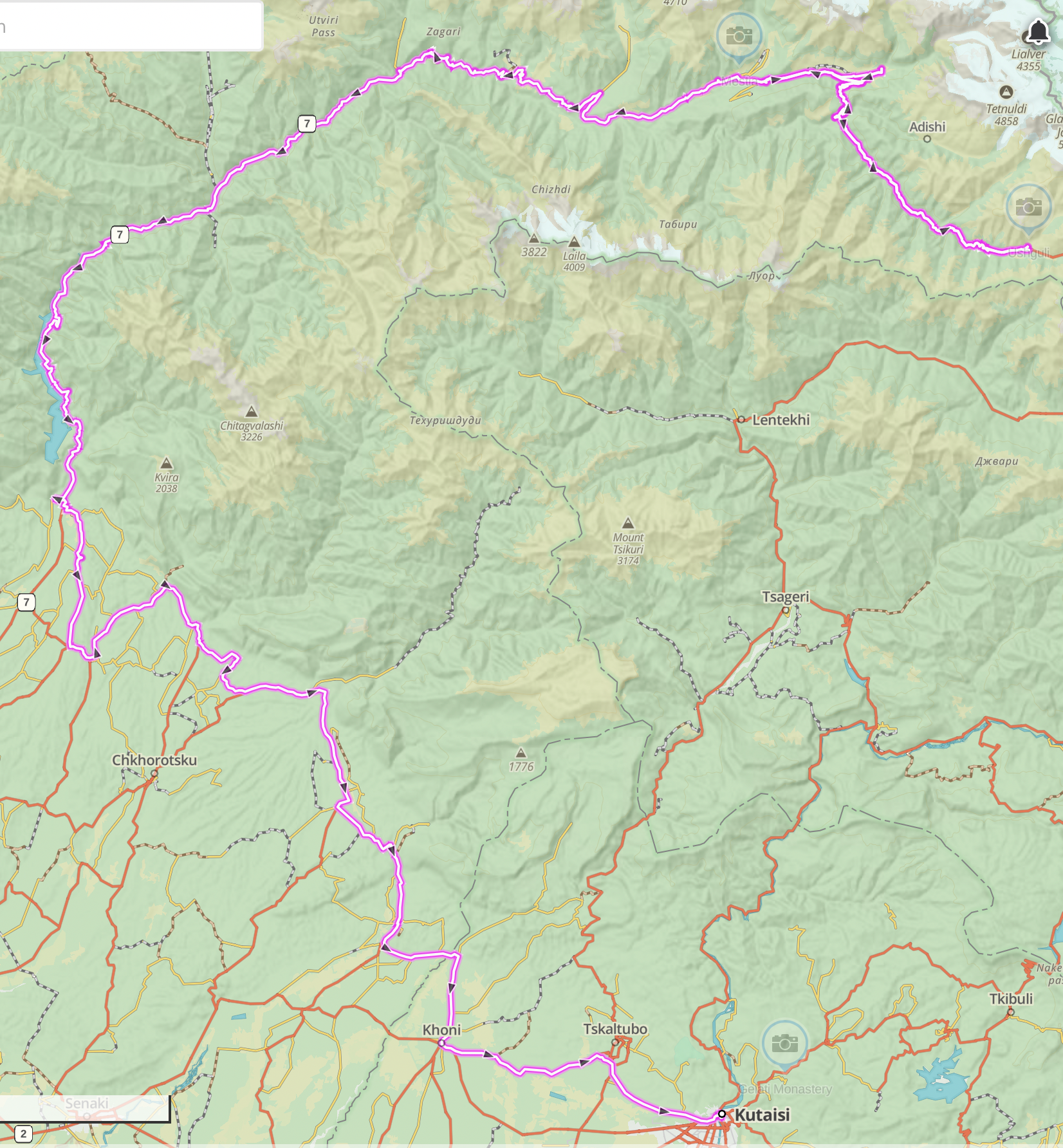
Day 36 - 325 km
Day 37 - Kutaisi to Tbilisi, Georgia
We walked to find a bakery to buy breakfast but unexpectedly stumbled upon a sprawling farmer's market. The market was not confined to designated covered areas but spilled onto the adjacent streets. It was filled with genuine farmers or individuals who had harvested produce from their own gardens and loaded their cars to sell them on the streets.
I purchased there a traditional Georgian candy called Churchkhela. It is made by threading almonds, walnuts, hazelnuts, or sometimes raisins onto a string. The string is repeatedly dipped in concentrated fresh grape juice, which dries to form a chewy, gelatin-like coating around the nuts.
Afterward, we decided to continue on to our original destination of yesterday, if the road after Usguli had not been closed. Fortunately, we discovered excellent roads with minimal traffic, albeit frequented by cows, pigs, and other animals crossing the path.
Our first stop along the way was the Monastery of Gelati, established in 1106 and considered a masterpiece from the Golden Age of medieval Georgia.
After a few hours of enjoyable riding, we reached Uplistsikhe, which is one of the oldest urban settlements in the region. Its history dates back to the I-II millennium B.C., and it was once inhabited by traders and merchants from the Silk Road. The town thrived during the 9th to 11th centuries but was devastated by the Mongols in the 13th century. Interestingly, they also cultivated wine in this region, as Georgia is the oldest wine-producing region in the world since 6000 BC. They would store their wine in clay vessels called kvevris, burying them in the ground to maintain a suitable temperature for serving.
After navigating through heavy traffic in the suburbs, we finally reached Tbilisi. The old town, where we stayed, offered a much quieter and enjoyable atmosphere.
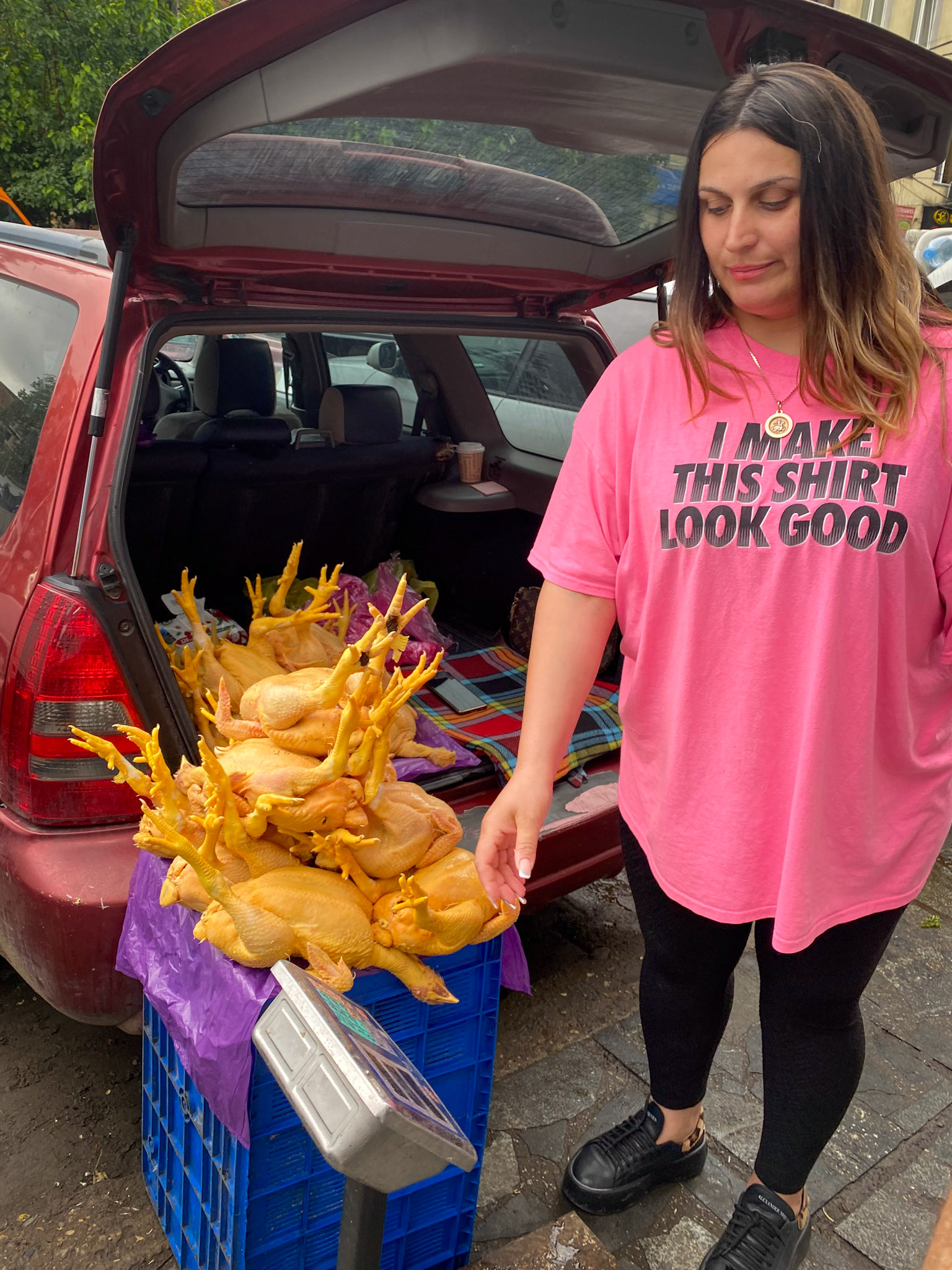
Real chickens!
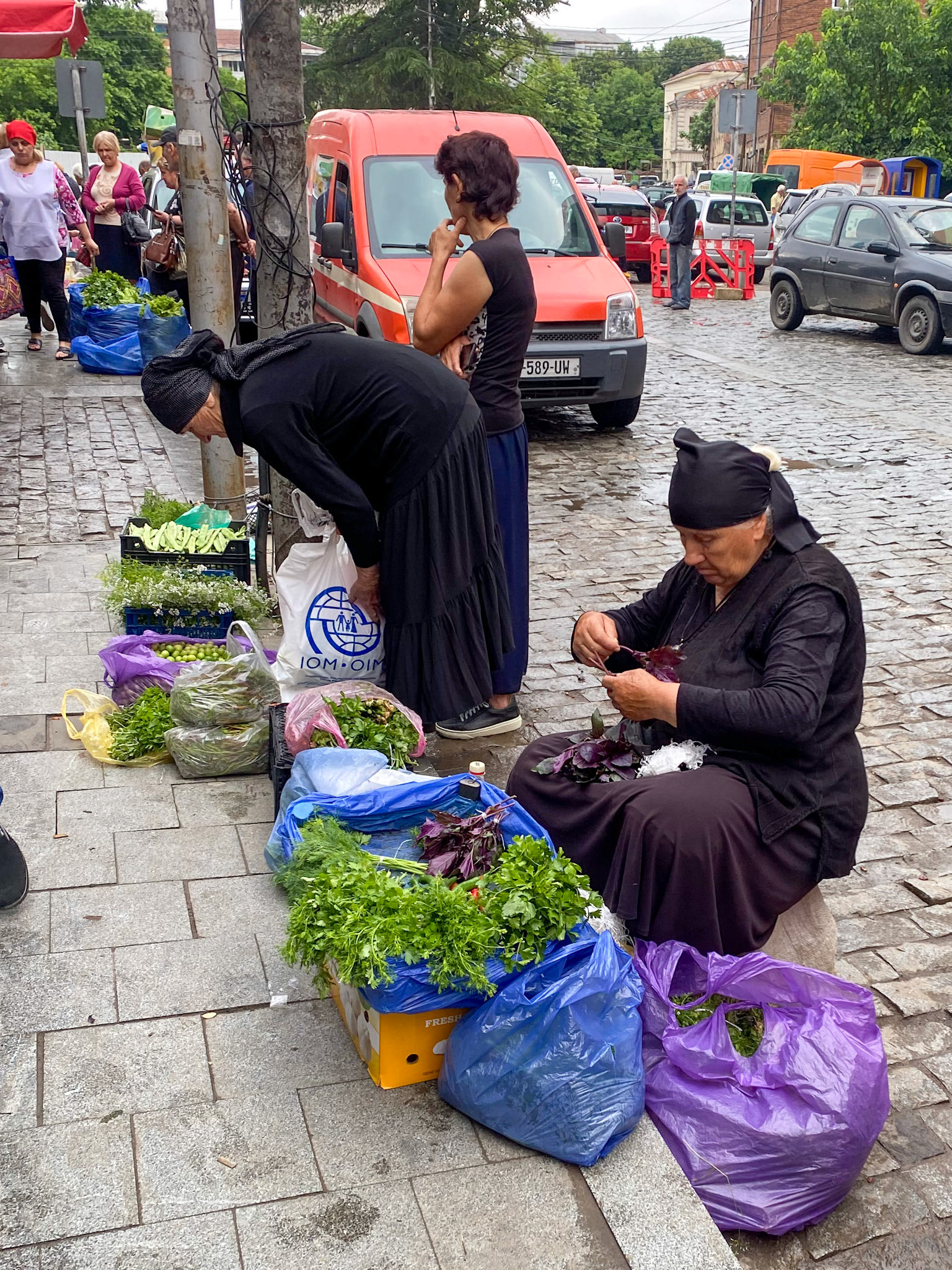
Some don't have much to sell
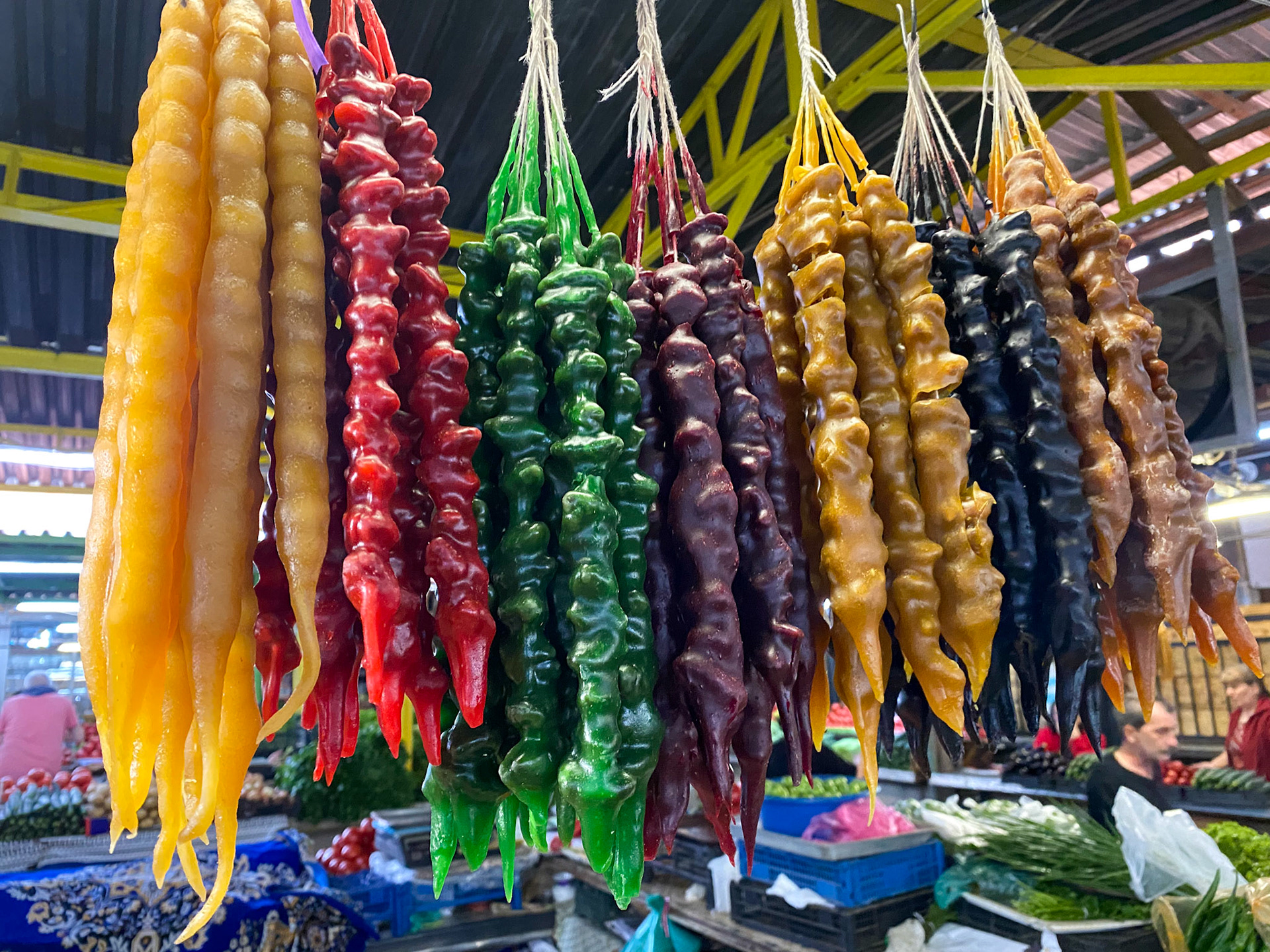
I purchased there a traditional Georgian candy called Churchkhela. It is made by threading almonds, walnuts, hazelnuts, or sometimes raisins onto a string. The string is repeatedly dipped in concentrated fresh grape juice, which dries to form a chewy, gelatin-like coating around the nuts. Not too sweet so I liked it!
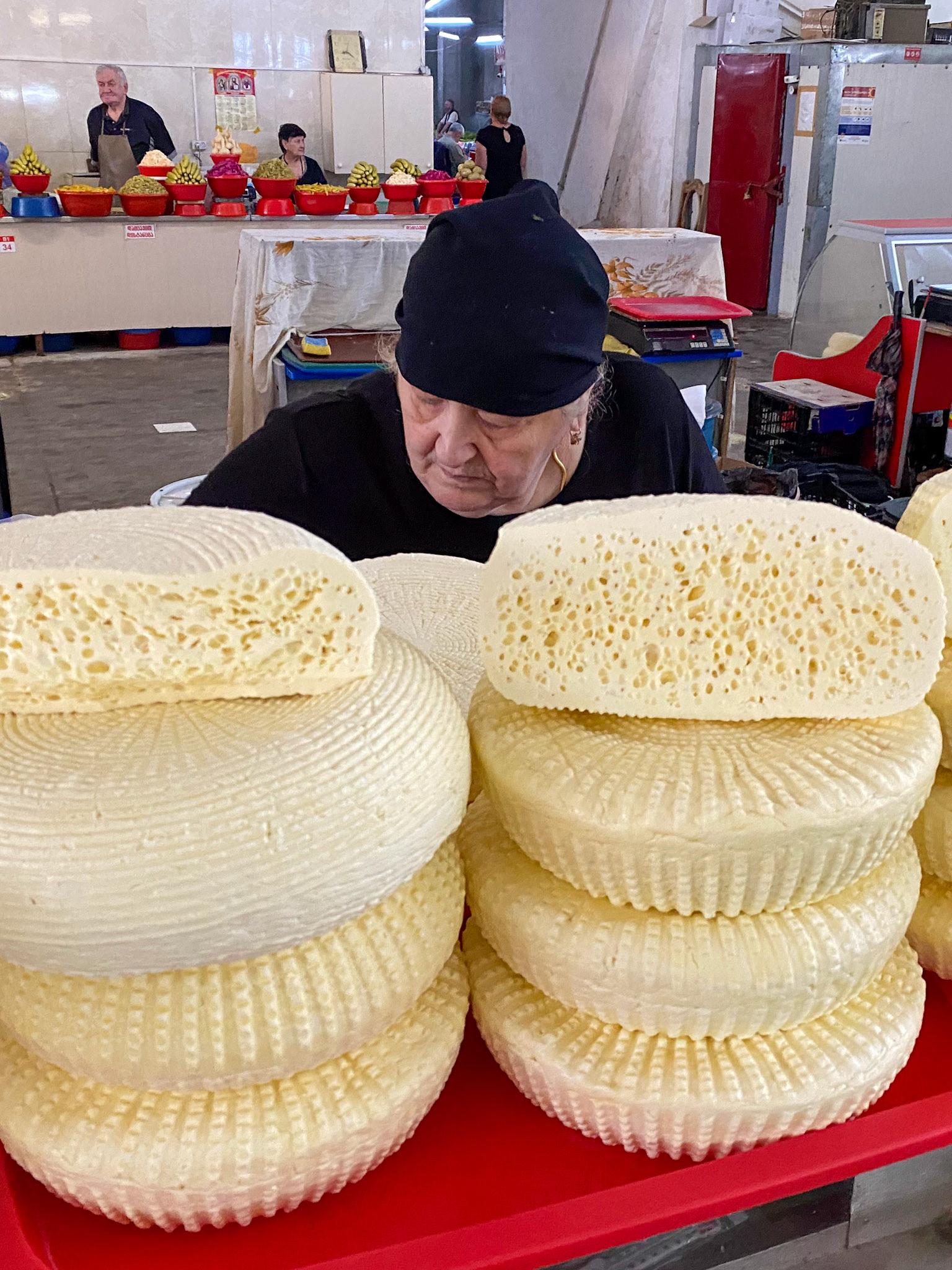
Georgian cheeses have a lot of variety and I really liked them all!
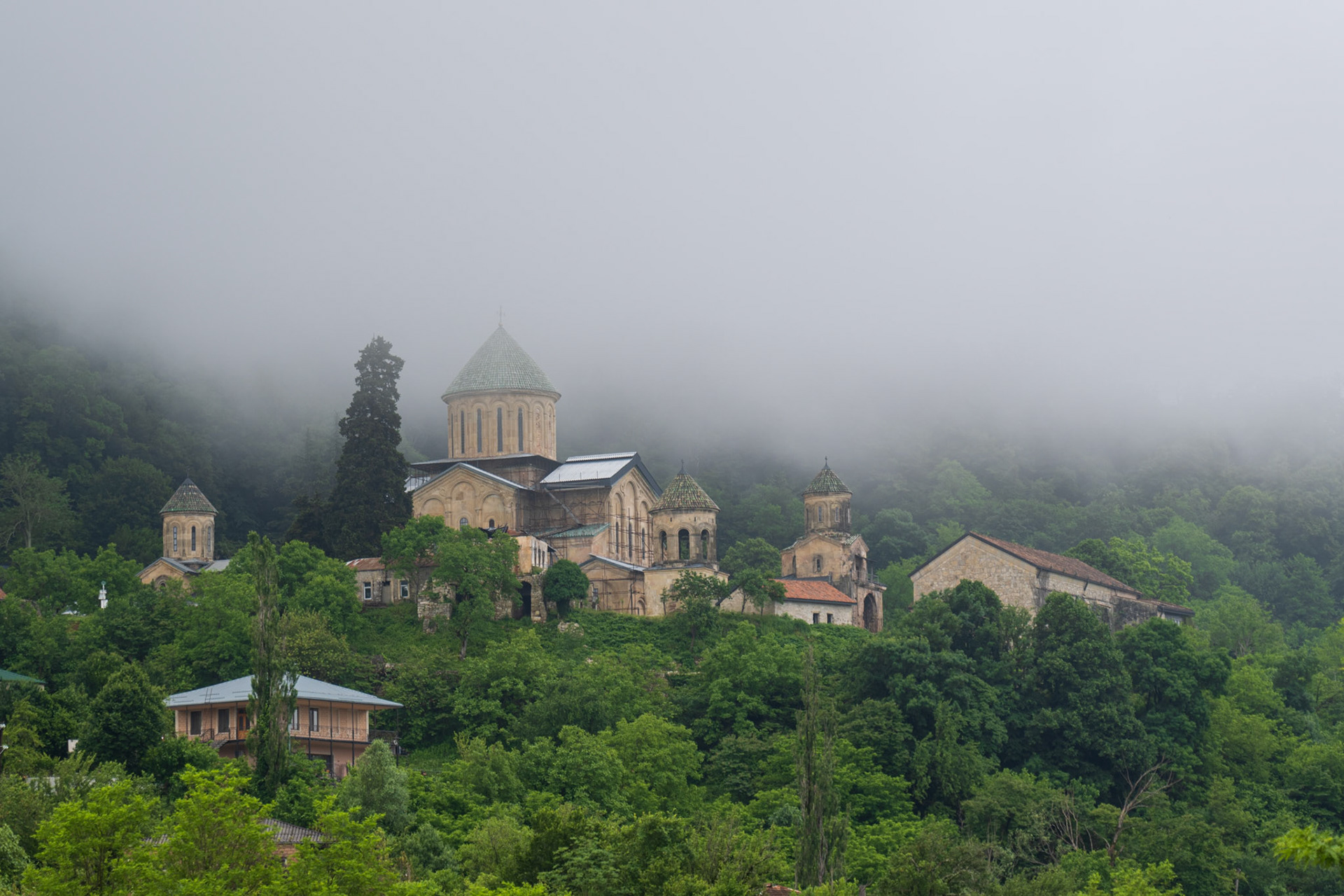
Gelati Monastery
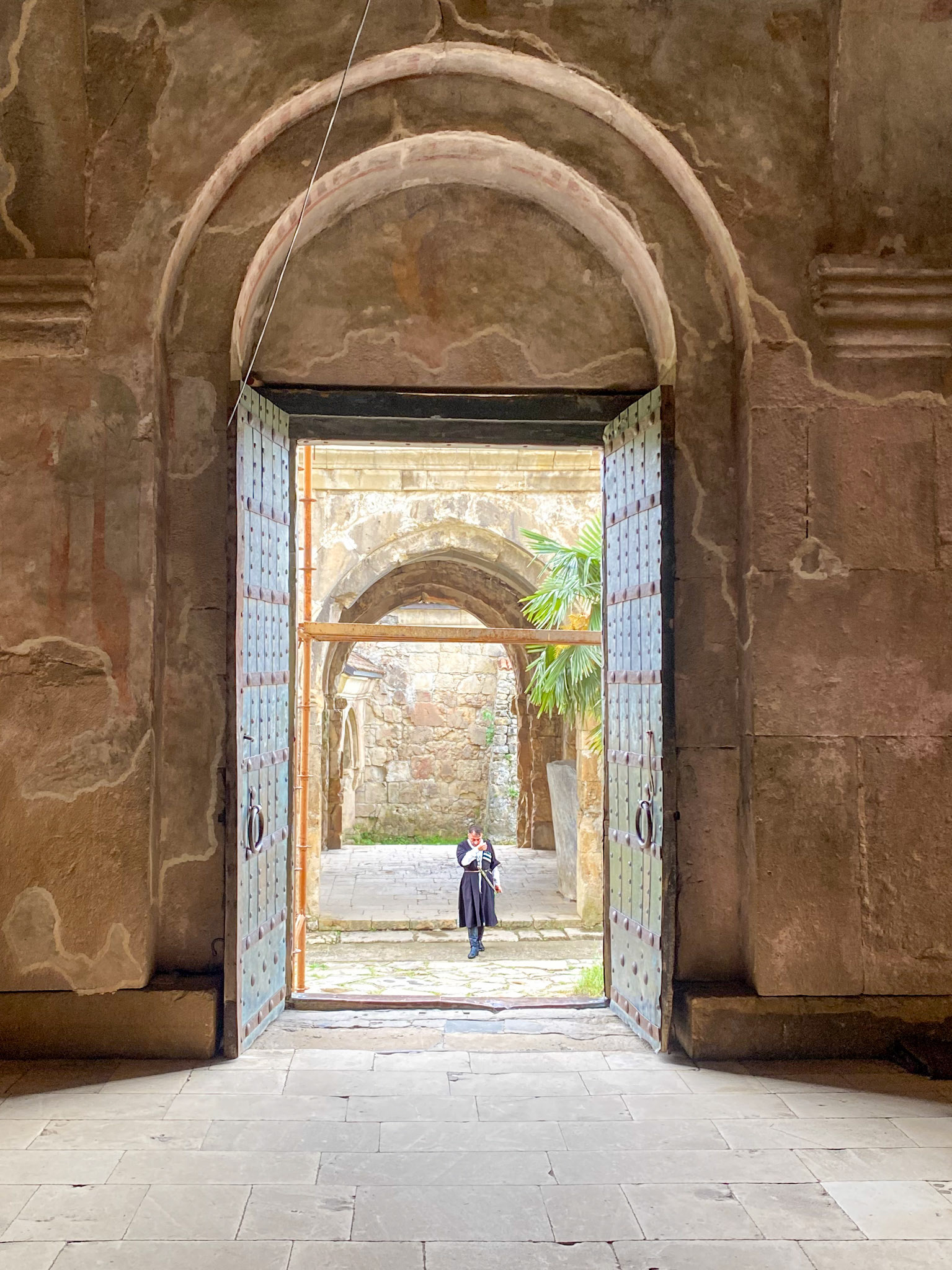
Have you noticed the monk's spade?
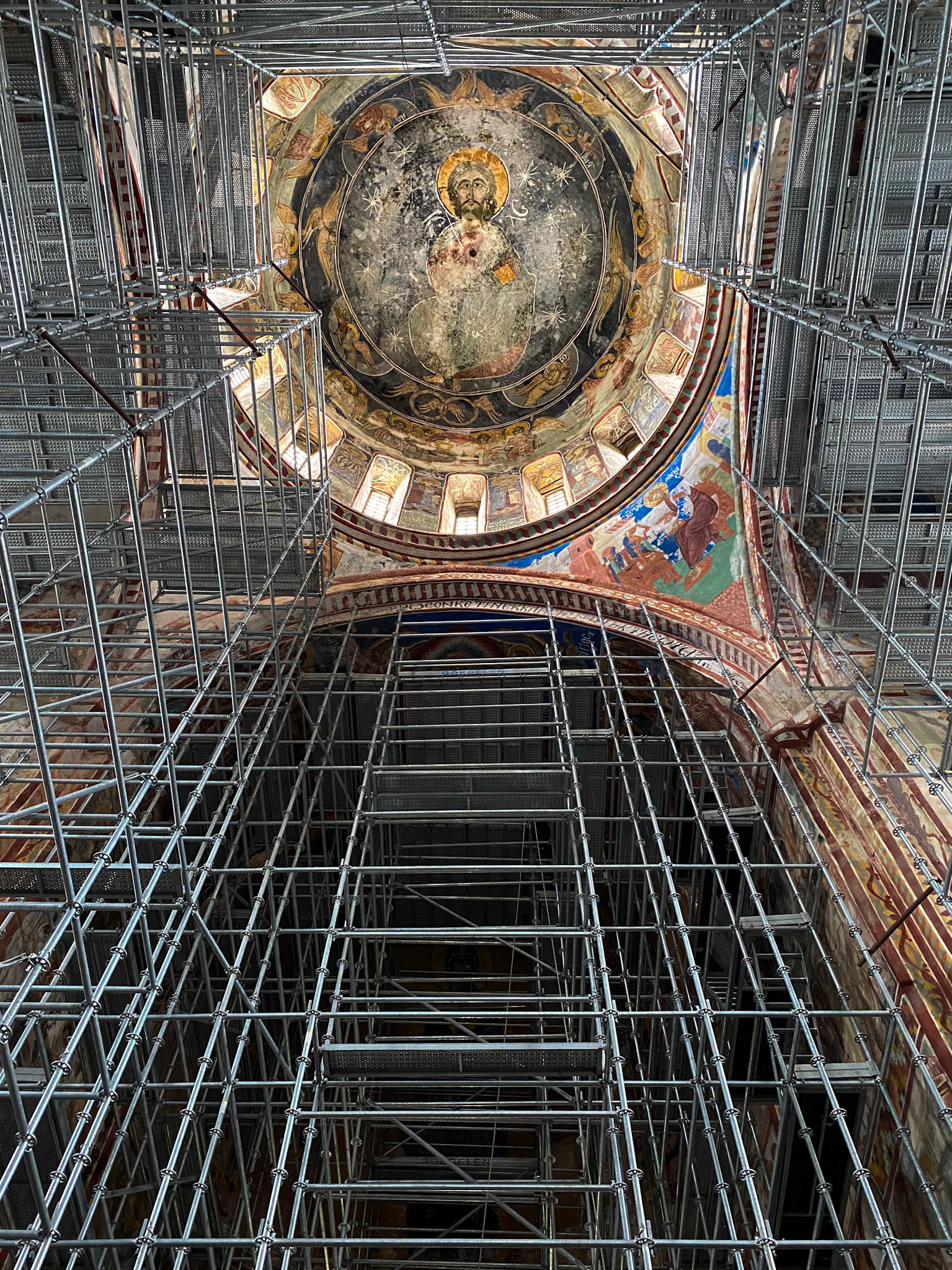
When scaffolding is on the way, you have to make the best of it
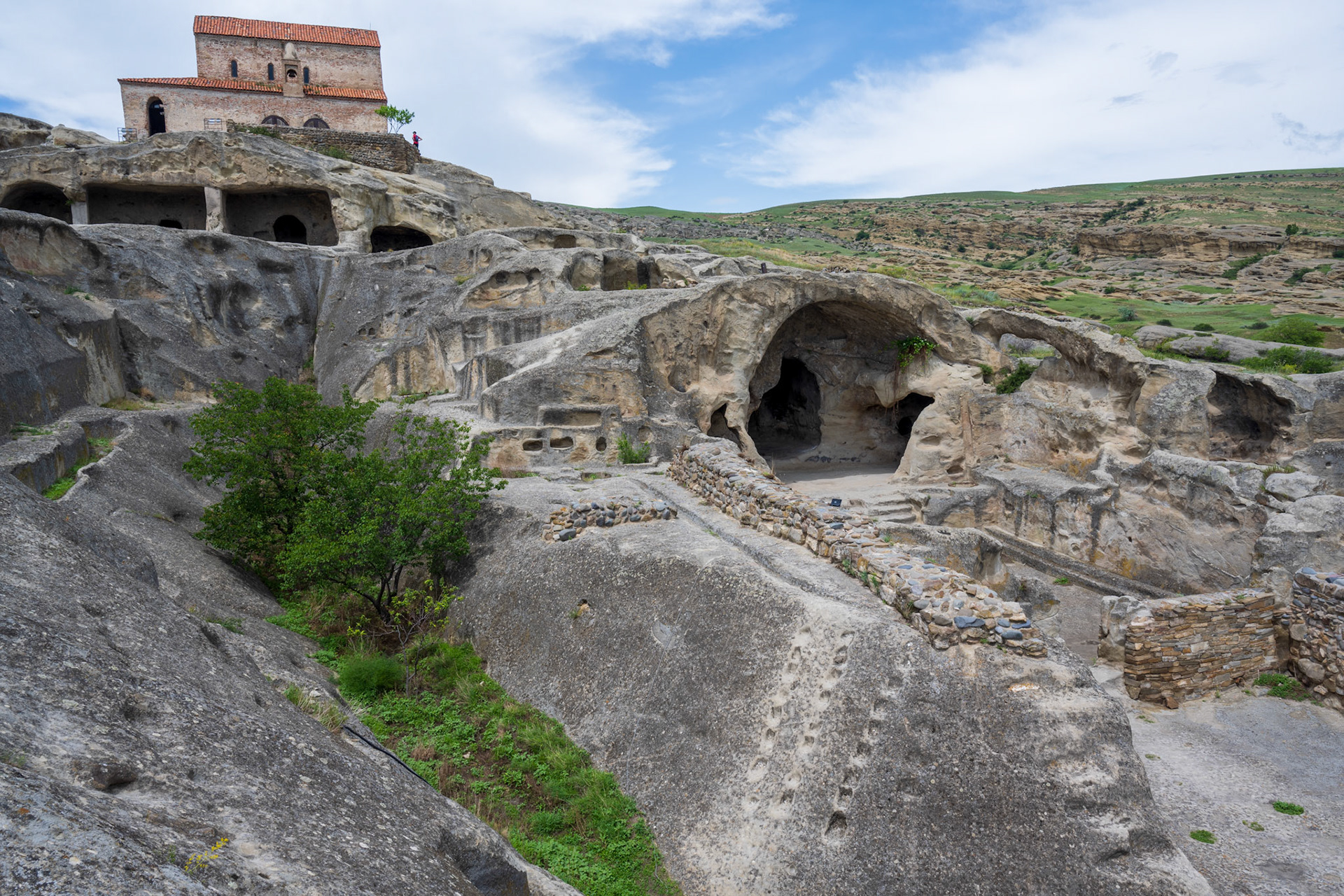
Uplistsikhe Caves
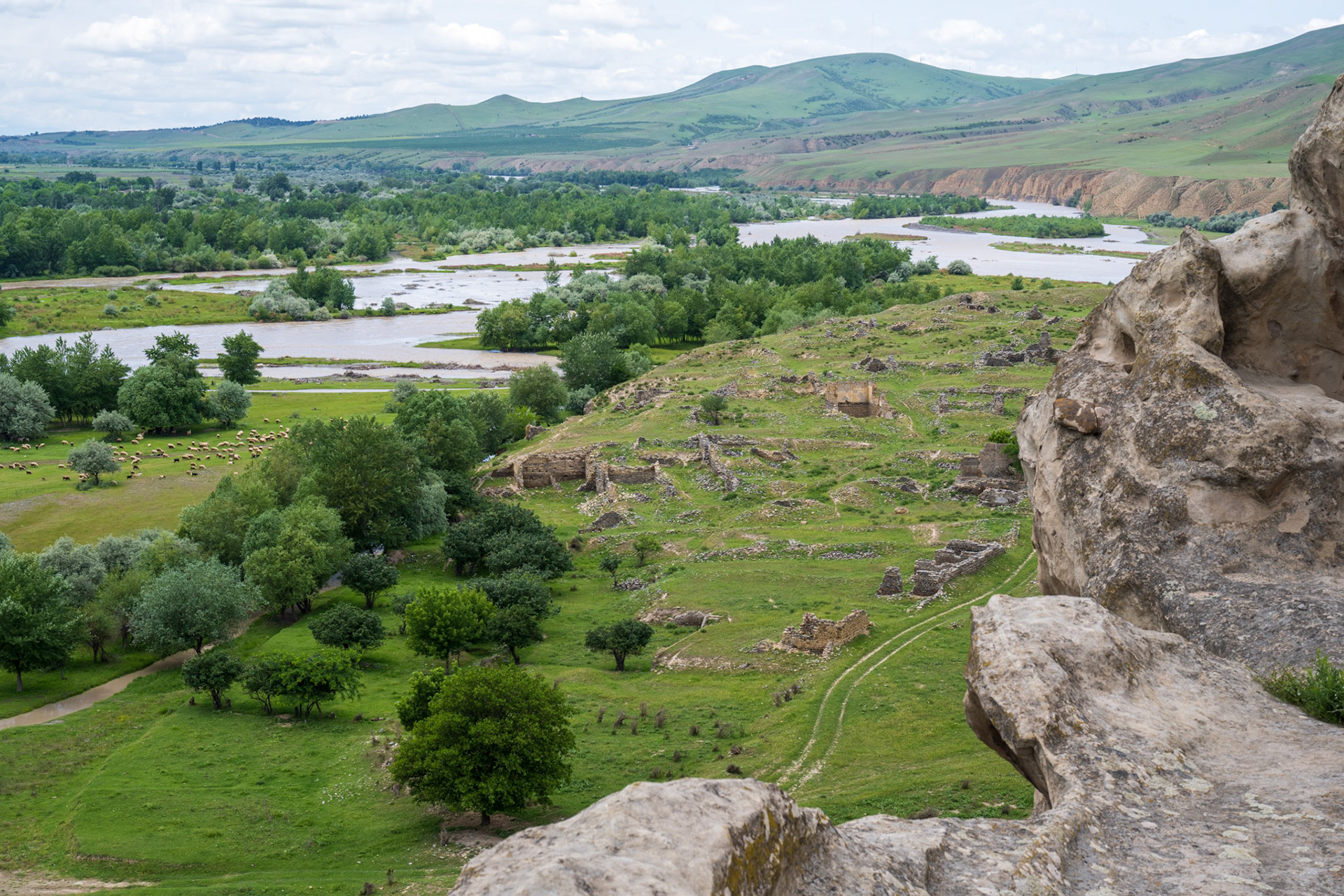
From Uplistsikhe Caves, view on an abandoned village
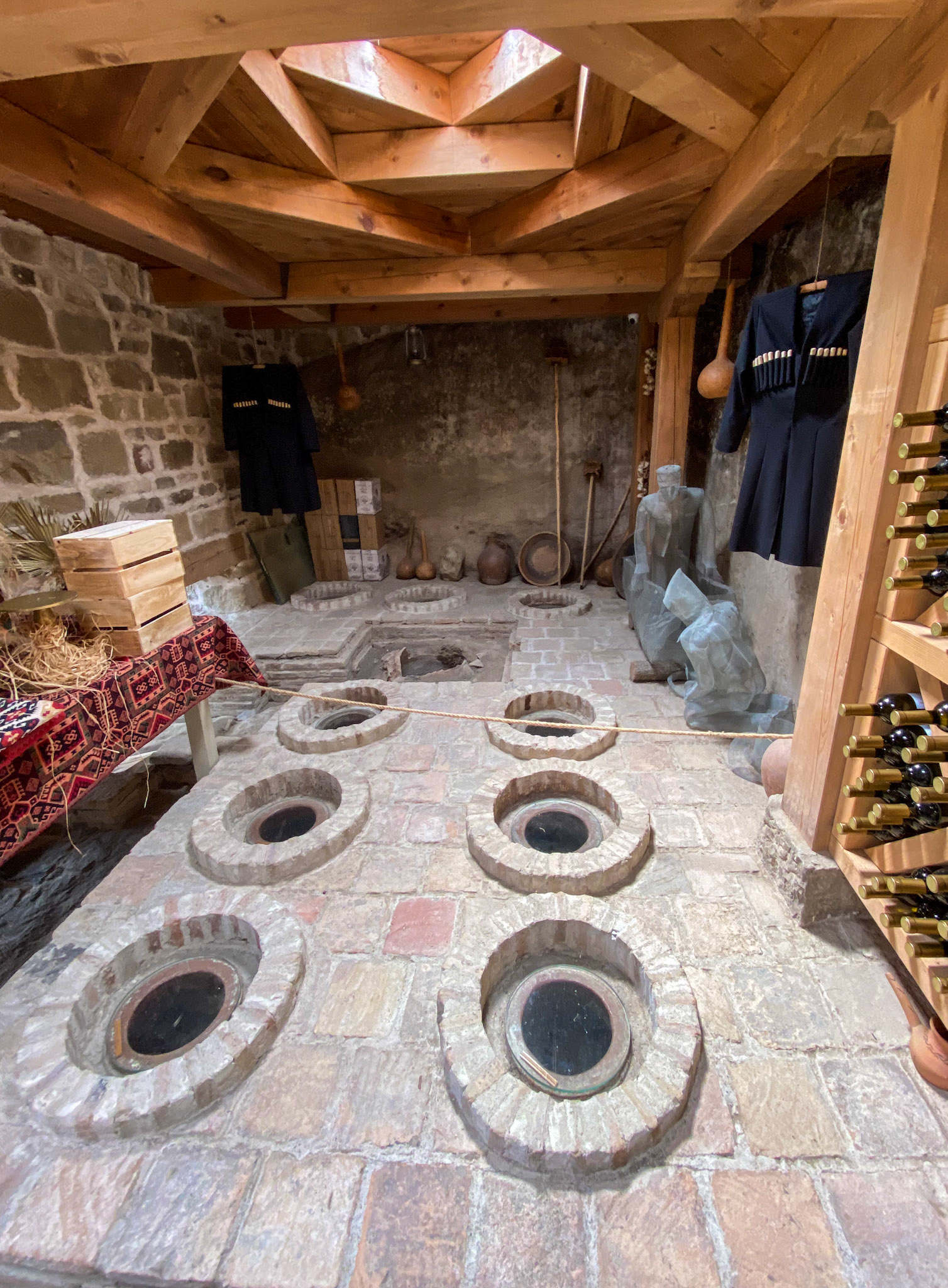
Wine is stored in clay vessels called kvevris, burying them in the ground to maintain a suitable temperature for serving.
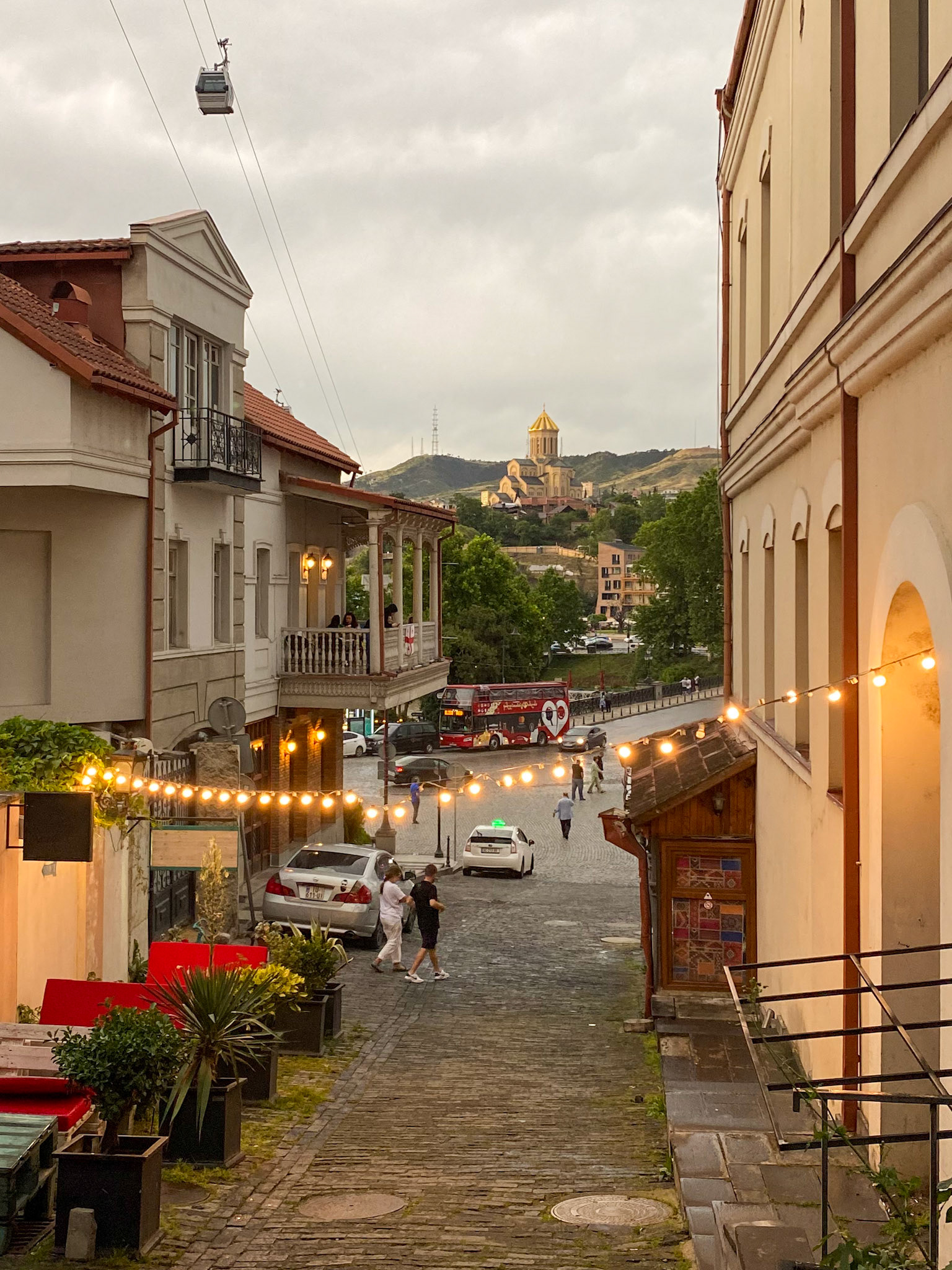
Tbilisi
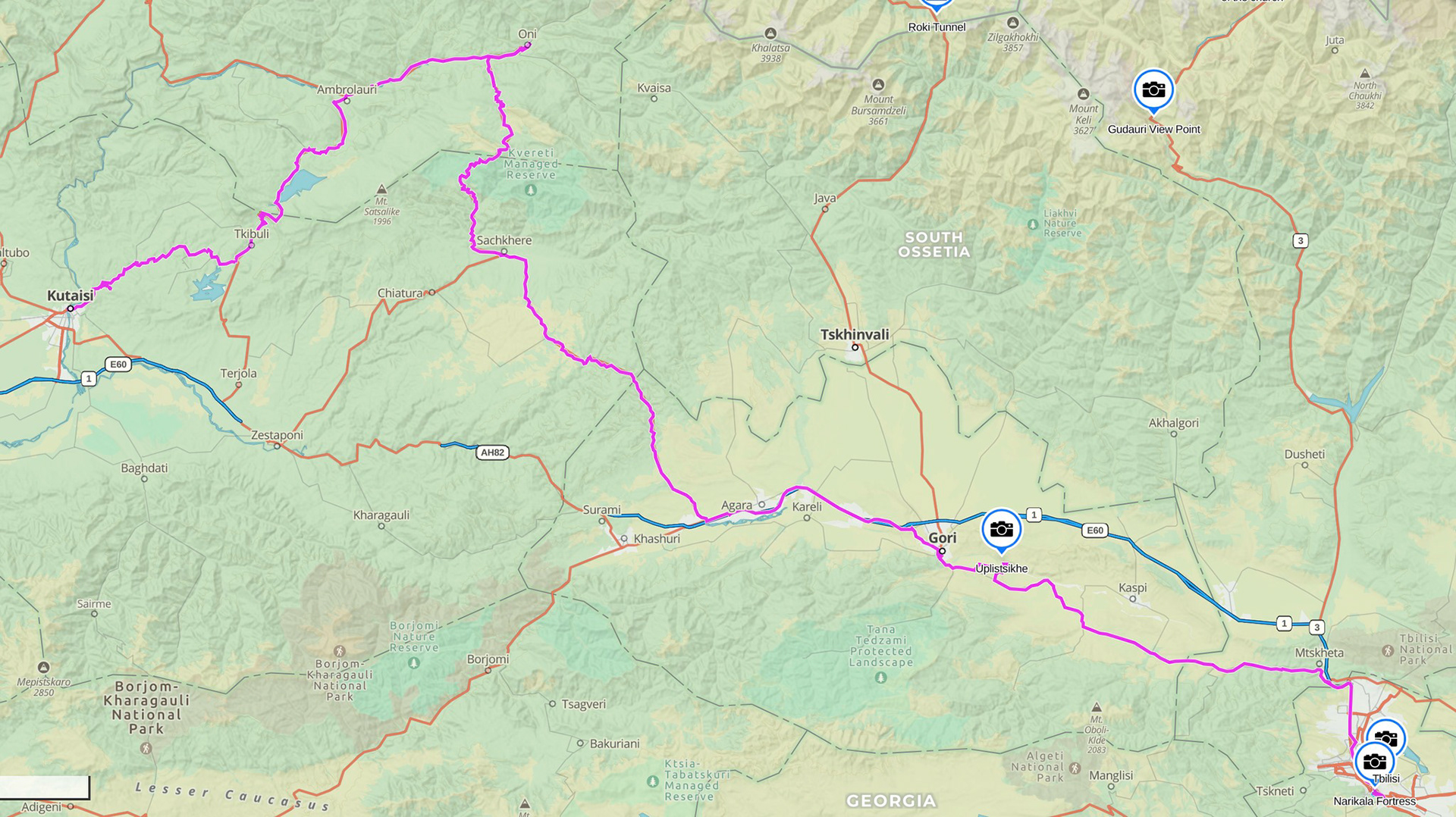
Day 37 - 360 km
Day 38 - Rest day in Tbilisi, Georgia
We were truly enamored by the charming old town of Tbilisi. Even the building where we’re staying has a lot of character.
But before going back to visit the place, we have to take care of the usual laundry, even cleaning our riding gear and bags. While we were at it we also cleaned the bikes before to take them to a garage where we ordered tires. They took us right away and did a great job changing Dirk’s tires, as well as my rear one.
When that was done we went back to walking in the narrow streets on the old town. While some of the buildings here are in poor condition, there are also many that have been beautifully remodeled. There are tons of cafés, restaurants, wine bars in sometimes improbable locations: underground, or on the 2nd floor through a hard to find entrance.
Although there are tourists, mainly Russians, the area is not overly crowded at this time, allowing us to have a pleasant experience. However, we've found that most of the restaurants cater to tourists, making it a bit challenging to find a place that truly suits our preferences.
I also appreciate the mix of old and new architecture in the city. While not everything matches my personal taste, I find it intriguing and refreshing to see the bold and unique designs throughout.
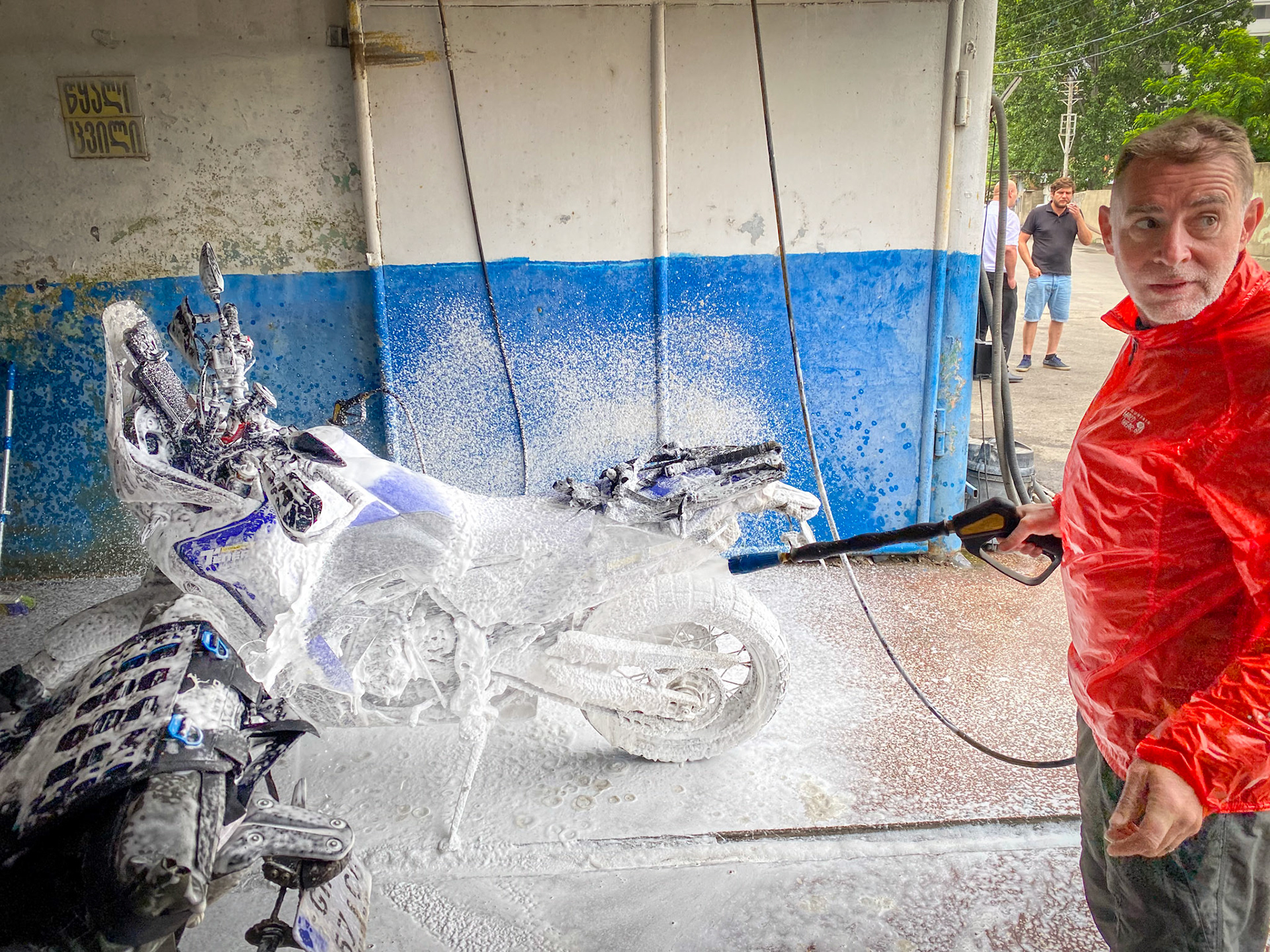
Washing our bikes for the garage to install our new tires more easily
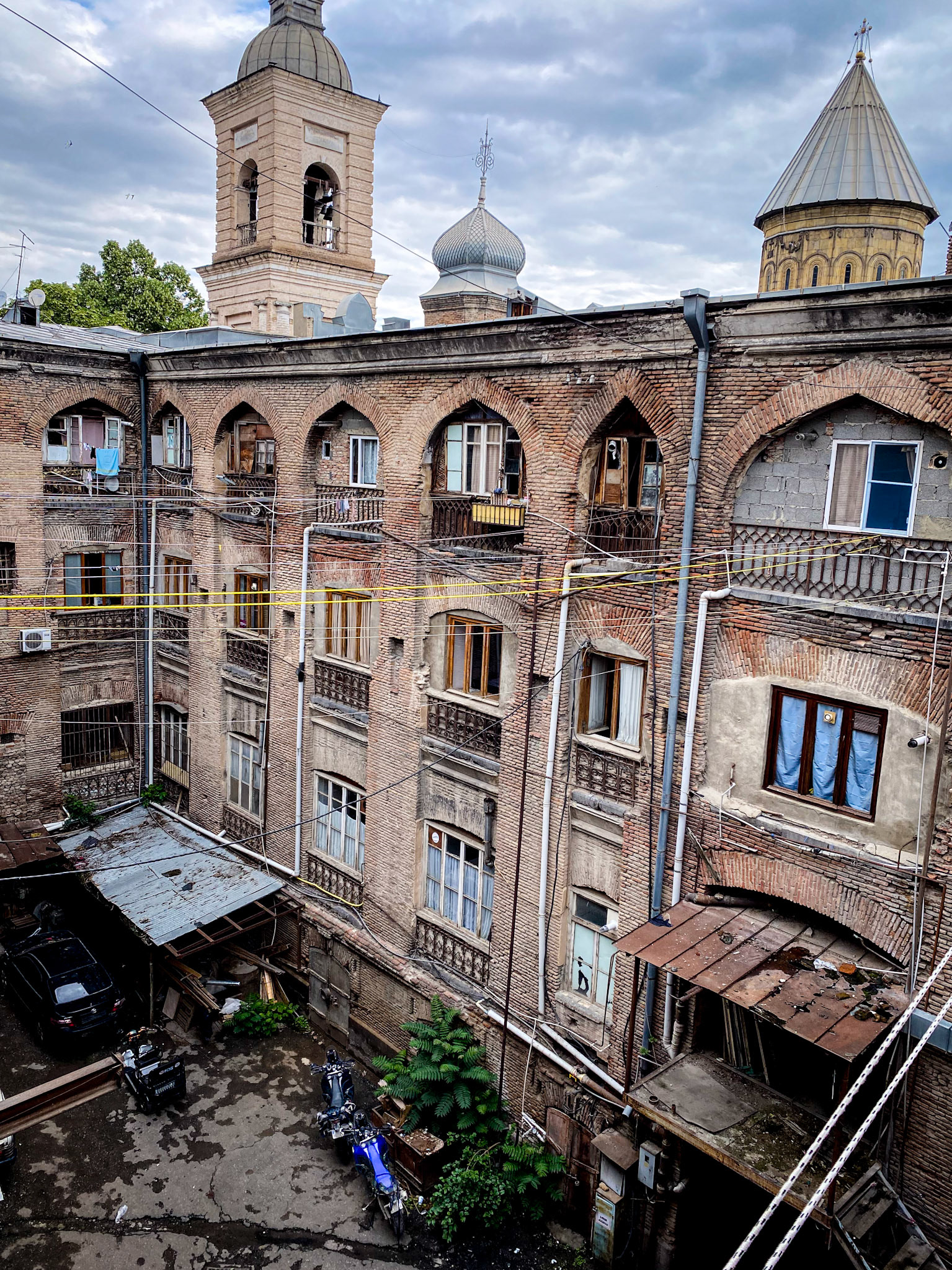
Our building has tons of character (and characters)
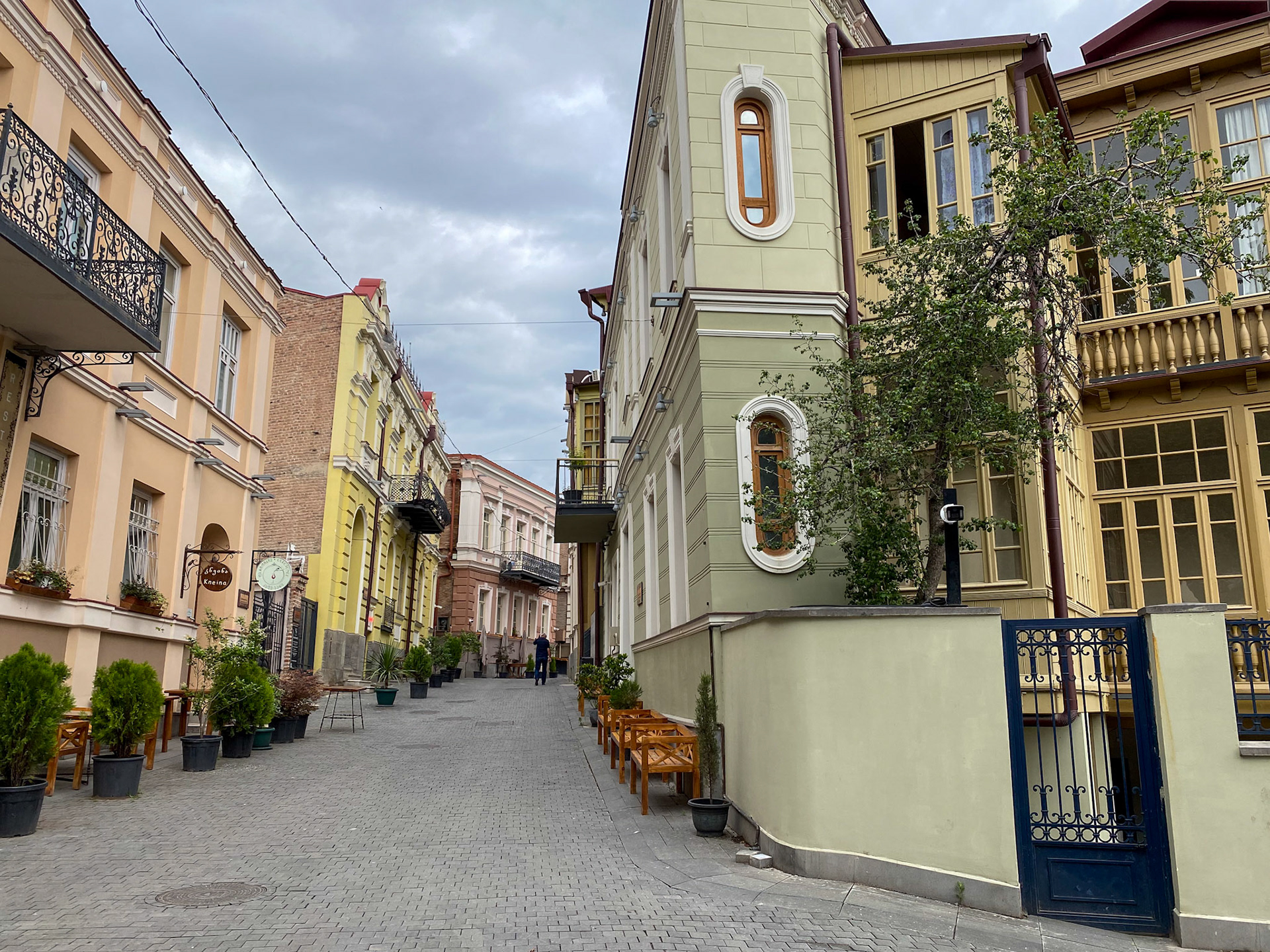
Quiet streets in the early morning
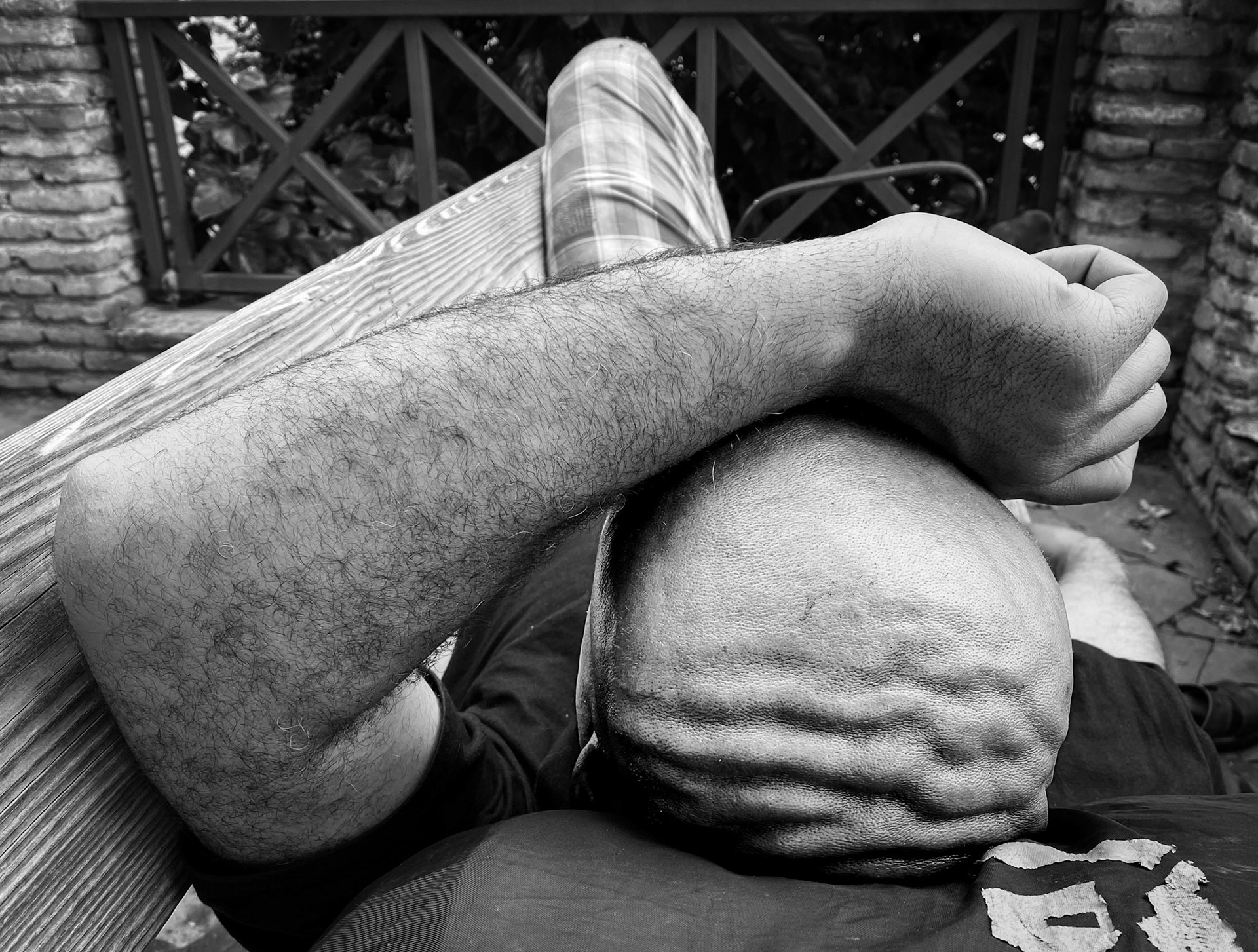
Someone decided to finish a long night on a bench 🙂
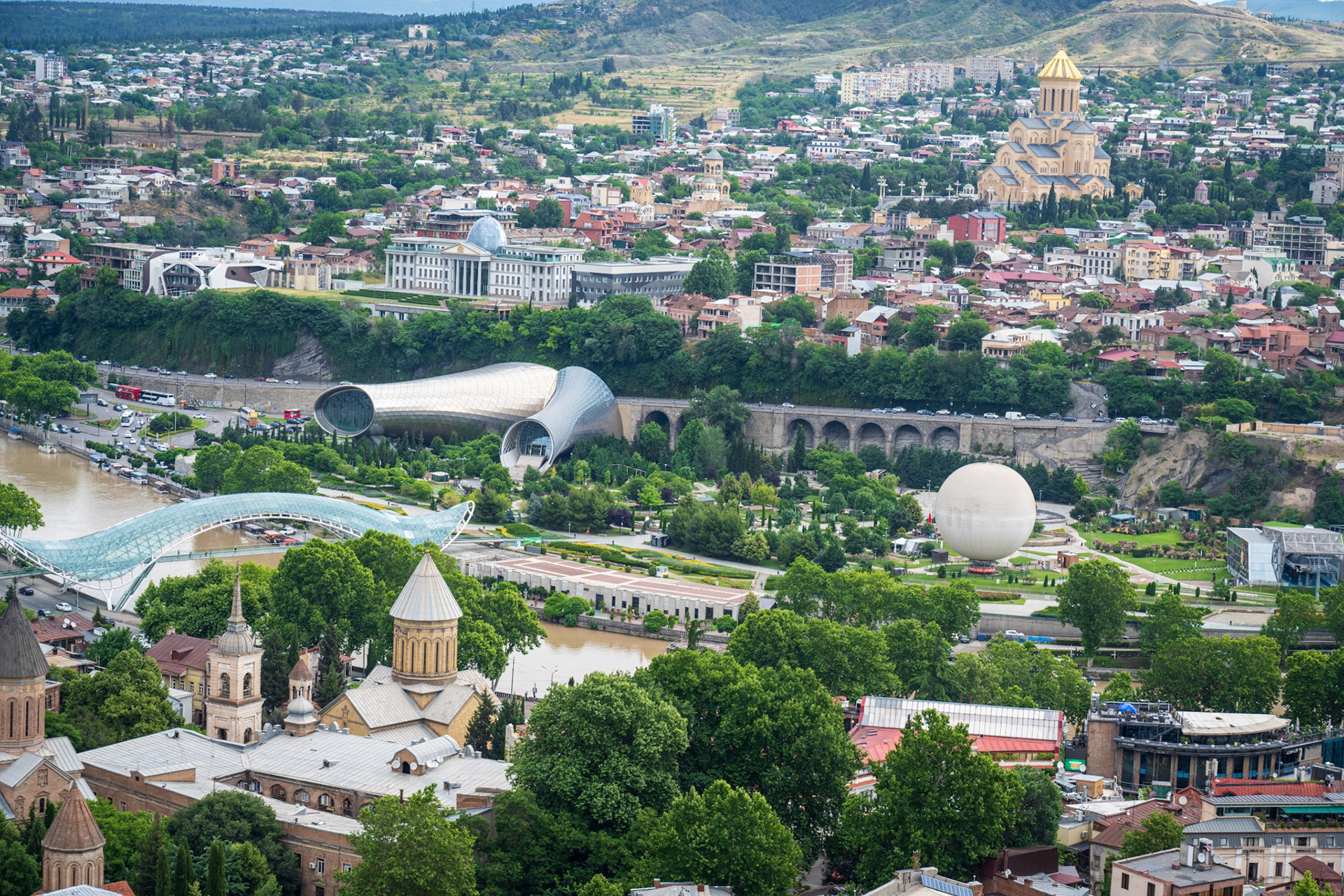
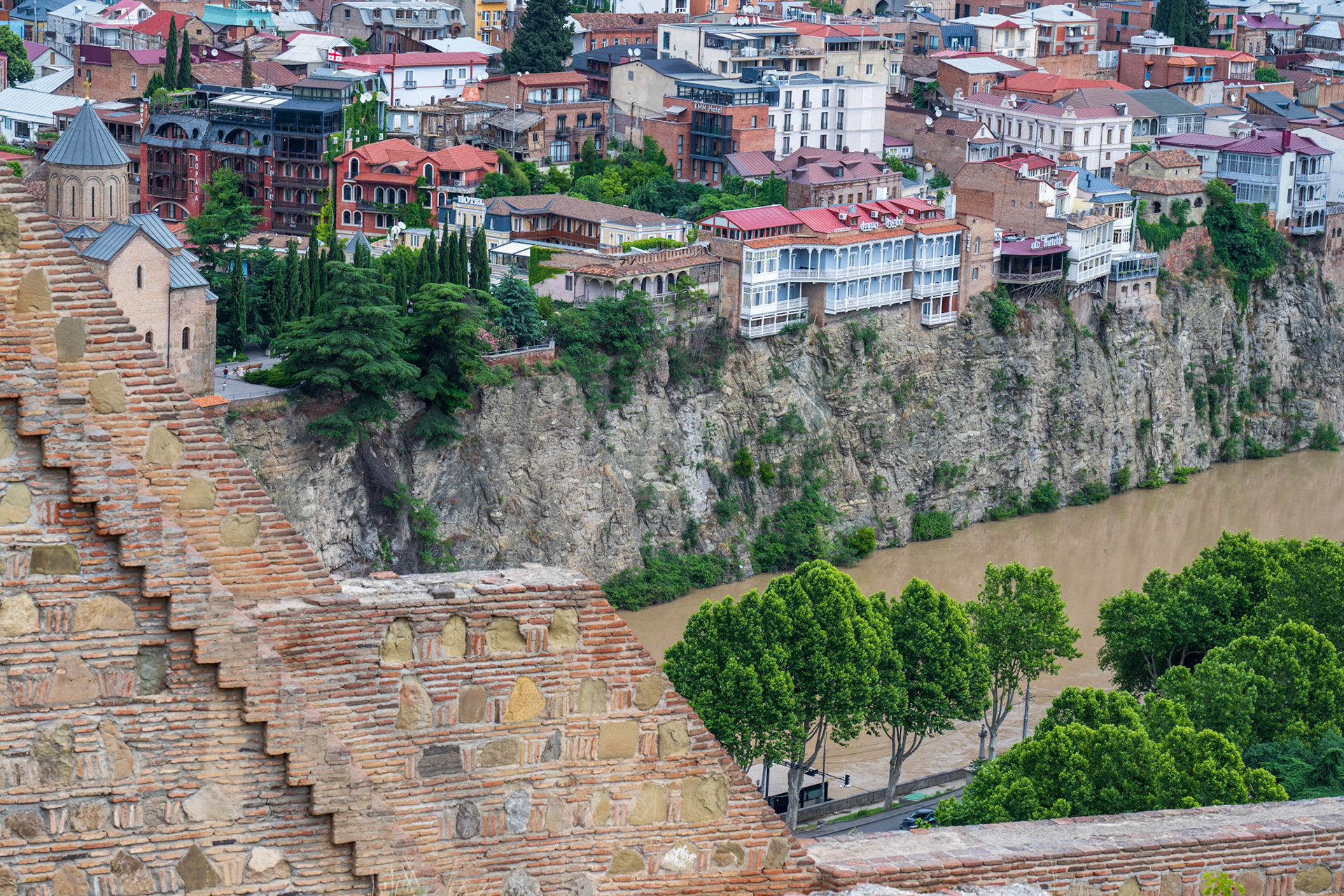
View of the river and the houses on top of the cliff, from the Narikala Fortress
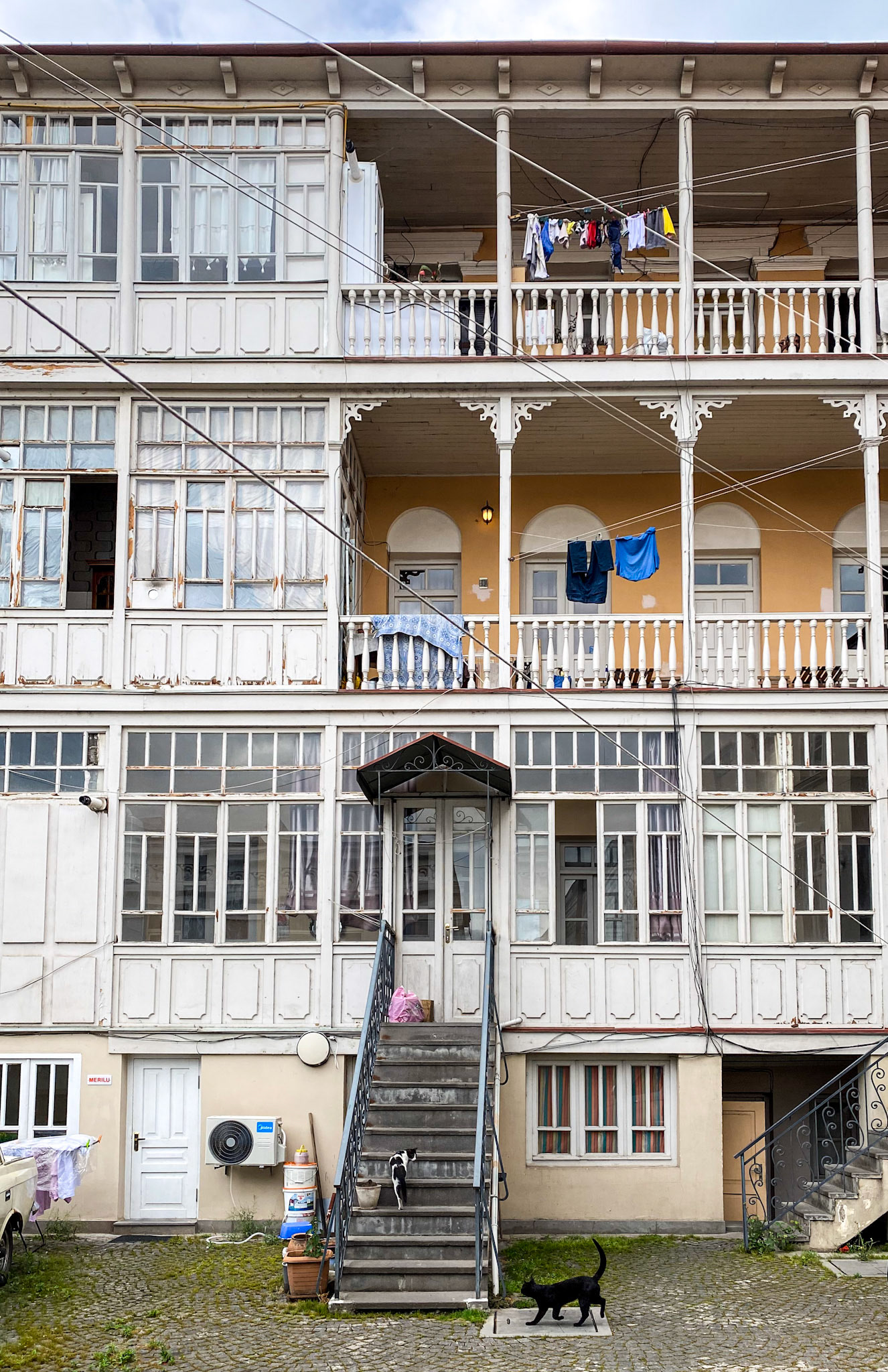
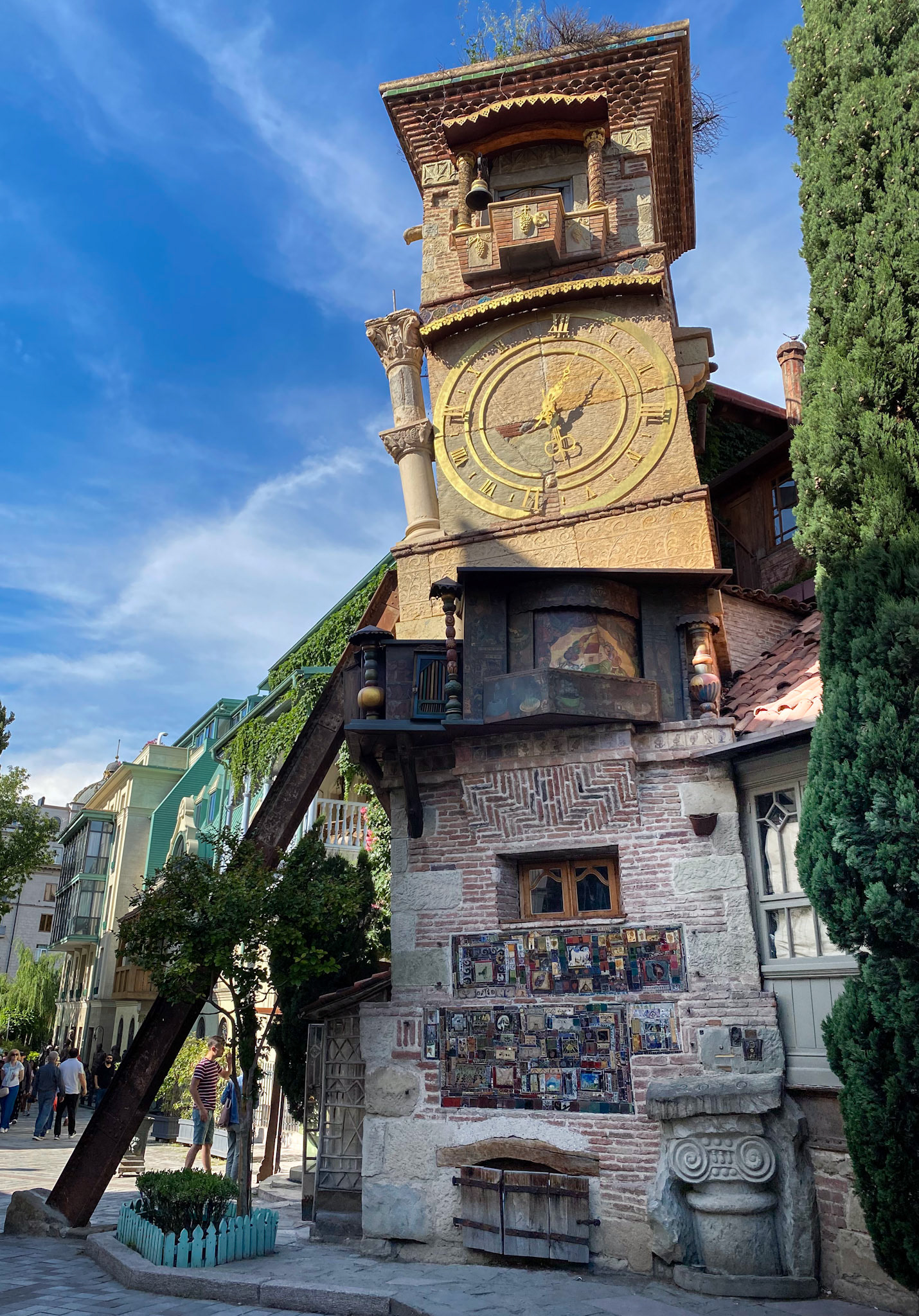
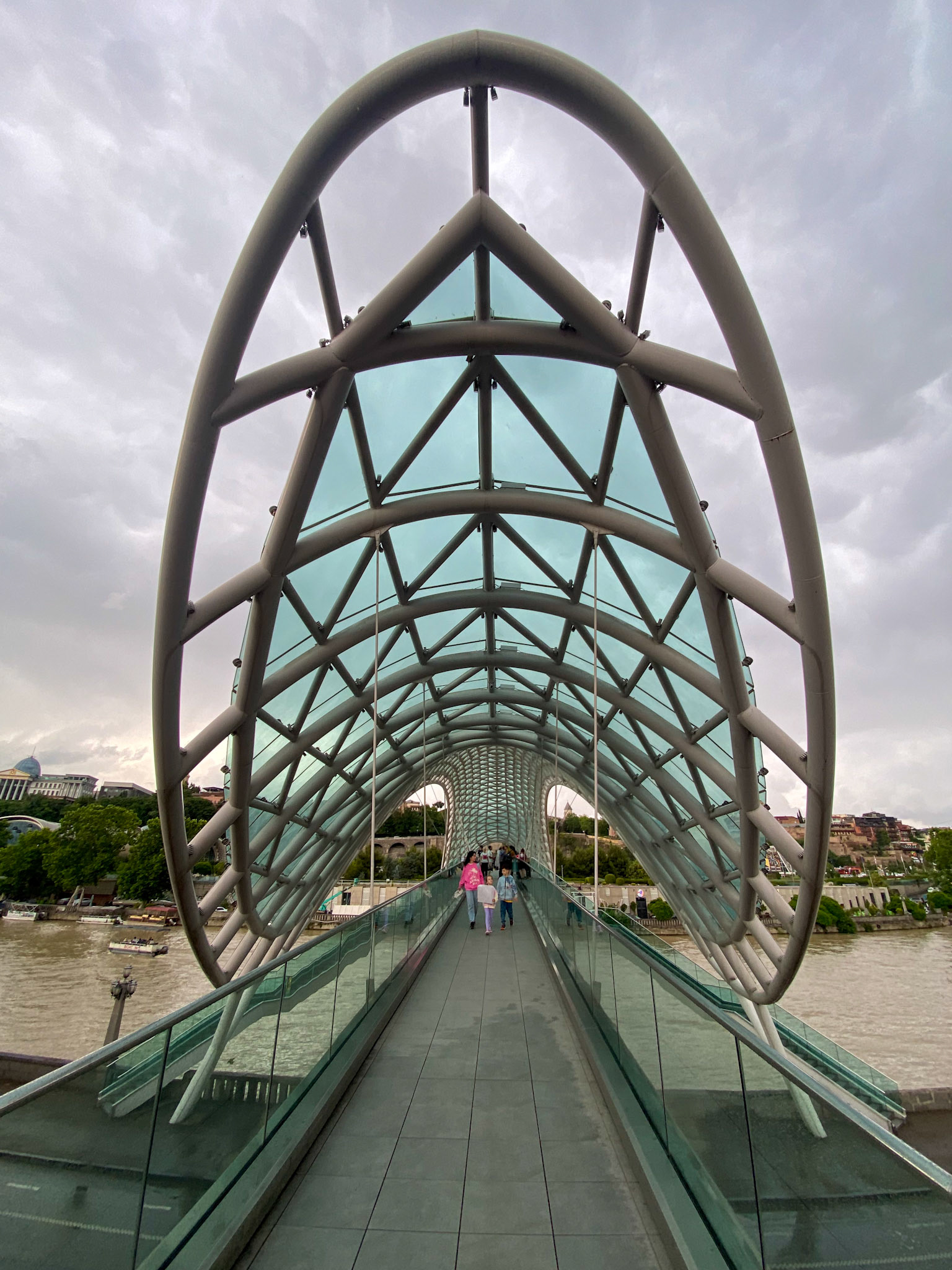
The Bridge of Peace
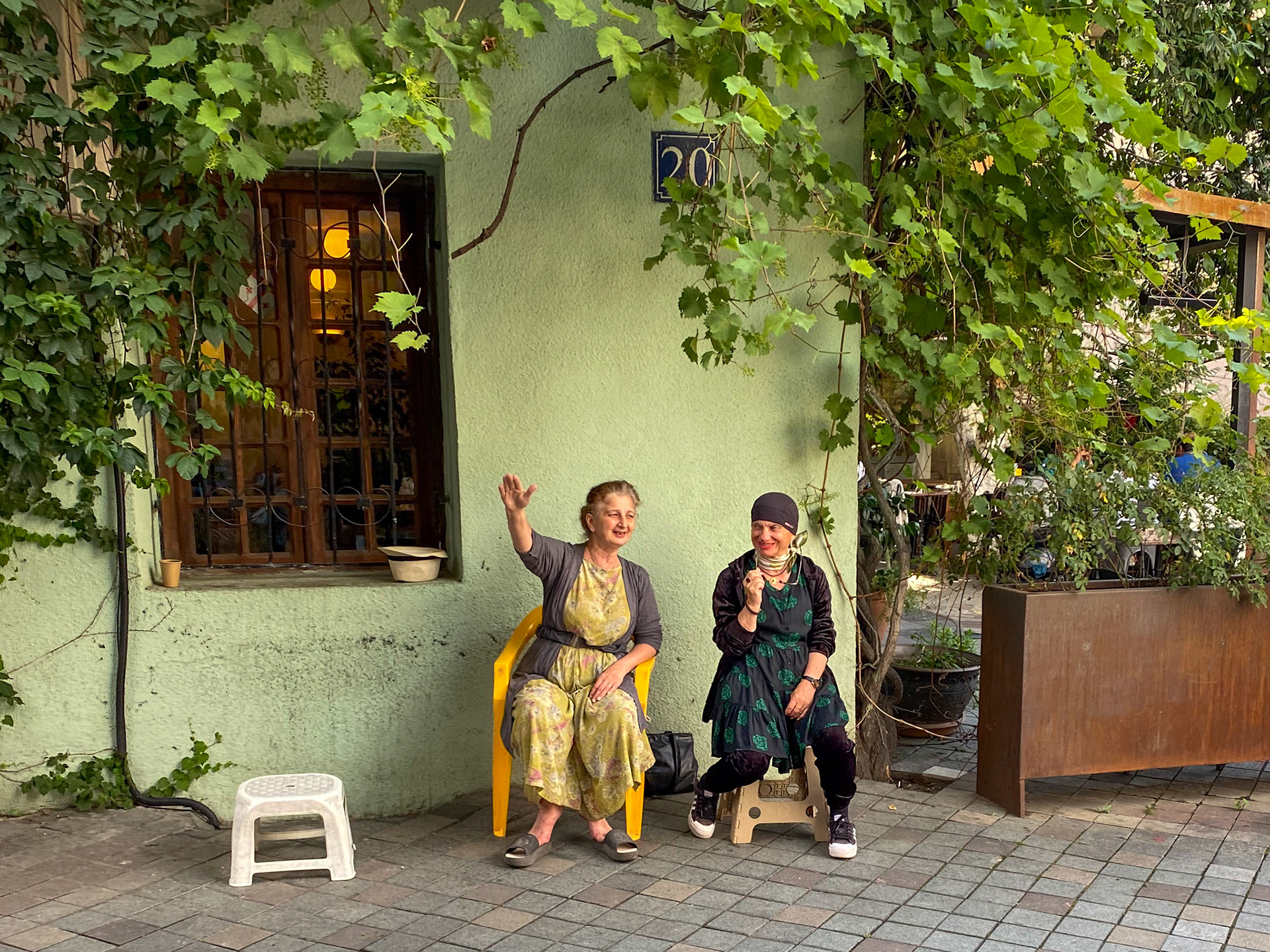
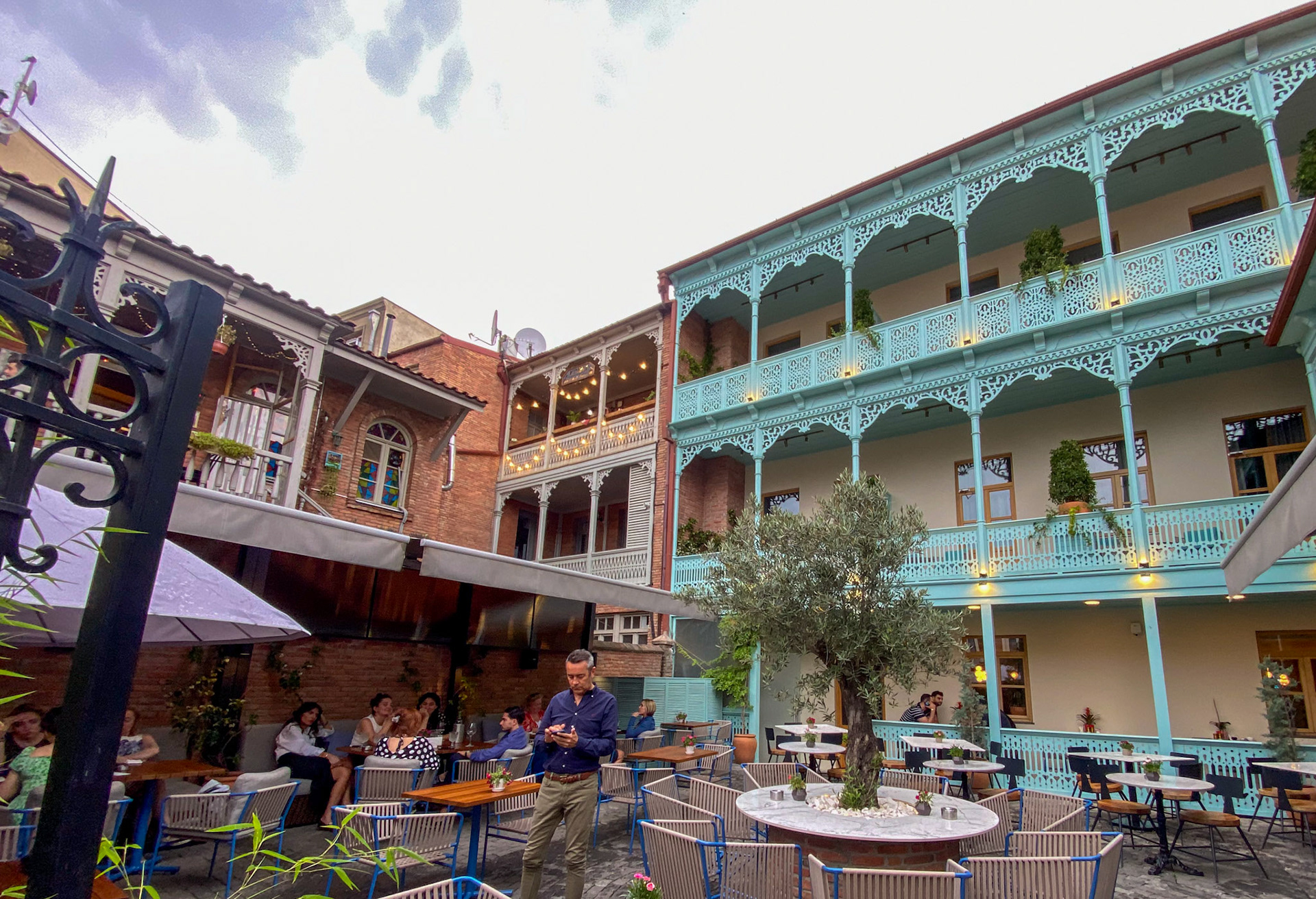
A good number of the remodeled buildings are transformed in hotels
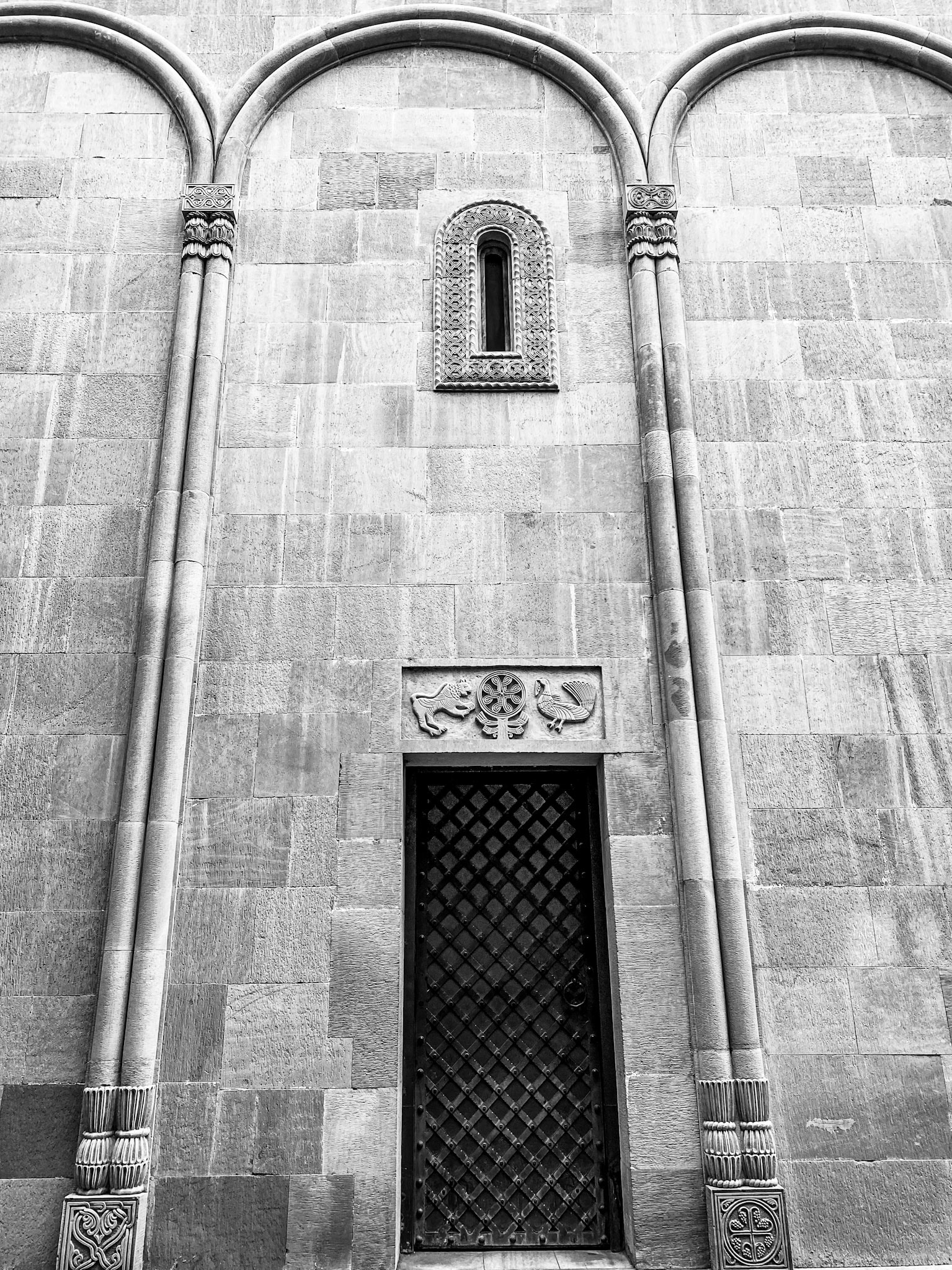
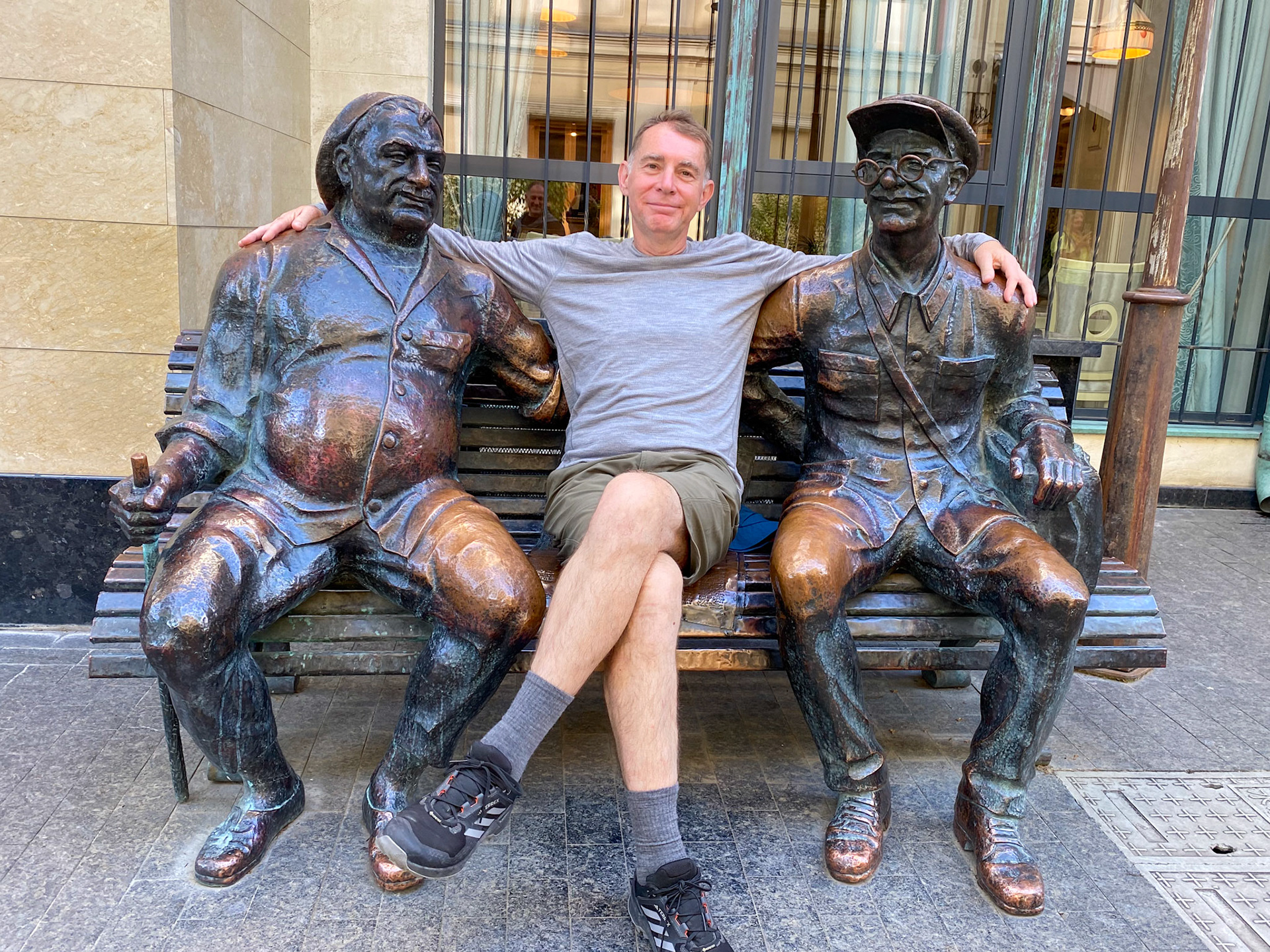
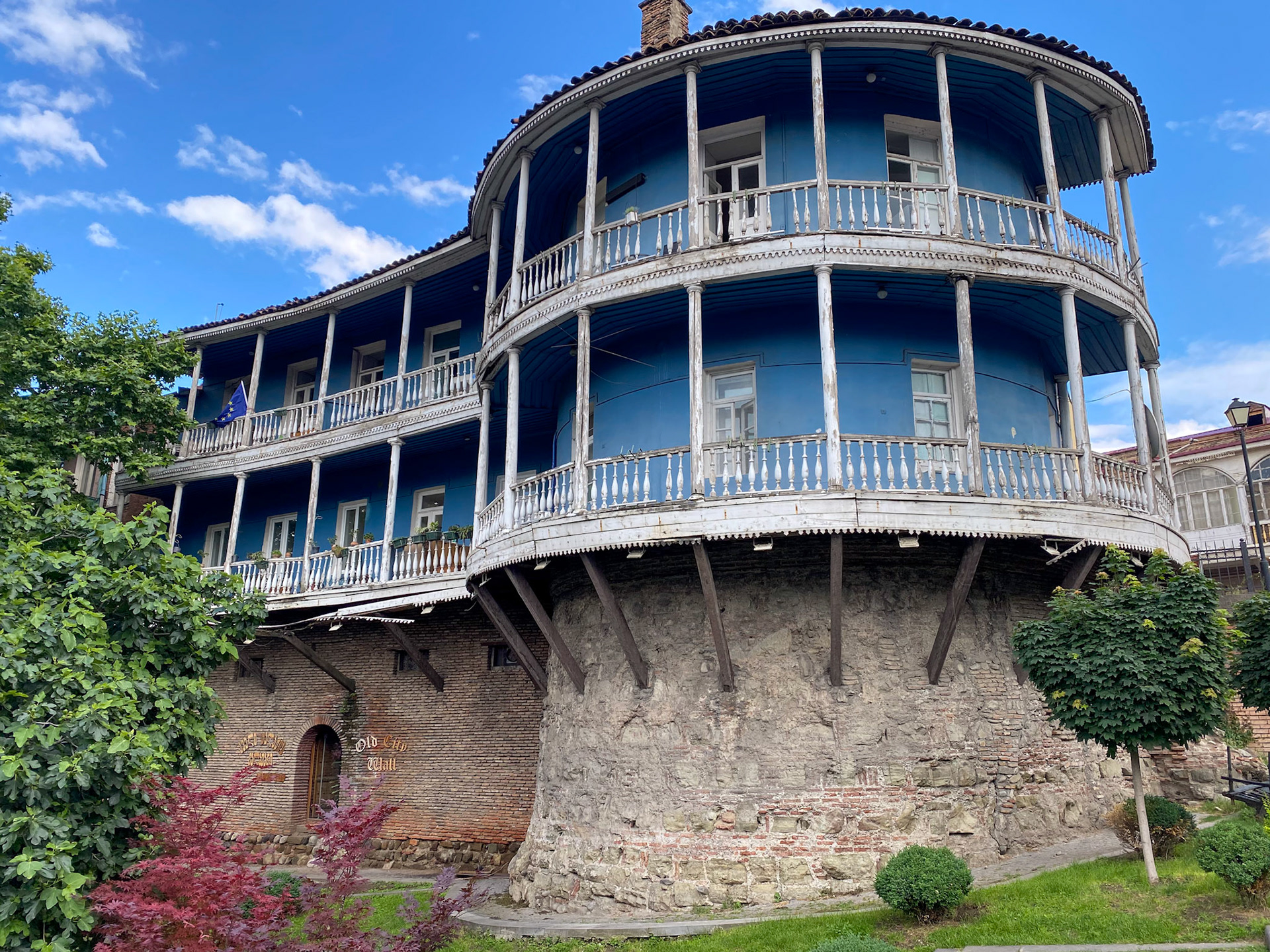
I love that so many building here have wooden balconies. Maybe because it reminds me of New Orleans :)
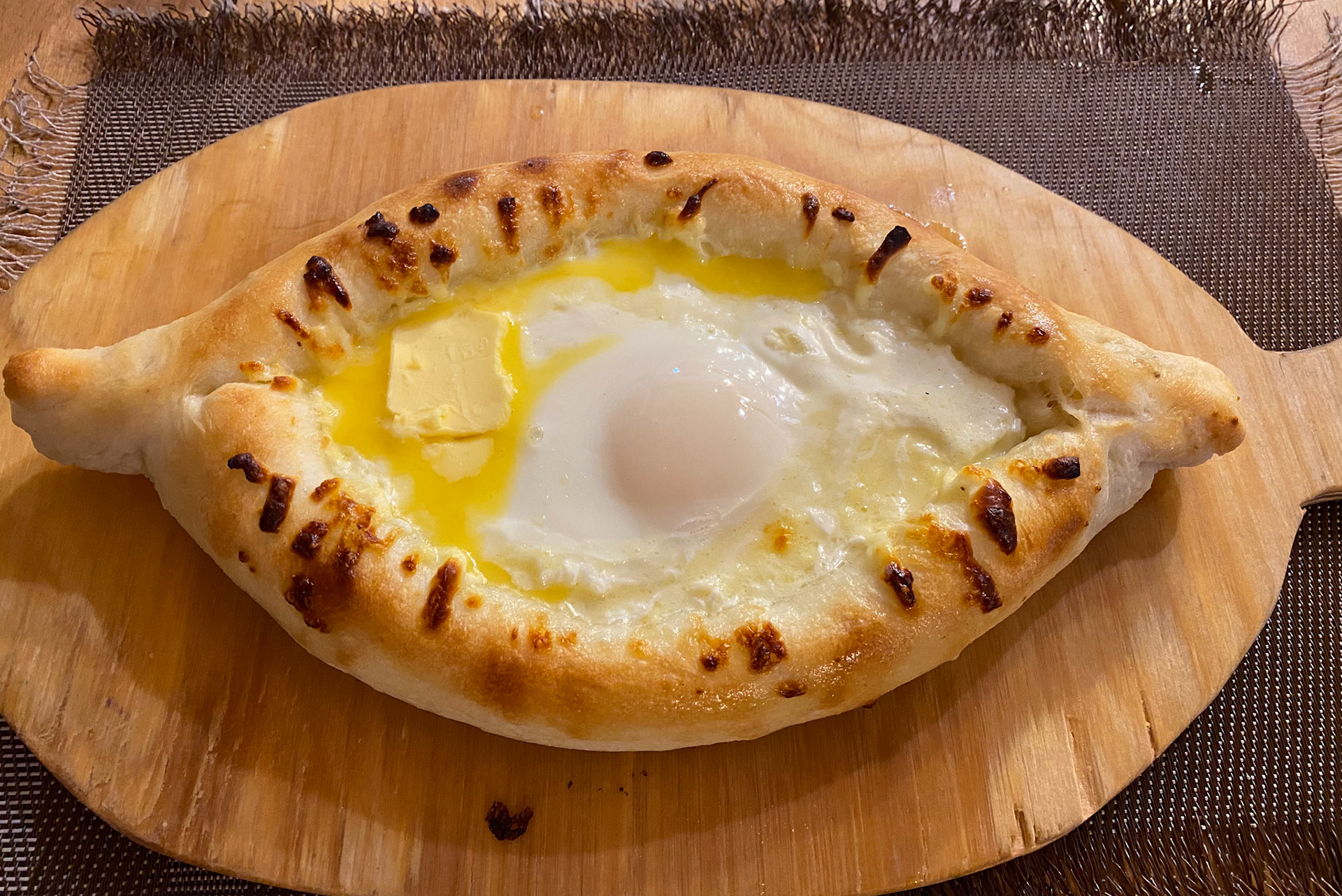
Adjaruli Khachapuri. As soon as it’s served, you have to swirl the ingredients togeth in er with your fork until the egg and butter are completely blended with the mass of cheese. Then tear a piece of the bread and dunk in!
Day 39a - Tbilisi to Omalo, Georgia
Today will remain engraved in my memory for its intensity, even while on a trip that created so much emotion already!
The traffic leaving Tbilisi was as terrible as when we got in, with many drivers completely distracted by their cell phones. Eventually, we were able to escape the city and found ourselves on some pleasant winding roads that meandered through hilly countryside.
Around 1:30 pm, we reached the Omalo turnoff, and the sign indicated that we were only 70 kilometers away from our destination. We thought we were almost there, but it turned out that 60 kilometers of the road ahead were unpaved, and we had to navigate uphill, downhill, and back uphill again. We thought that some sections leading to Ushguli were tough but they were nothing compared to this road, for dozen of kilometers! Thankfully we had now new tires that performed very well.
There were some very muddy sections and exposed rocks that posed challenges as we climbed over them. Along the way, we encountered two Czech riders on Vstroms 650 who let us pass, and we also came across several cattle herds with cowboys guiding them.
As we approached the highest pass (2850 m), the last few switchbacks were shrouded in clouds, depriving us of any view. At times, we completely lost sight of each other. On the other side of the mountain, the weather changed, and it was sunny with patches of snow still clinging to the sides of the steeper and off-camber switchbacks. There was also some mud, particularly in the valley, which made the last 20 kilometers very challenging.
Further along the road, we encountered a flooded section of the river, with only small islands of gravel providing passage through the water. In the distance, we spotted two Mitsubishi Delicas (I love those) and a group of people standing in the mud, attempting to free a stuck truck. One of the Mitsubishis was in the process of pulling out the truck. We looked at that, wondering if we could go through ourselves. Someone told us that it had rained for 3 days and that’s why the condition of the road was so bad, especially in that clayish section.
We finally managed to cross that challenging section and continued our journey along the road. There were still several very slippery sections to navigate before we reached the final set of switchbacks that would lead us up to the small plateau where Omalo is located at 1850m of elevation
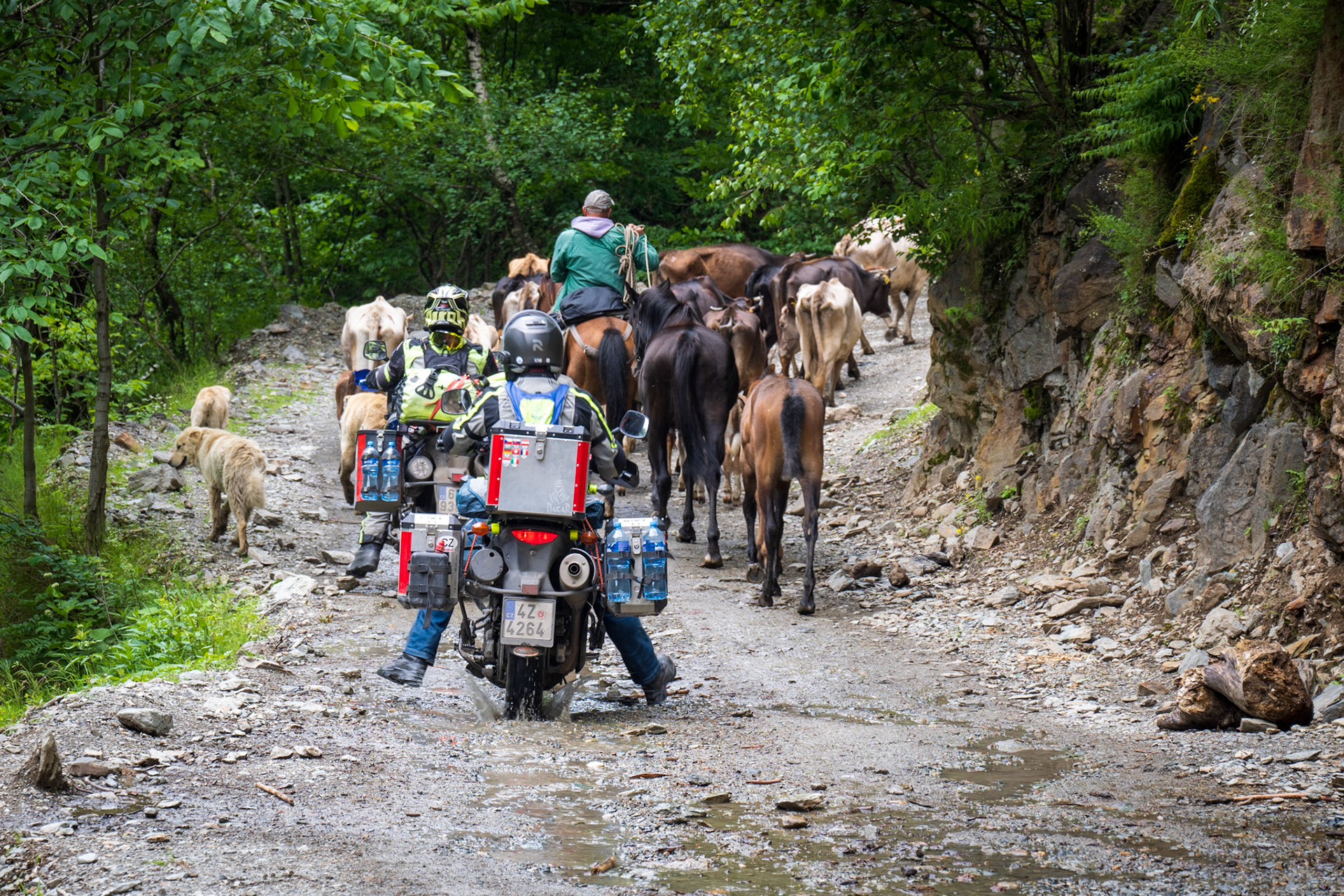
The Czech riders we ended meet with the next day as well
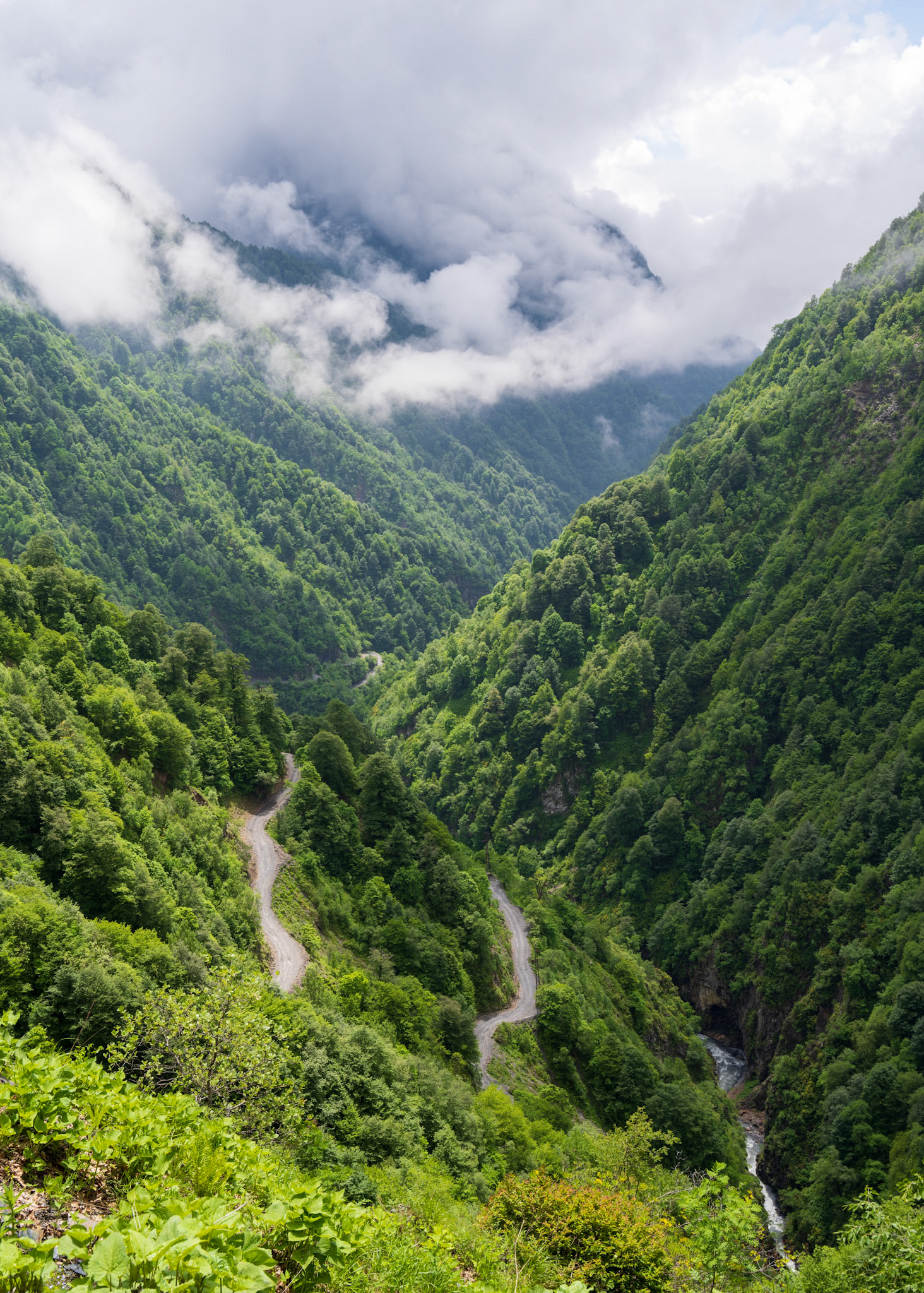
That's were we came from, right down along the river. Quite a steep climb!
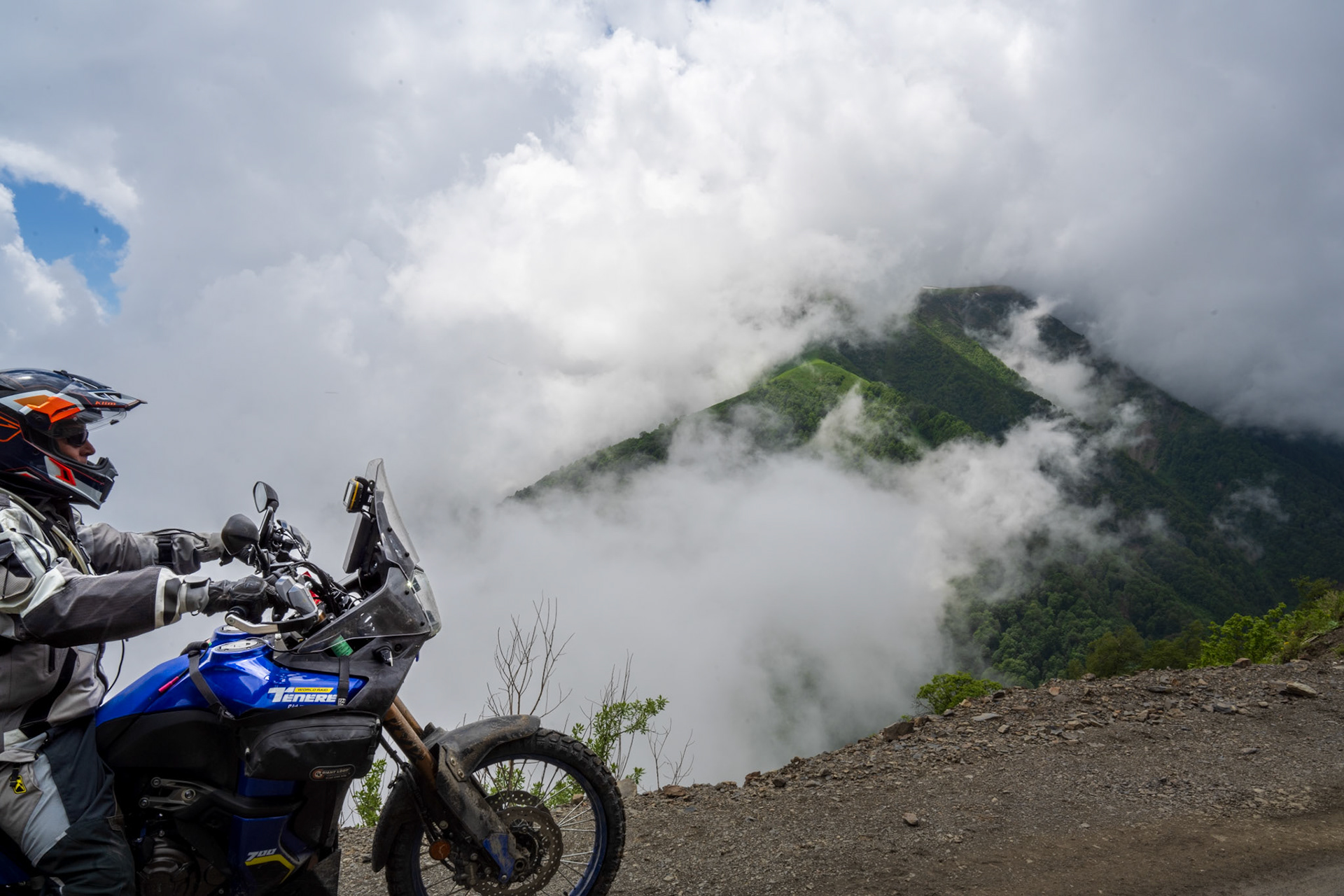
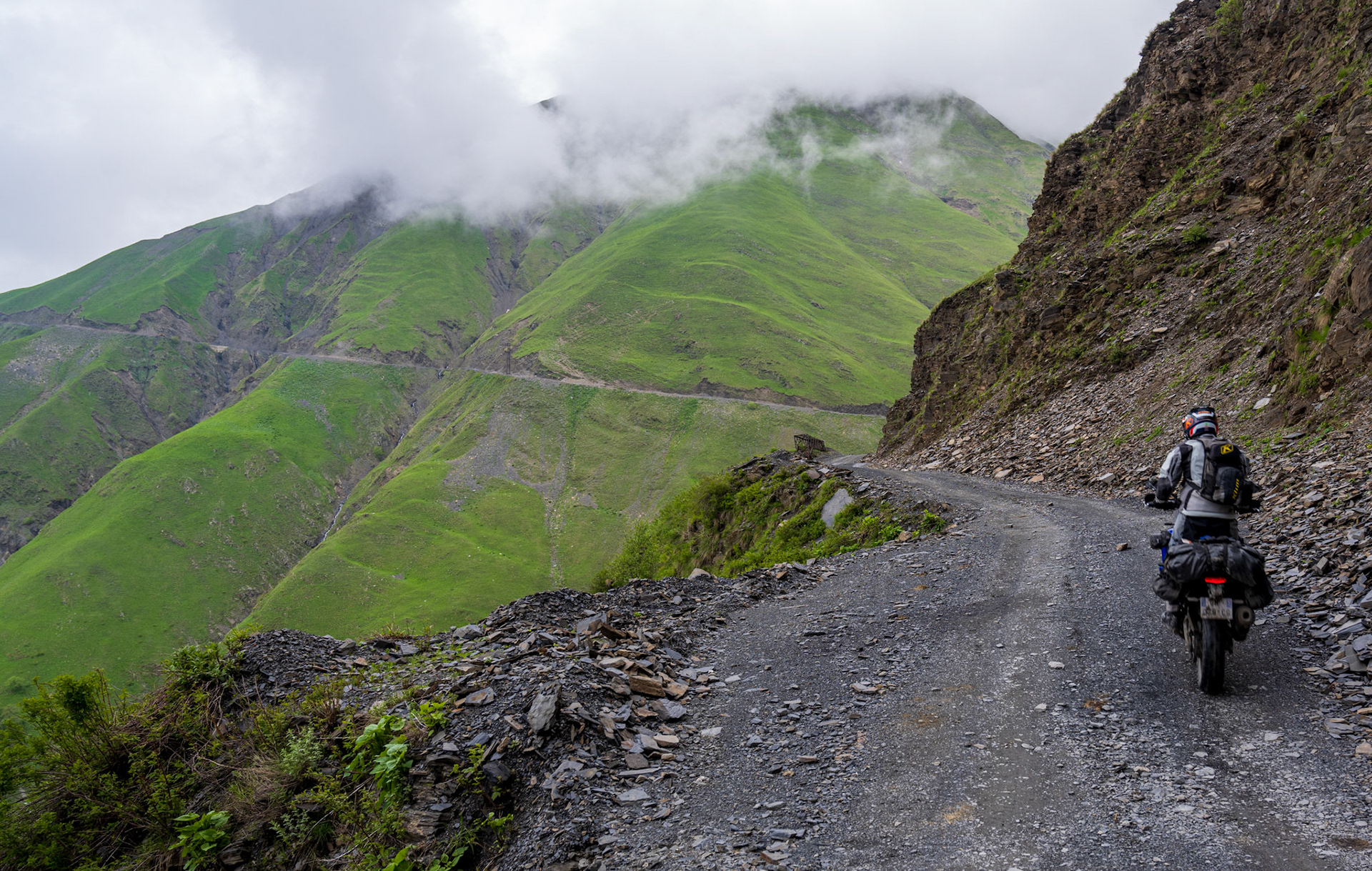
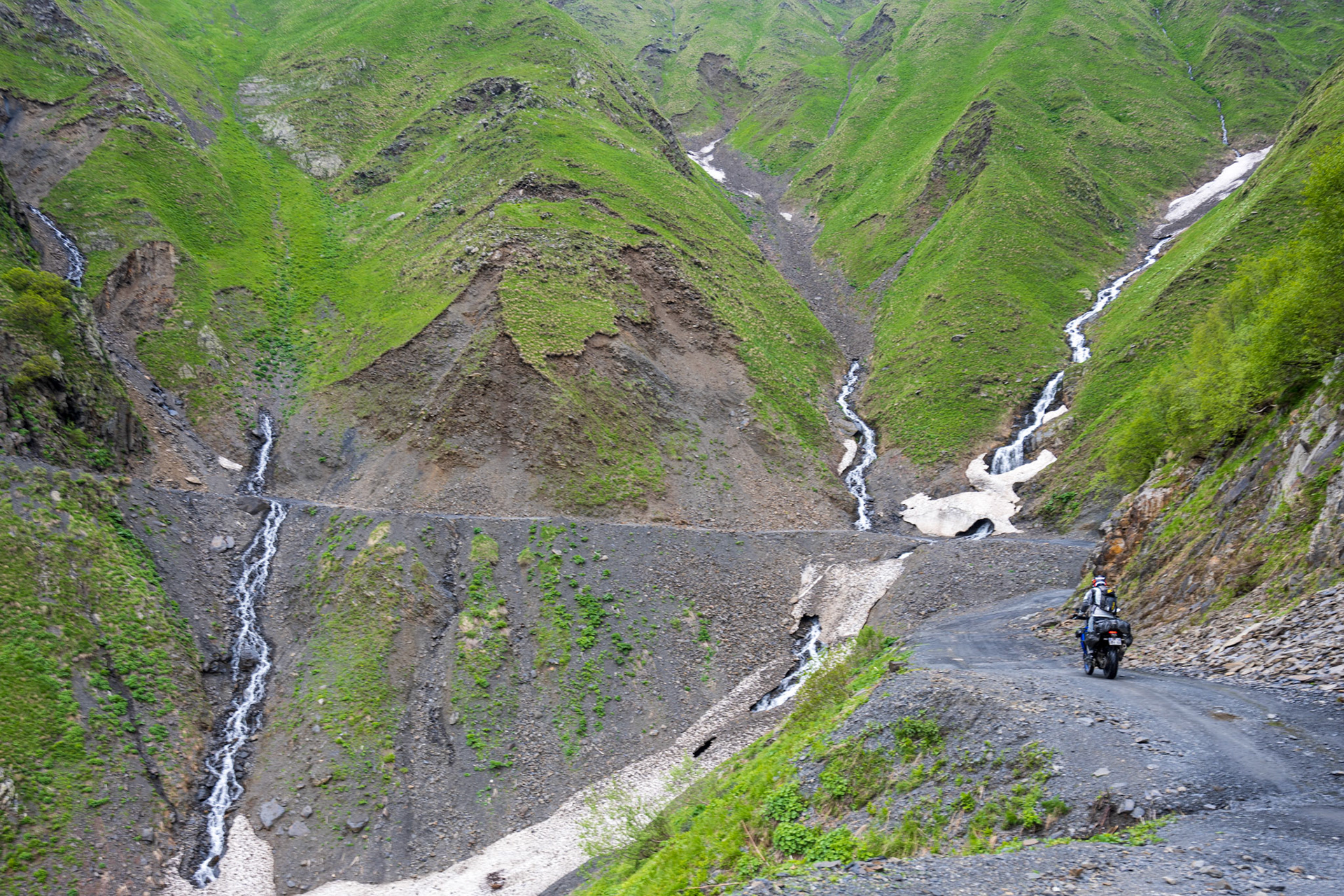
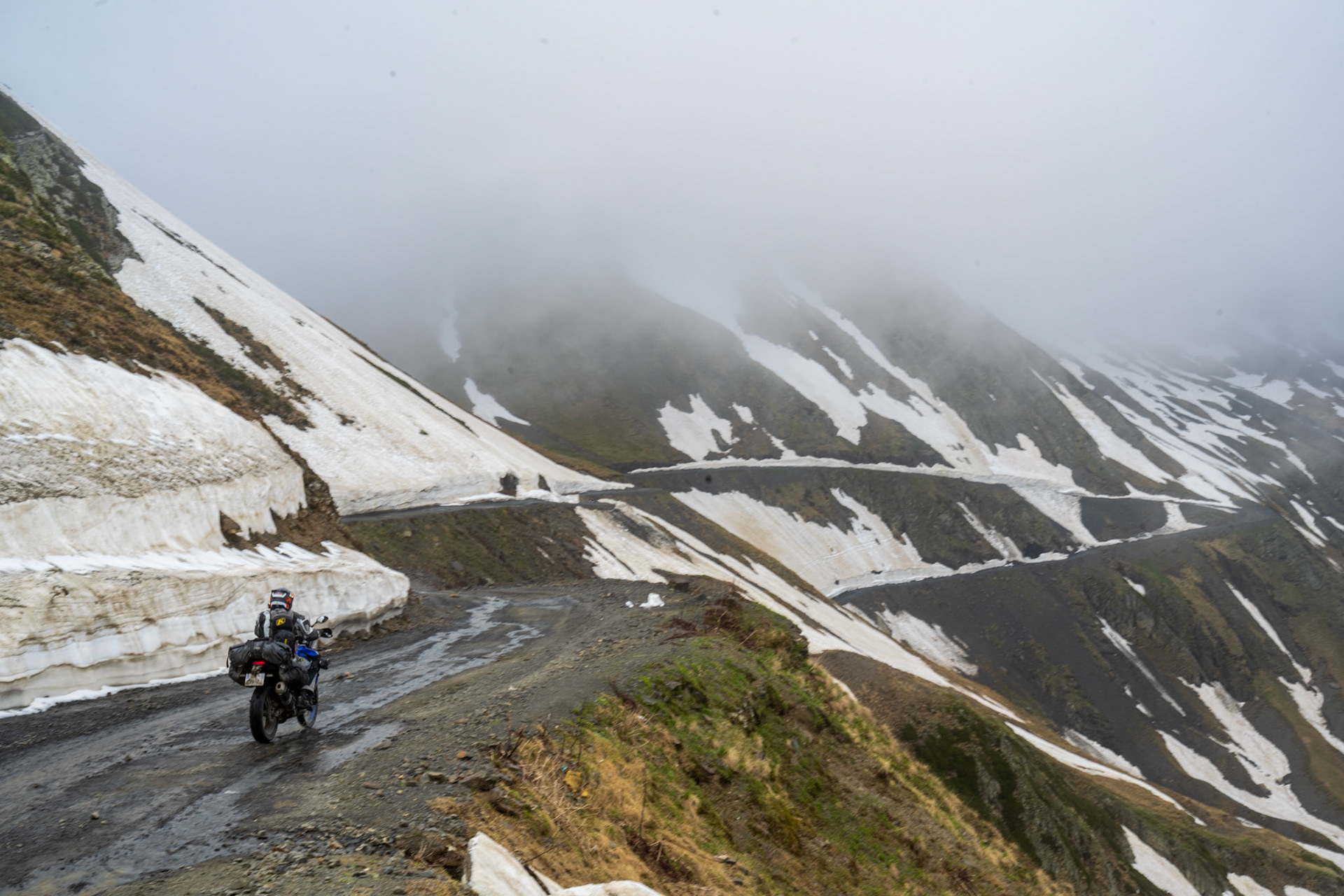
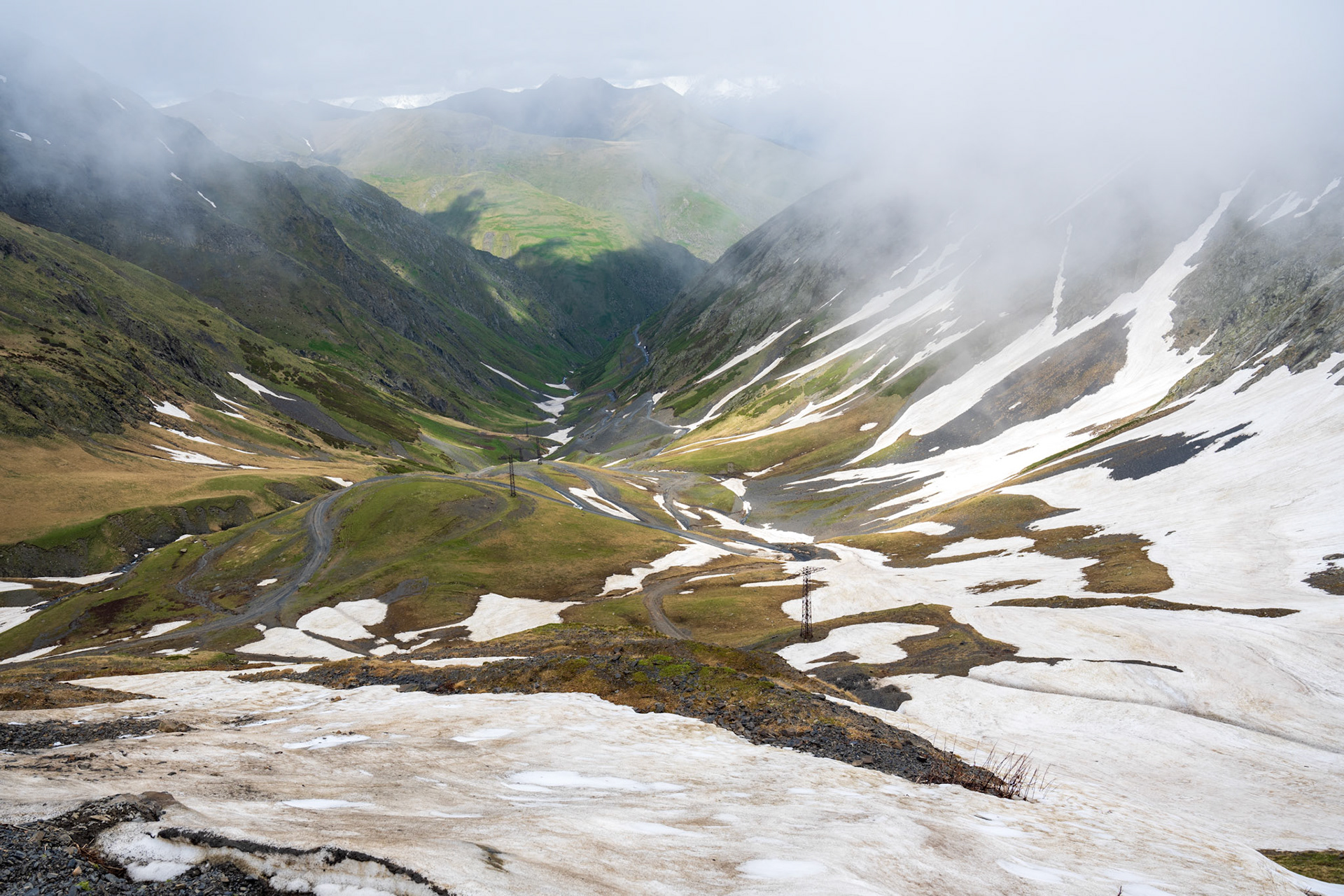
Finally going down after the pass
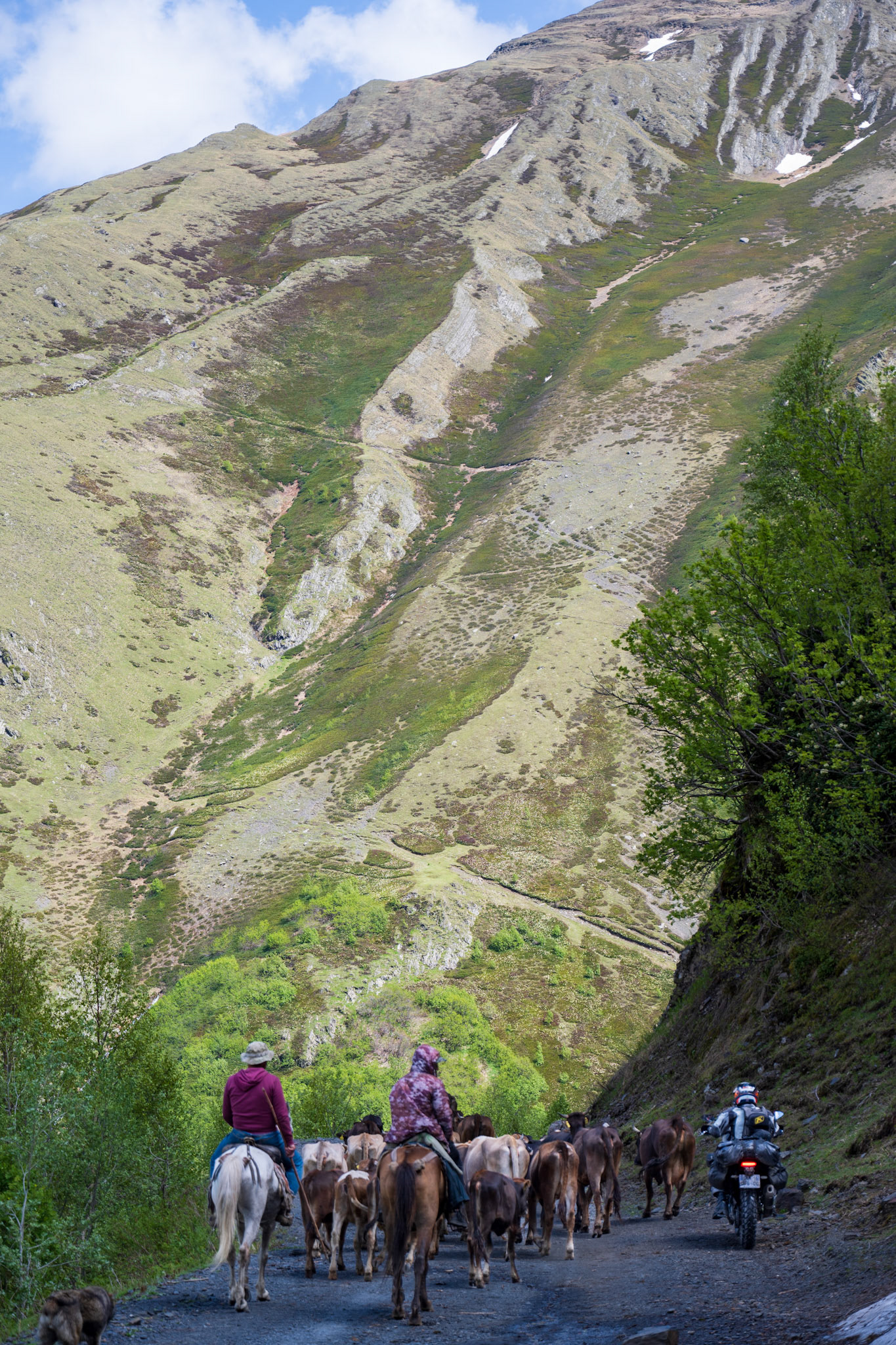
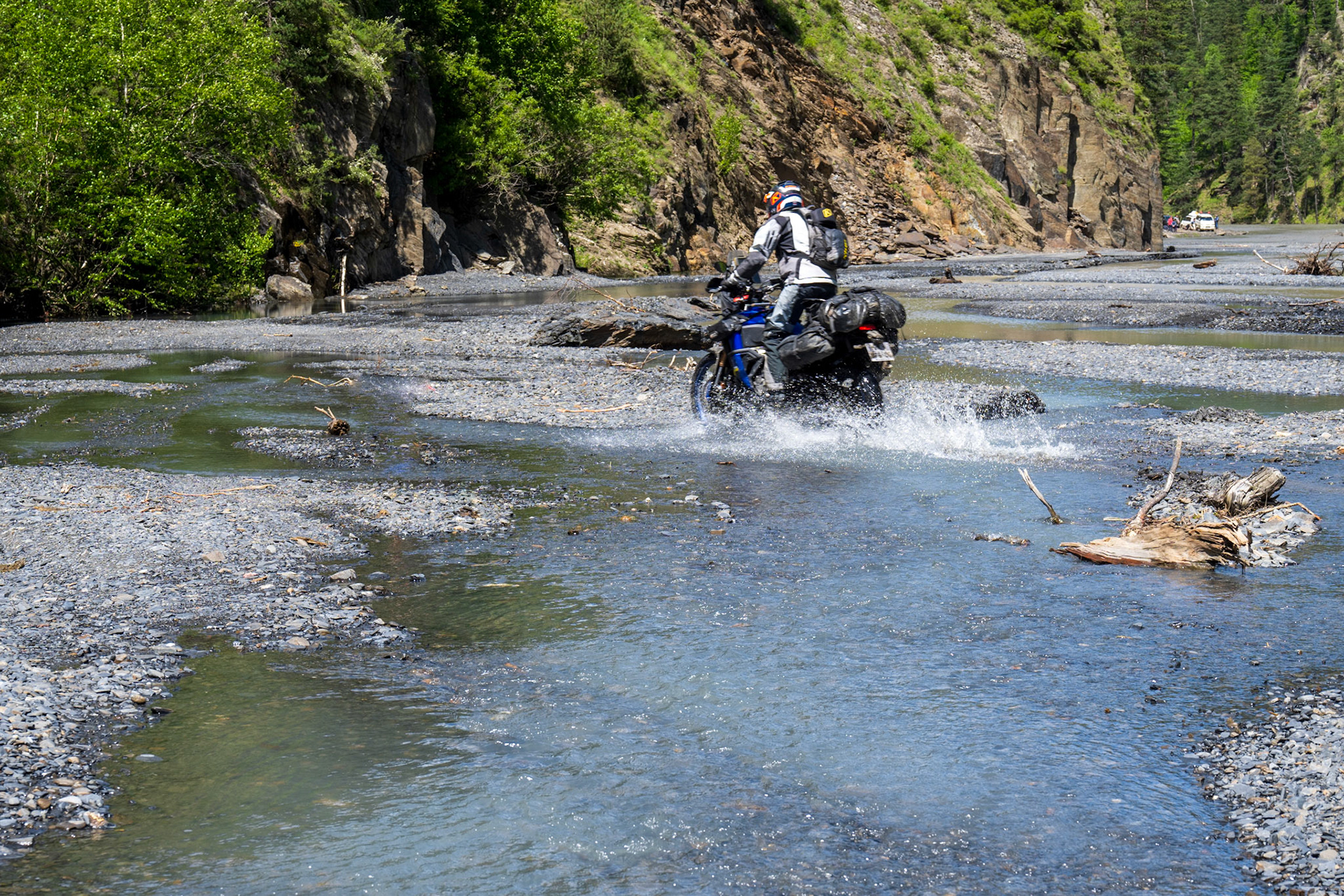
The road and the river, intertwined, become one
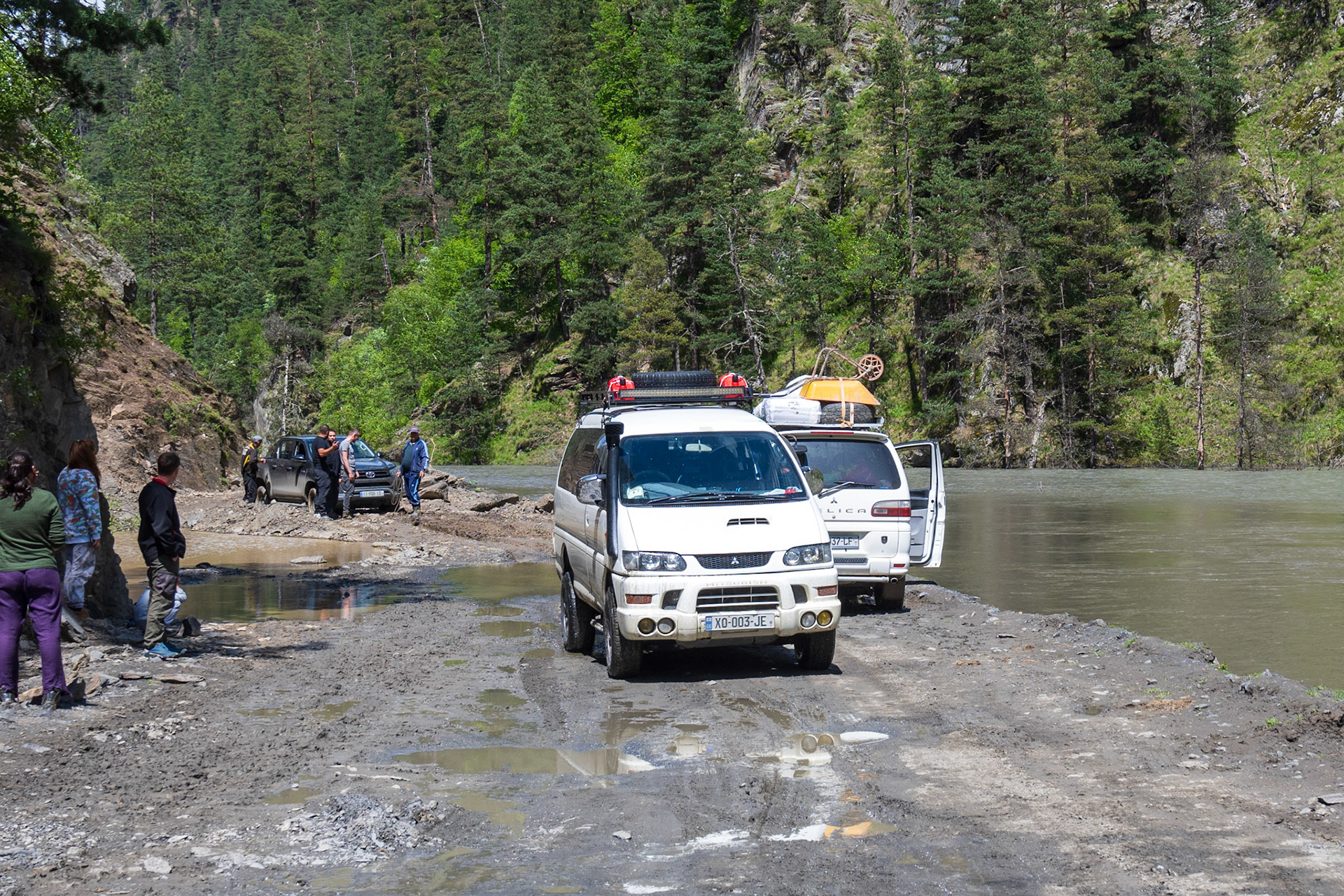
We were quite anxious to know if would succeed crossing that muddy path. A bystander had to give a push to Dirk at some point.
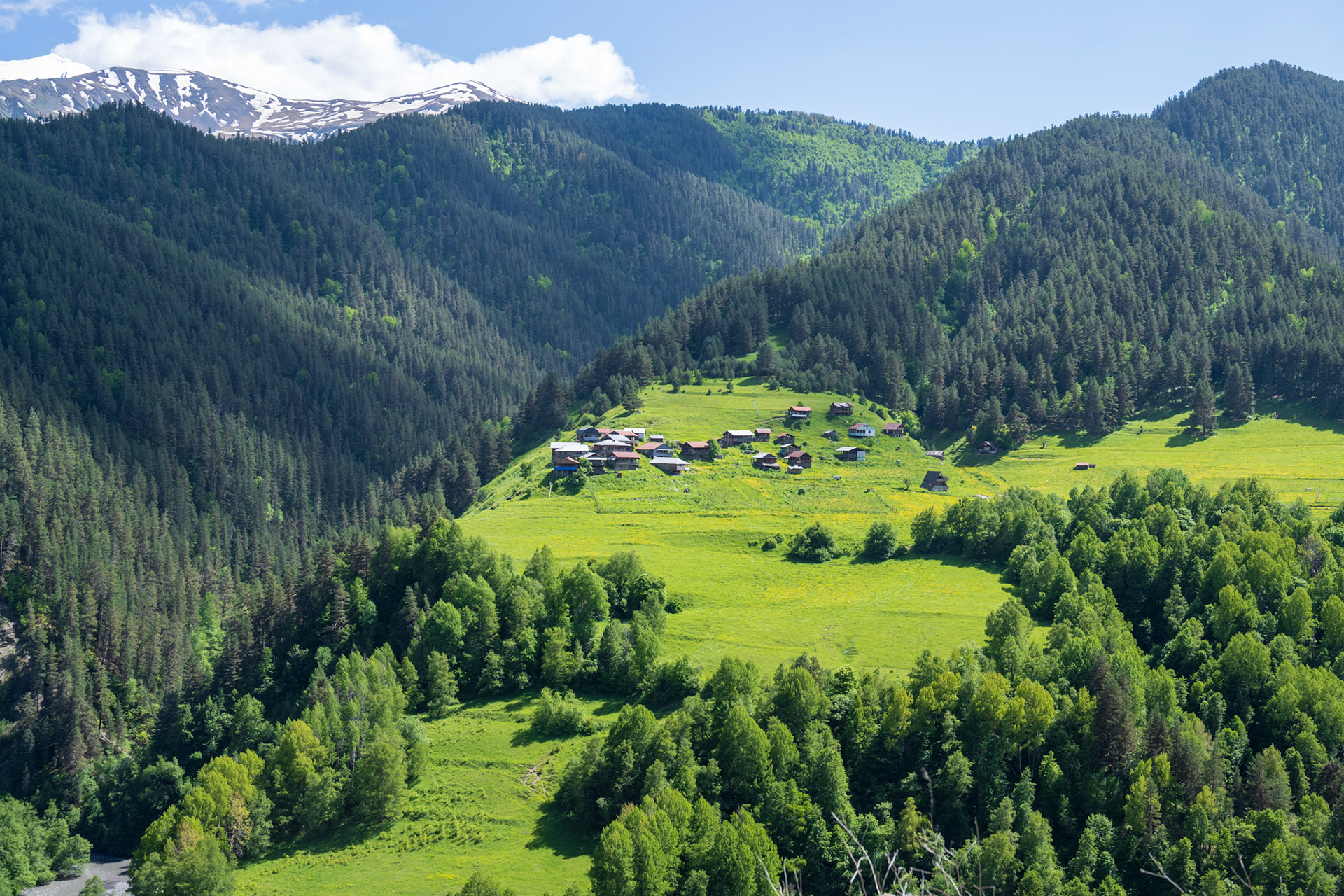
A small village on our way to Omalo
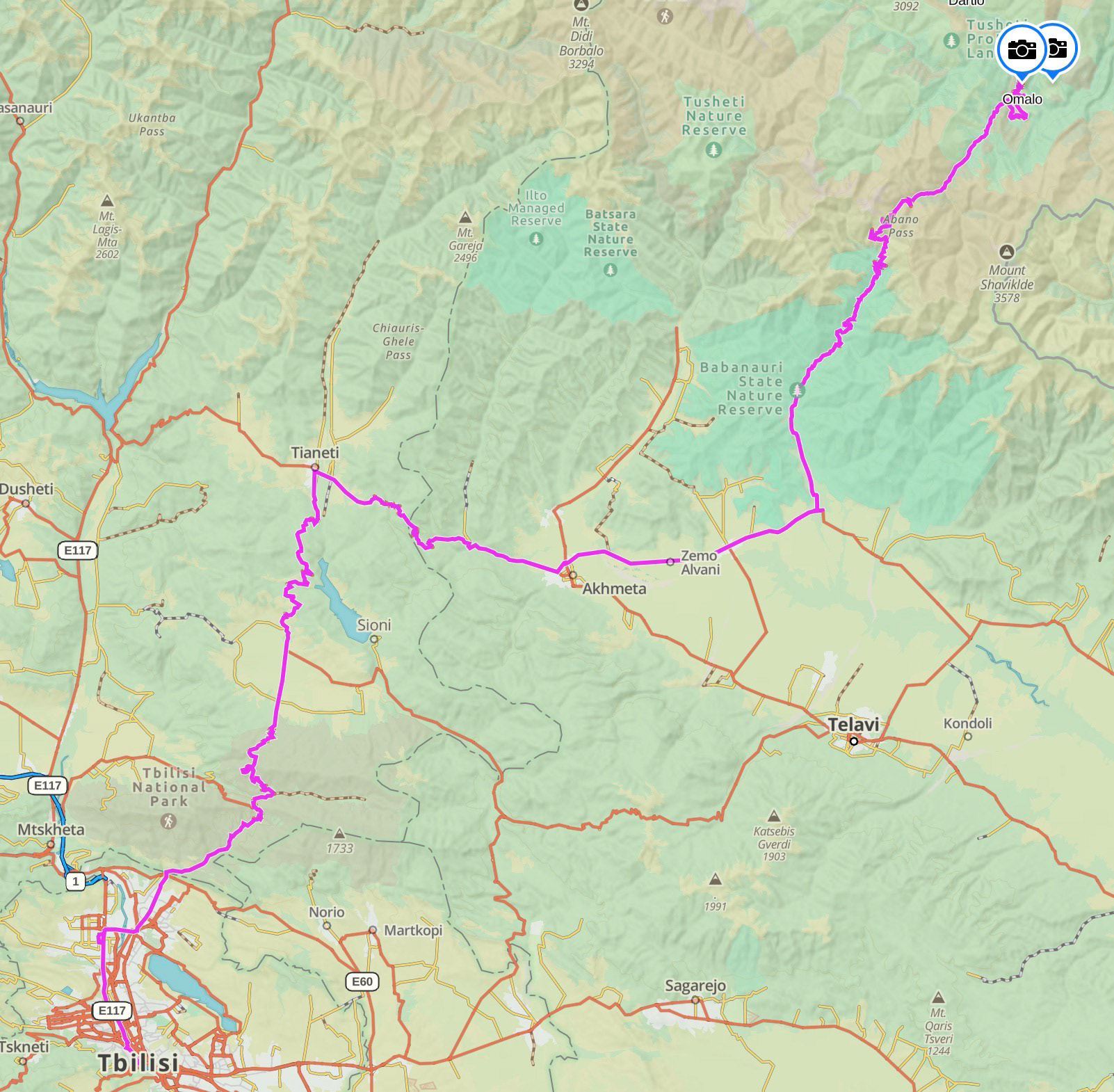
Day 39 - 210 km
Day 39b - Omalo, Georgia
Omalo, where we’ve just arrived is the main community of Tusheti. The Tushs are traditionally shepherds. The cheese and high quality wool they produced is very famous and got even exported to Europe and Russia. The women are very talented in knitting and pressing felt. They make socks with some beautiful ornaments, woven carpets and fabrics for clothes.
The sheep and cattle breeding are still the leading branch of the economy in the highlands of Tusheti. The shepherds spend the summer months in the highlands but move their cattle and sheep back to the lowland villages in wintertime.
Our first stop was the Old Omalo, where four centuries-old tower fortresses, known as koshkebi, still stand. Afterward, we checked into our guesthouse, where our hosts warmly welcomed us. The guesthouse offered a stunning view of the mountains, which left us in awe.
Once we changed and settled in, we went for a walk, marveling at the tranquility and the breathtaking surroundings. There are no restaurants or electricity in the village, but we stumbled upon a "cafe" where we sat outside, sipping our drinks and immersing ourselves in the atmosphere and the awe-inspiring view.
Given the remoteness of the village, we had anticipated preparing a simple meal like pasta. However, to our pleasant surprise, our hosts offered to prepare dinner for us. But the best part was when they brought these astonishing plates with such a large variety of food.
Perhaps it was the enchanting view that enhanced our dining experience, as we were eating outdoors. Nevertheless, we genuinely felt that it was one of the best meals we had enjoyed in Georgia.
After such a challenge to arrive here, we felt that we were dreaming, being here in such a beautiful and serene place.
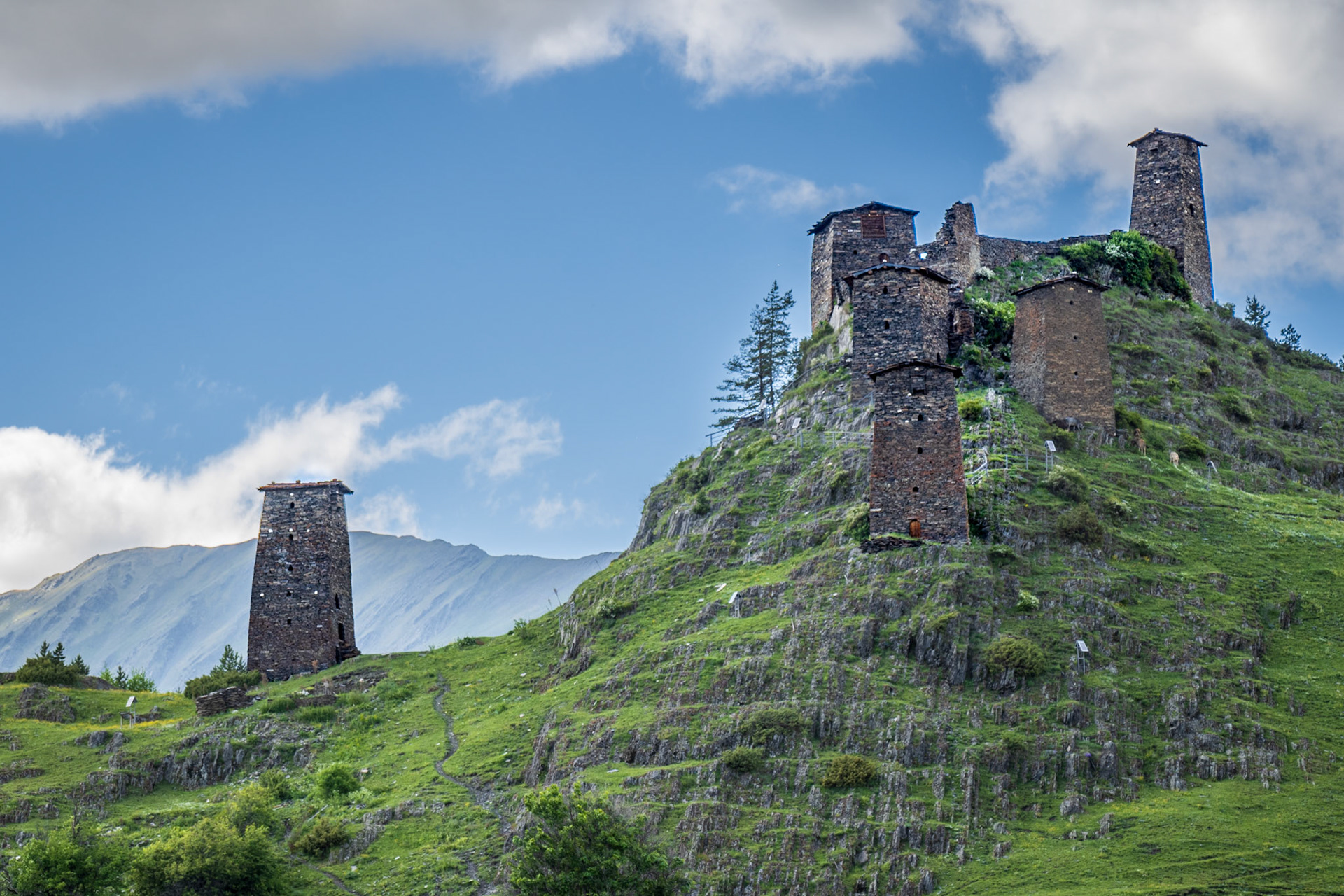
Similar towers but simpler than in Svaneti
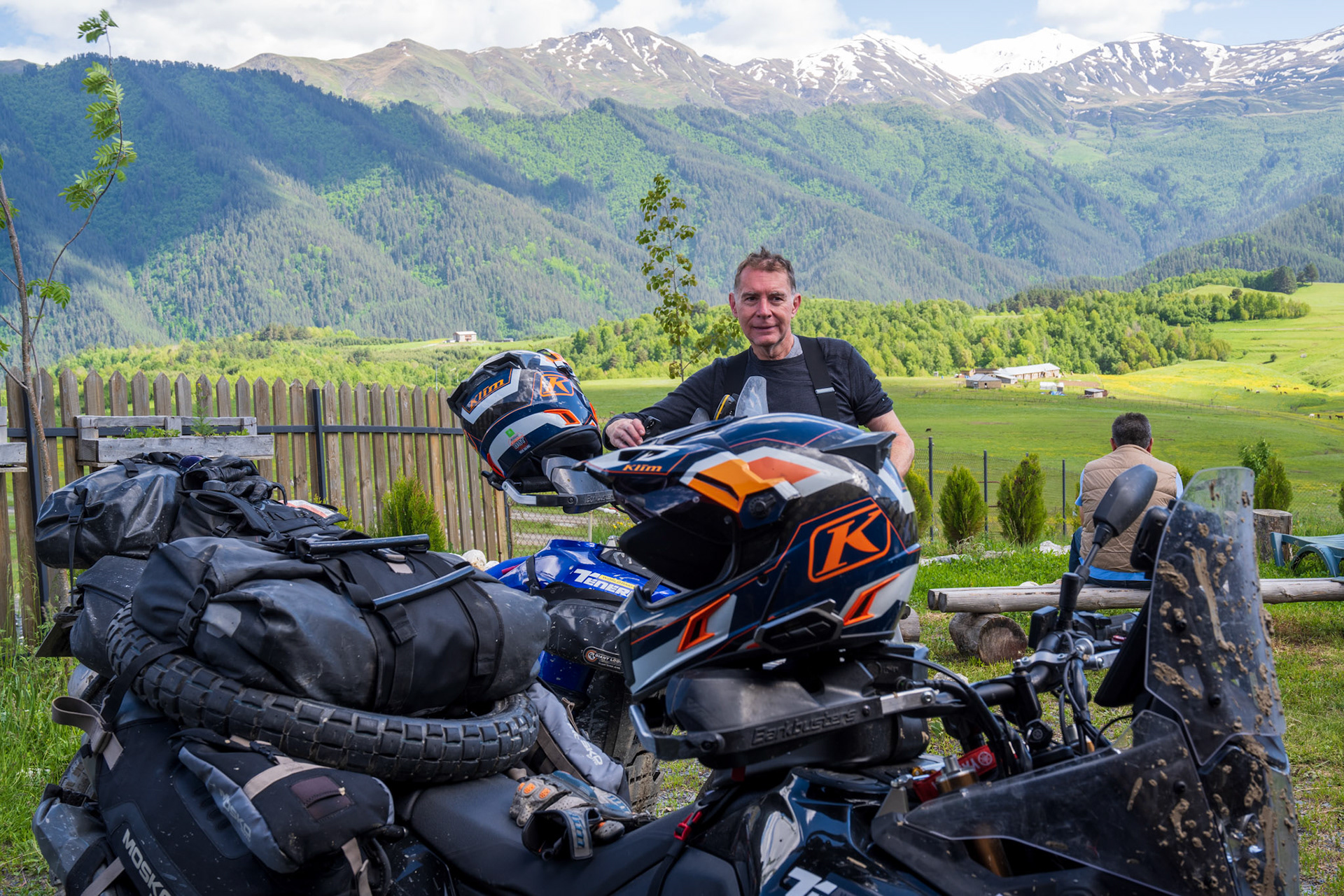
We feel incredibly fortunate to be staying in such a stunning place!

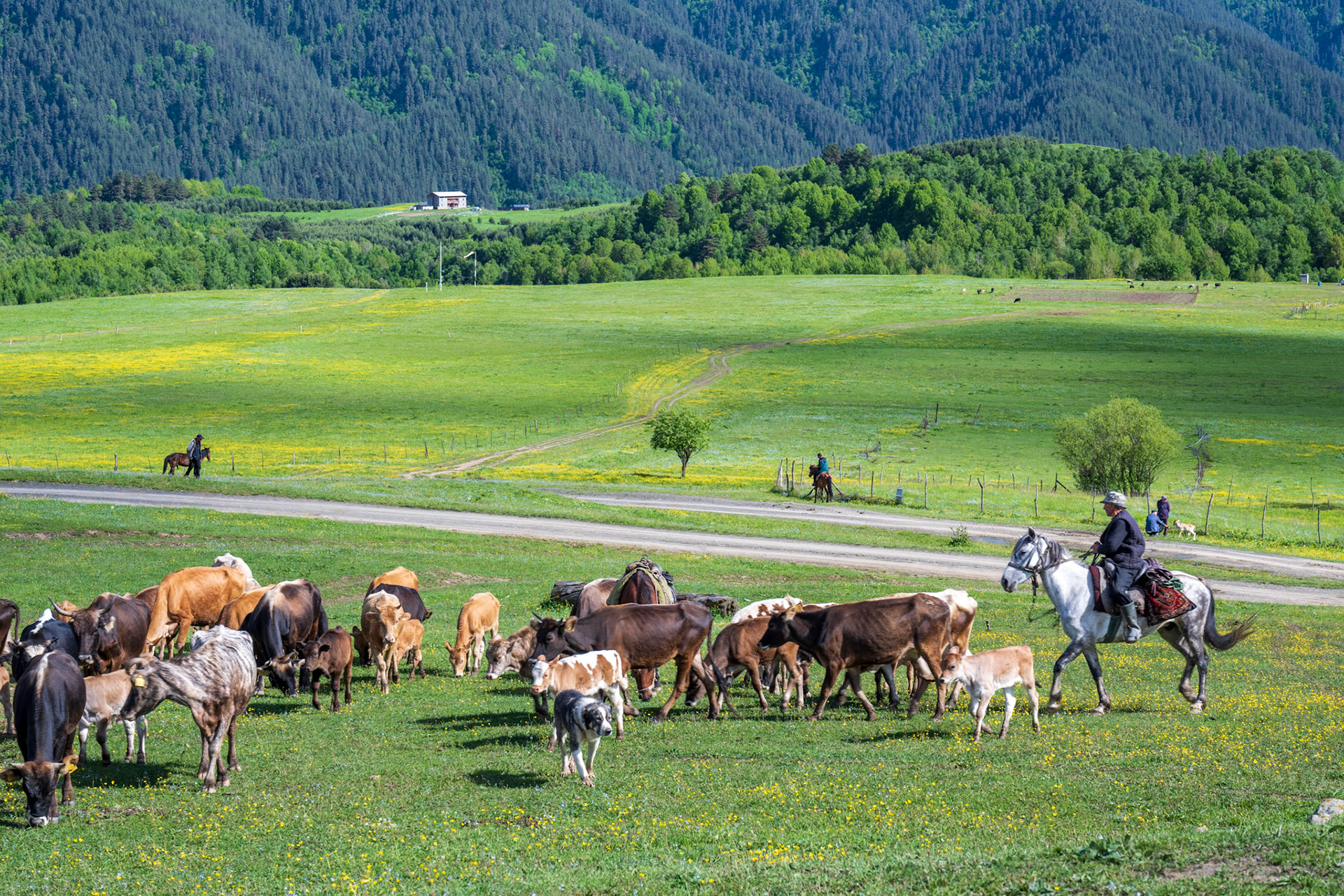
What a show, right from our deck!
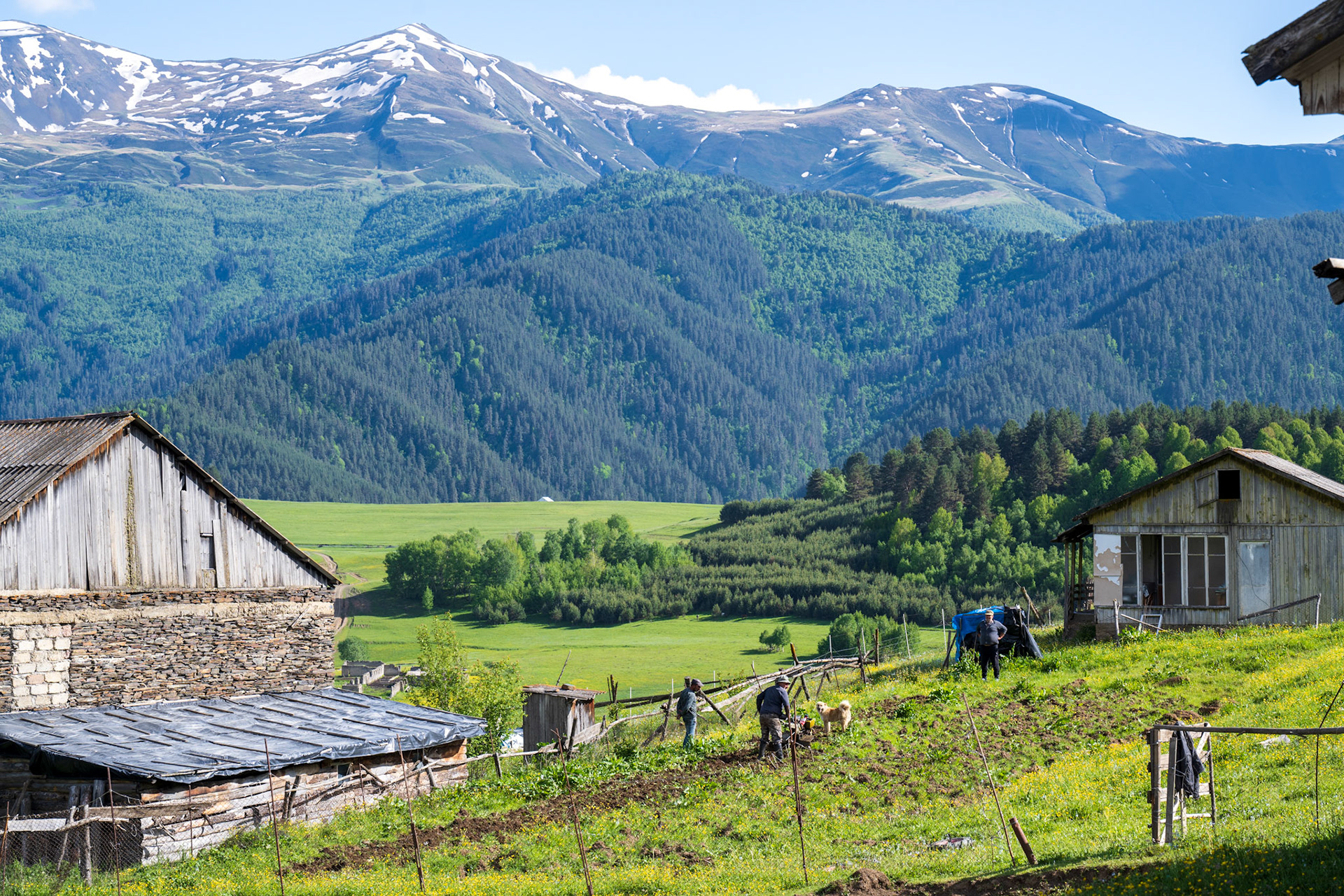
Working the field
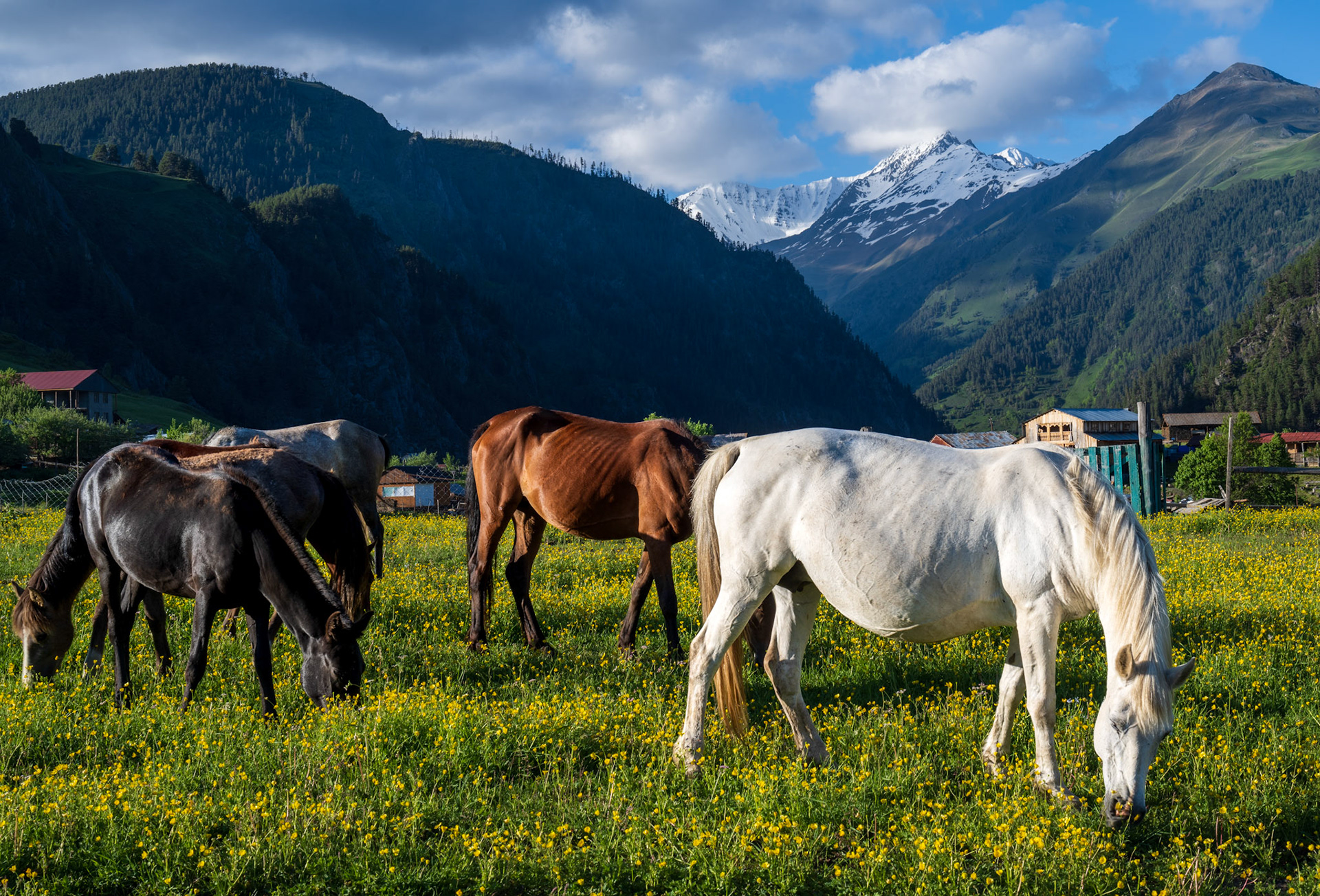
Horses roaming freely in this amazing scenery
Day 40 - Omalo to Stepantsminda, Georgia
We had a great moment again at the guest house, with a delicious and copious breakfast, stunned by the mountains views and by the spectacle of the cowboys leading a herd of horses.
But it was time to go, by the same (and only) road we took yesterday. Frankly, even if the scenery was gorgeous, I was not looking forward to fight the mud again. Luckily it had dried a bit since yesterday and it was not as hard.
The goal today is to ride the Georgian Military Road, a famous and very scenic route, almost up to the Russian border, that we will cross the day after. We initially planned to go through Azerbaijan and take a ferry across the Caspian Sea but unfortunately Azerbaijan keeps stubbornly its border with Georgia closed. Therefore we have to go North around the Caspian Sea, via Russia.
We had a look at the Ananuri Fortress whose walls date back to the 13th century while the church was added at the end of the 17th century.
Unfortunately our enjoyment of the road was completely spoiled by the hundred of trucks on the road. This is the only border crossing between Georgia and Russia and with Ukraine and Poland closed, the only land connection from the West. The embargo does not stop all those trucks (2/3 Armenians, 1/3 Turks) to cross every day. Tons of construction (tunnels etc.) also occur to compensate for the increase of traffic, mostly done by Chinese companies. Funny how much a simple ride can teach us about geopolitic
Anyway, that was not fun and we did not stop much till our destination, Stepantsminda, a valley town with the famous hilltop silhouette of Tsminda Sameba Church and the towering snowy cone of Mt Kazbek looking down from the west.
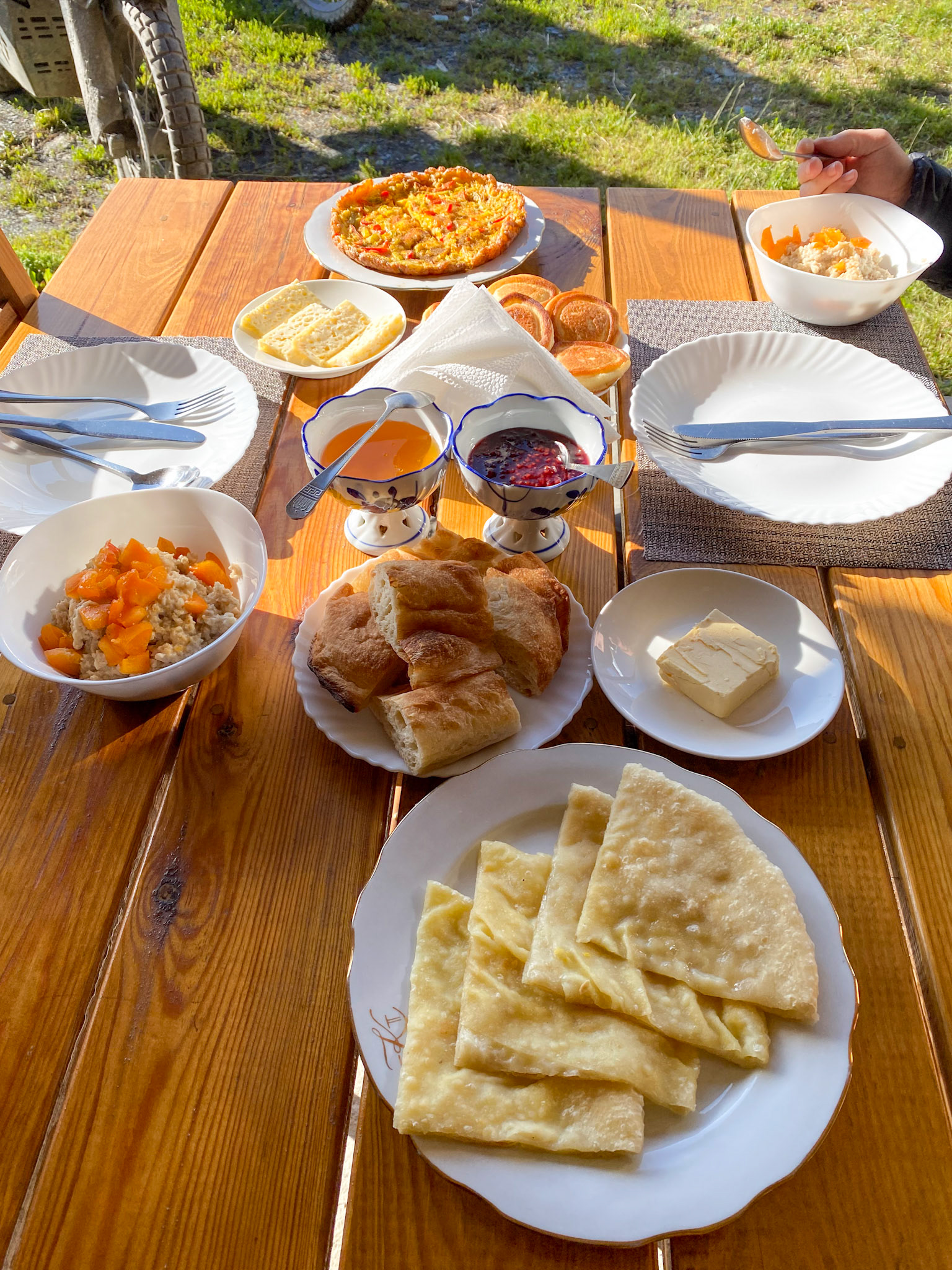
Delicious breakfast prepared by our hosts with the same stunning view...
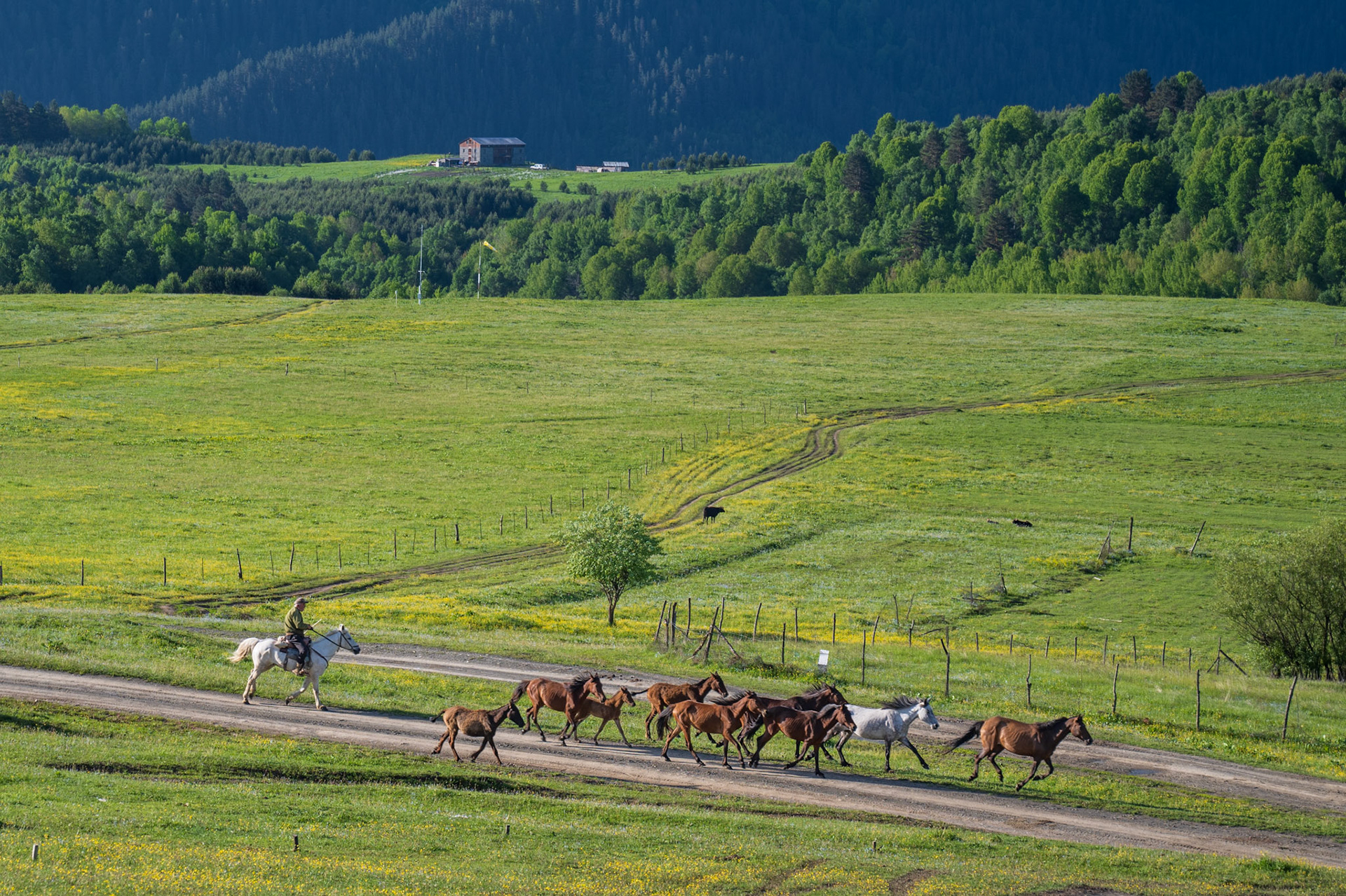
Local cowboys already at work.
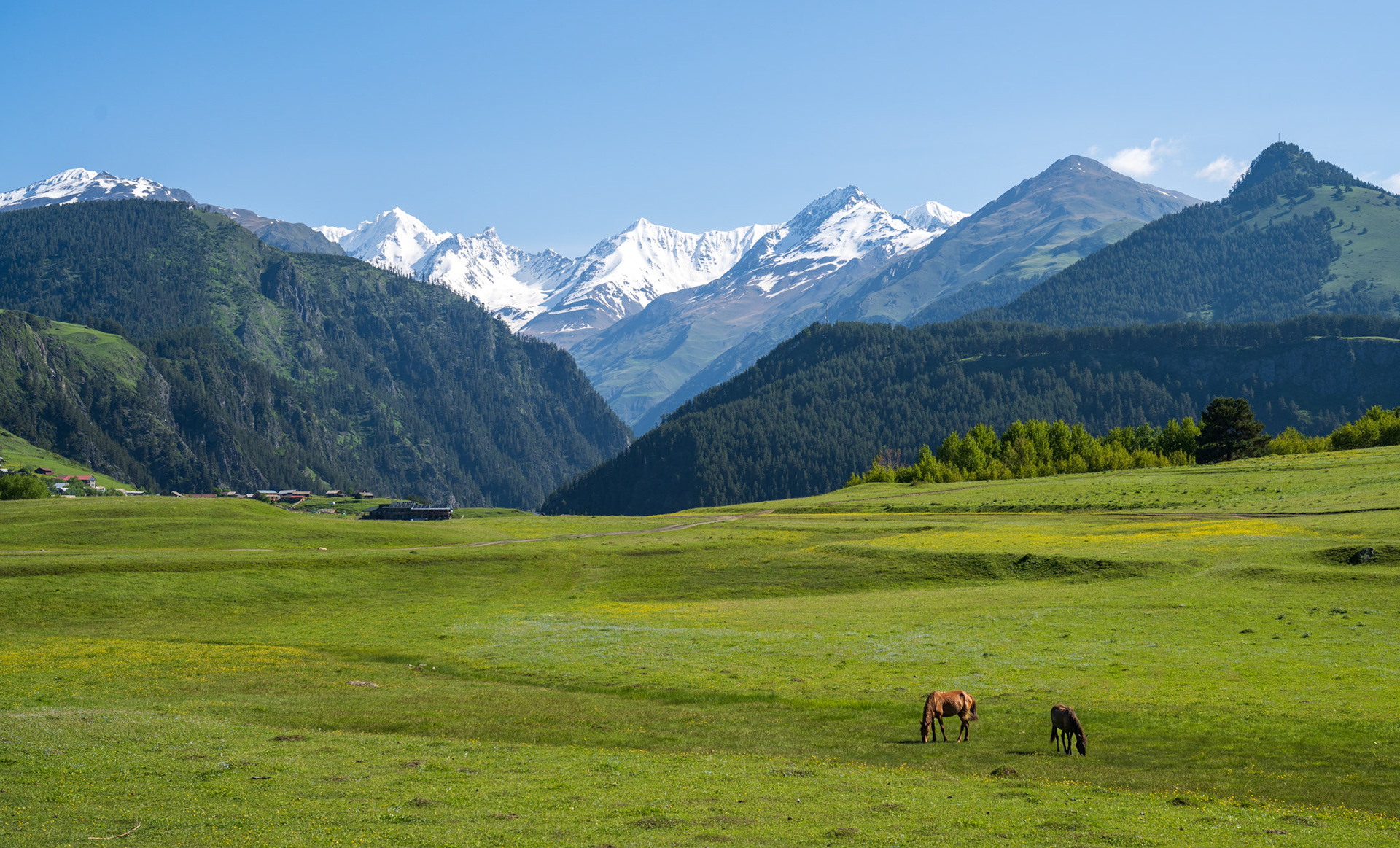
Goodbye Omalo, we will miss this place!
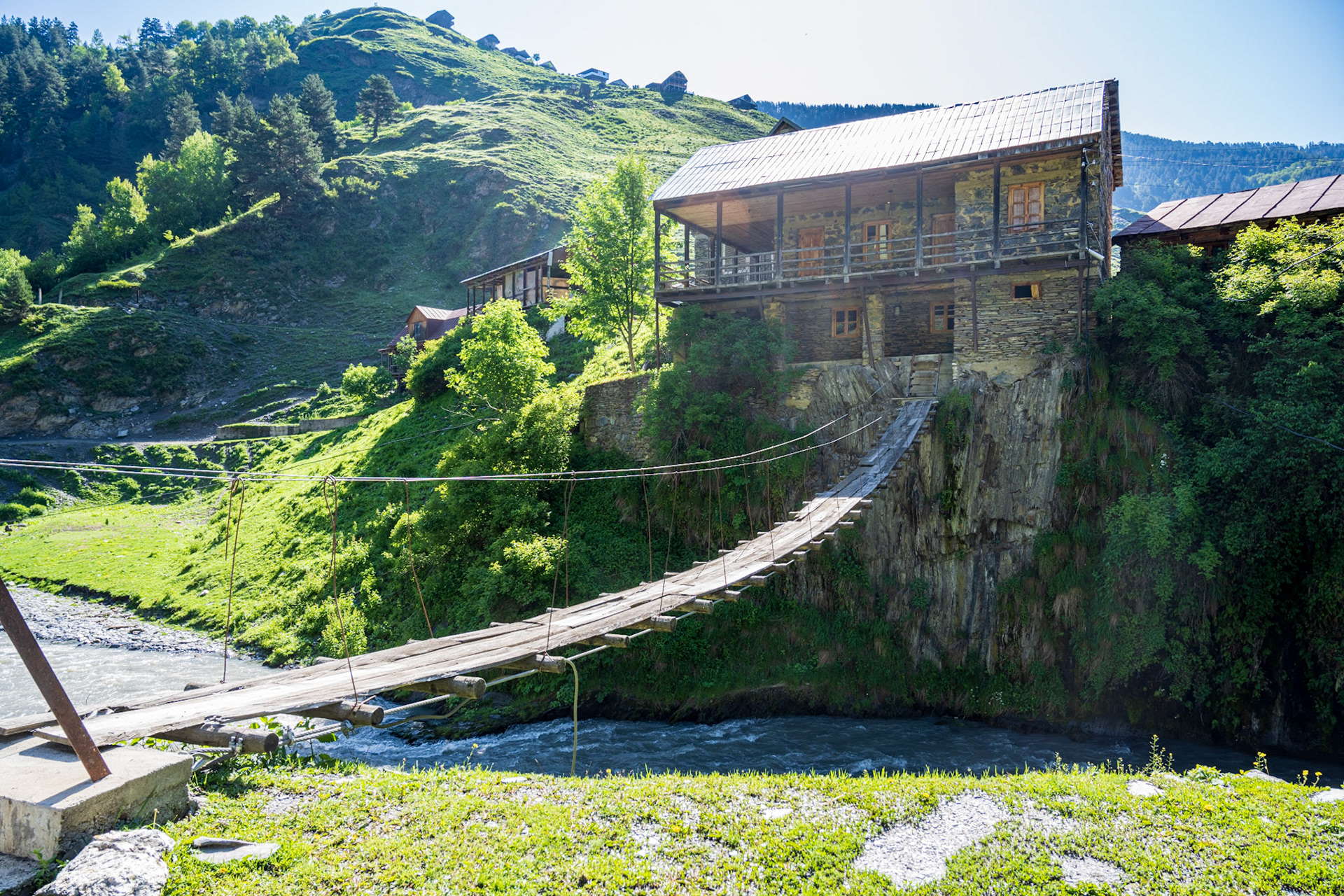
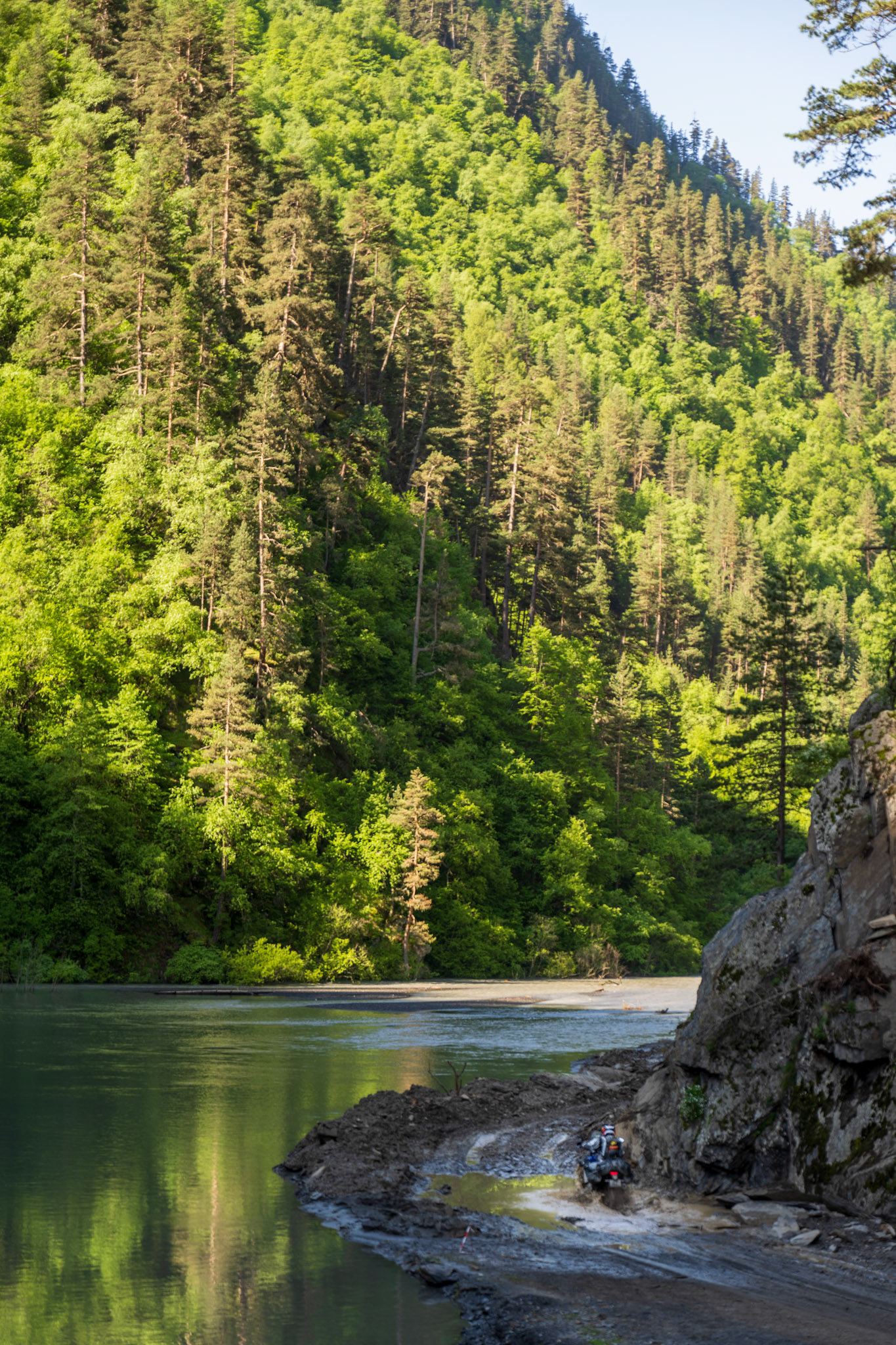
Dirk in a muddy section by the river
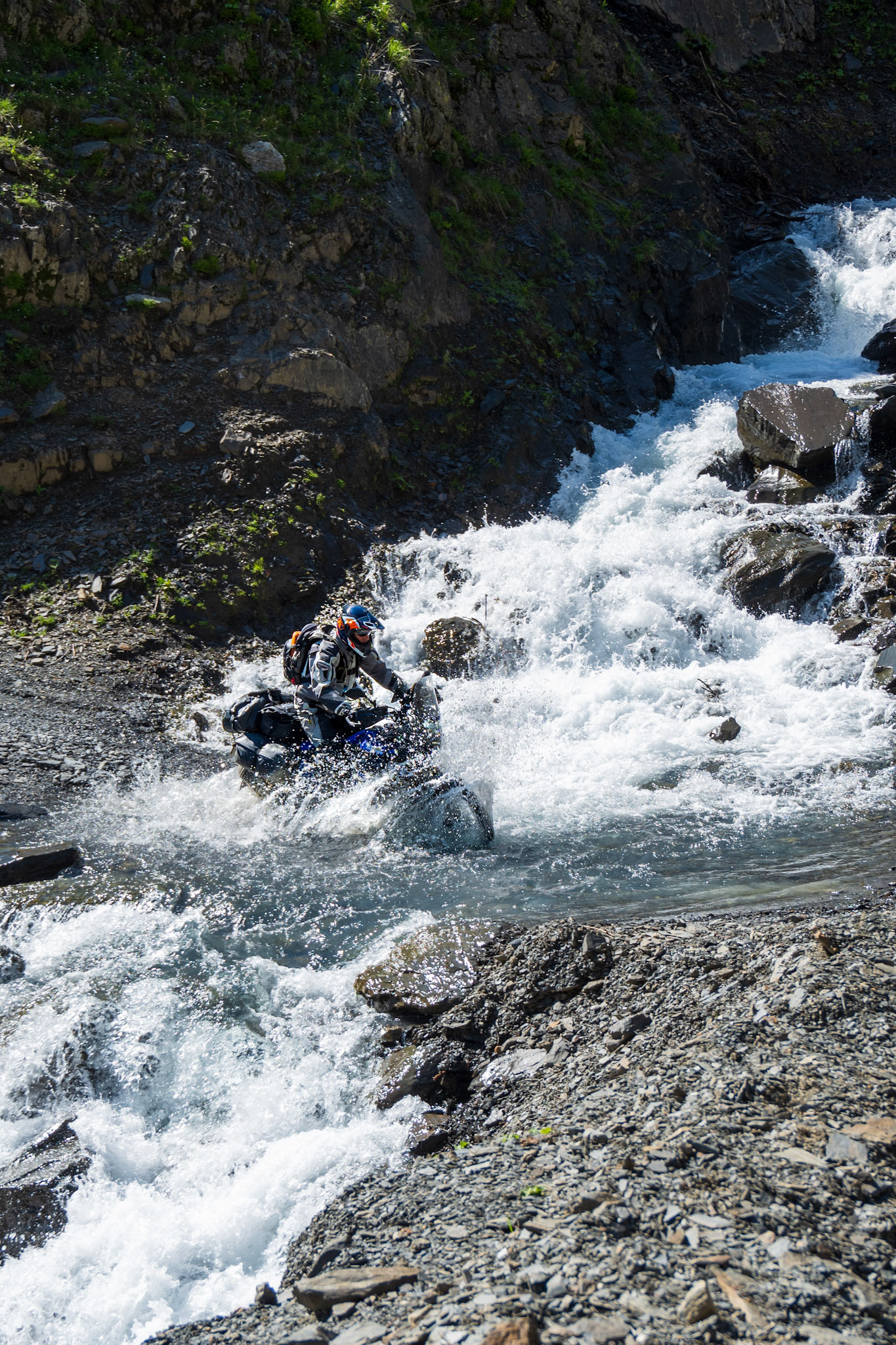
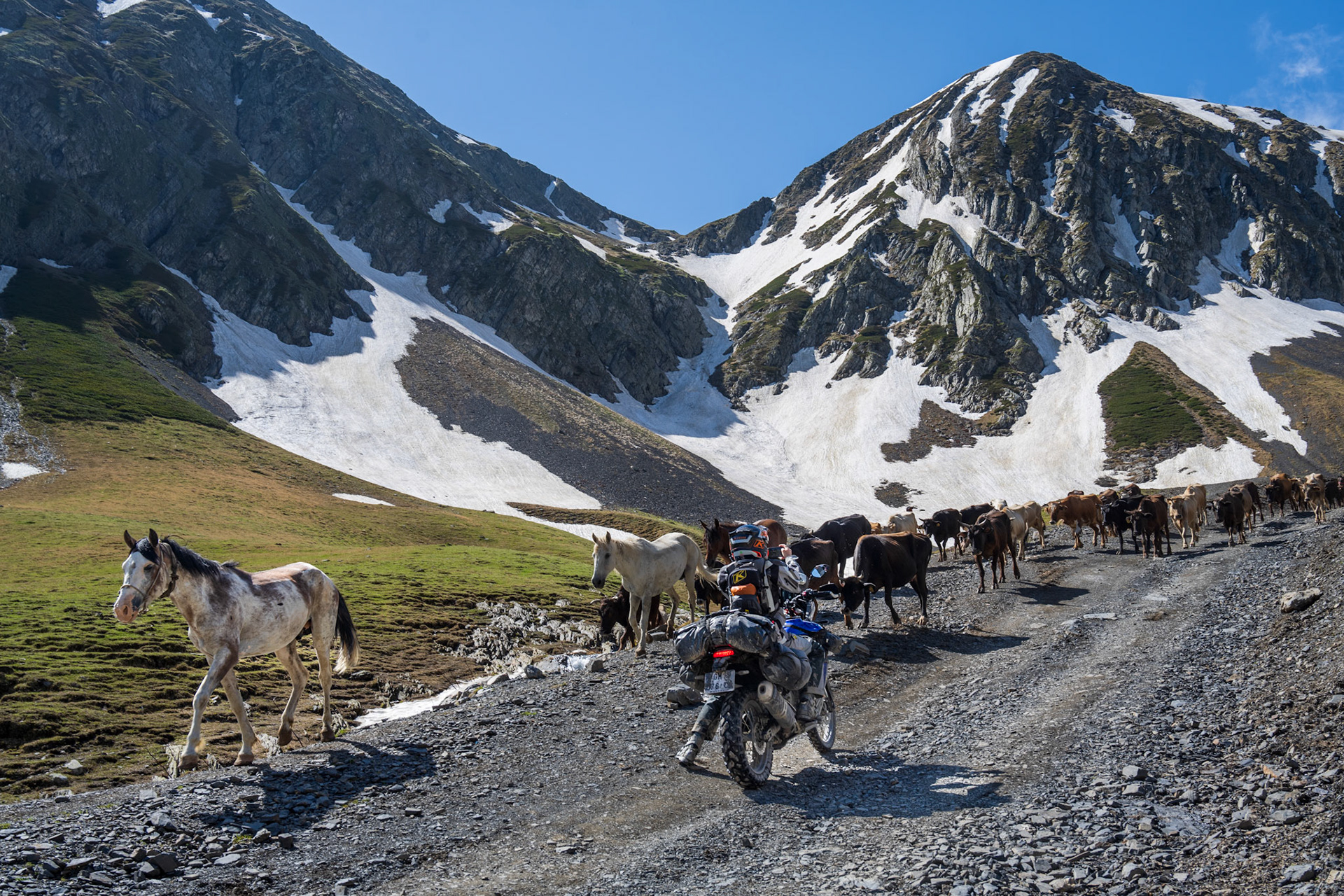
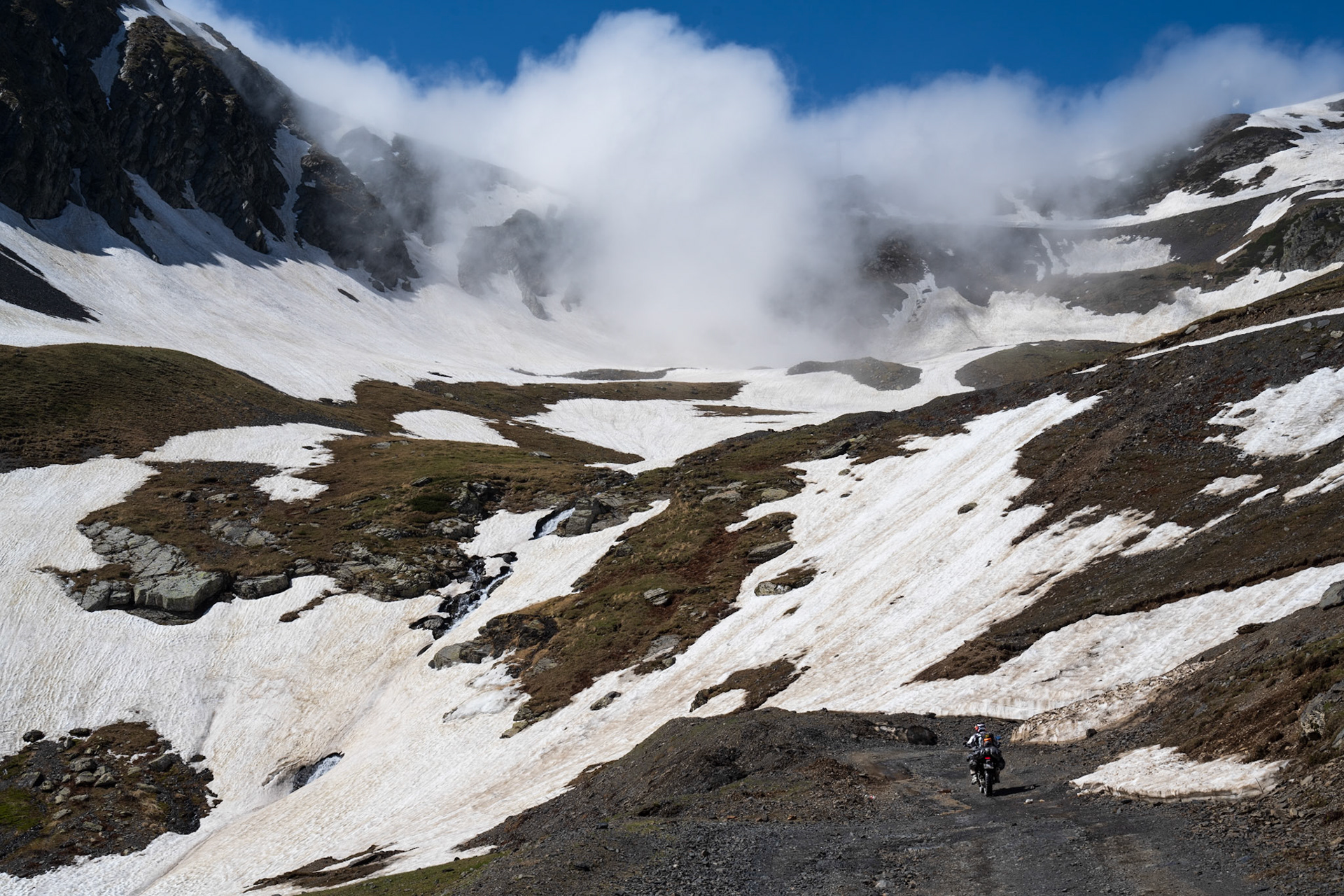
Going up the 2850m high pass
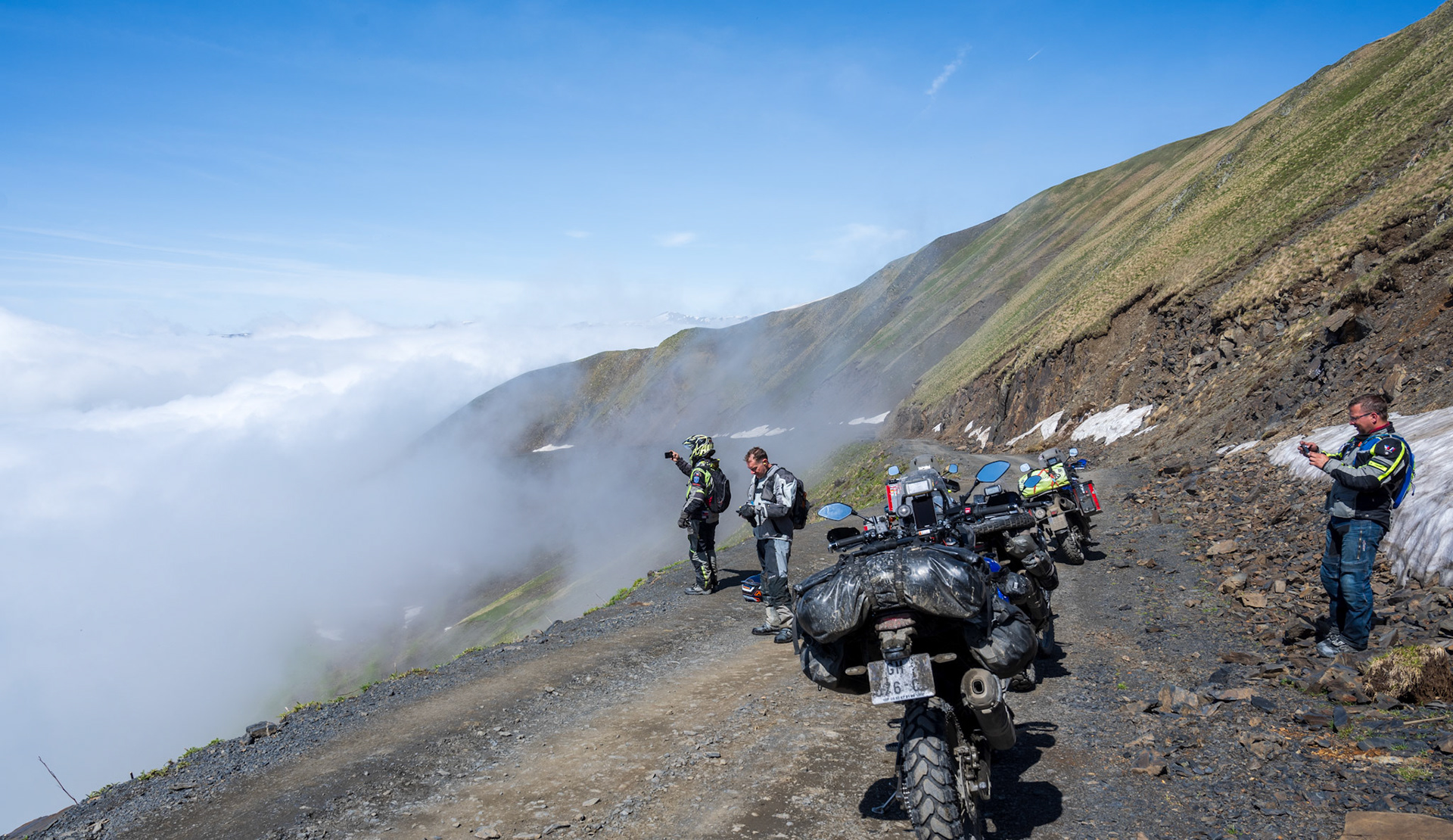
It's above the clouds that we briefly met the Czech riders again
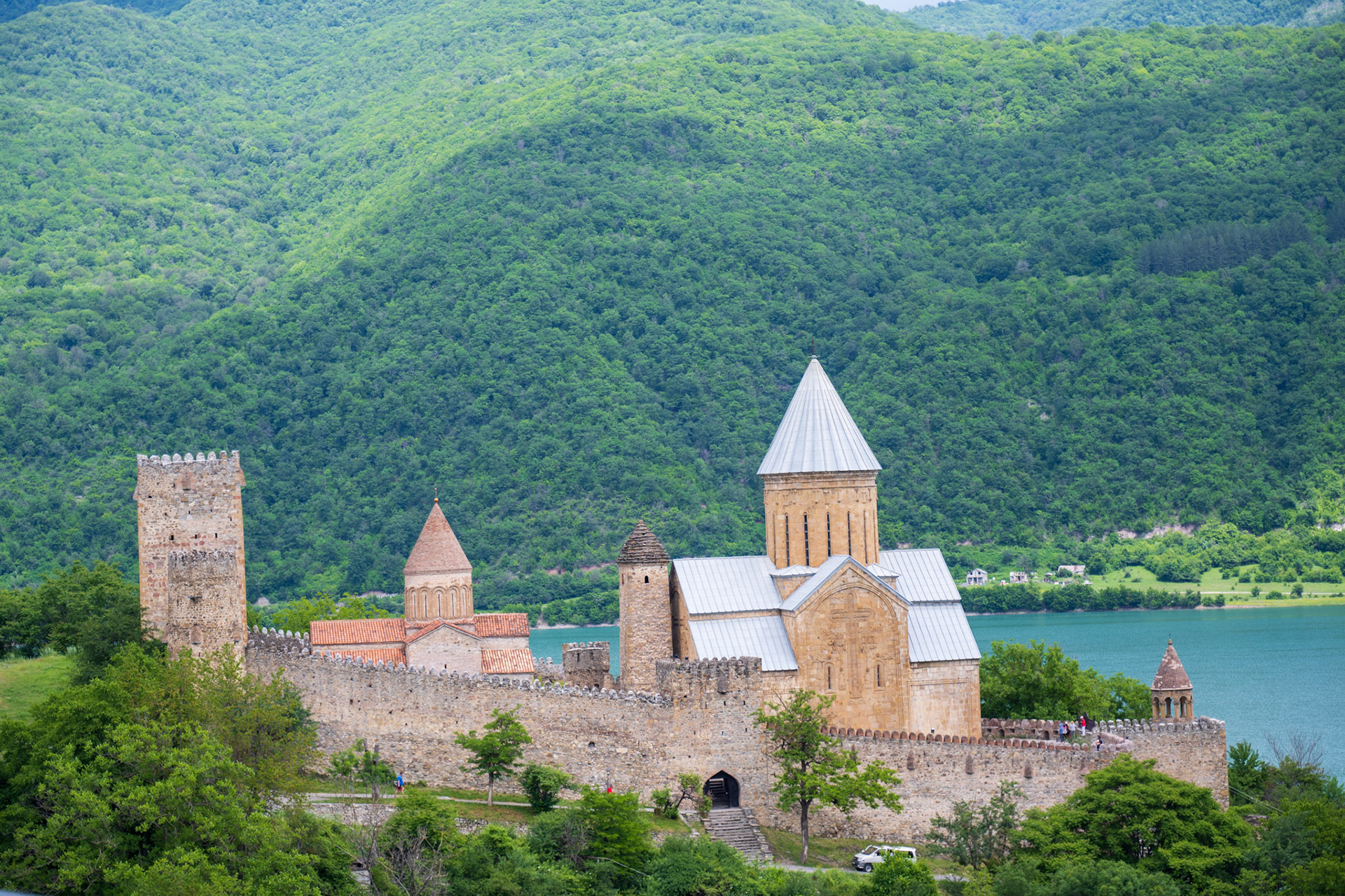
The Ananuri Fortress
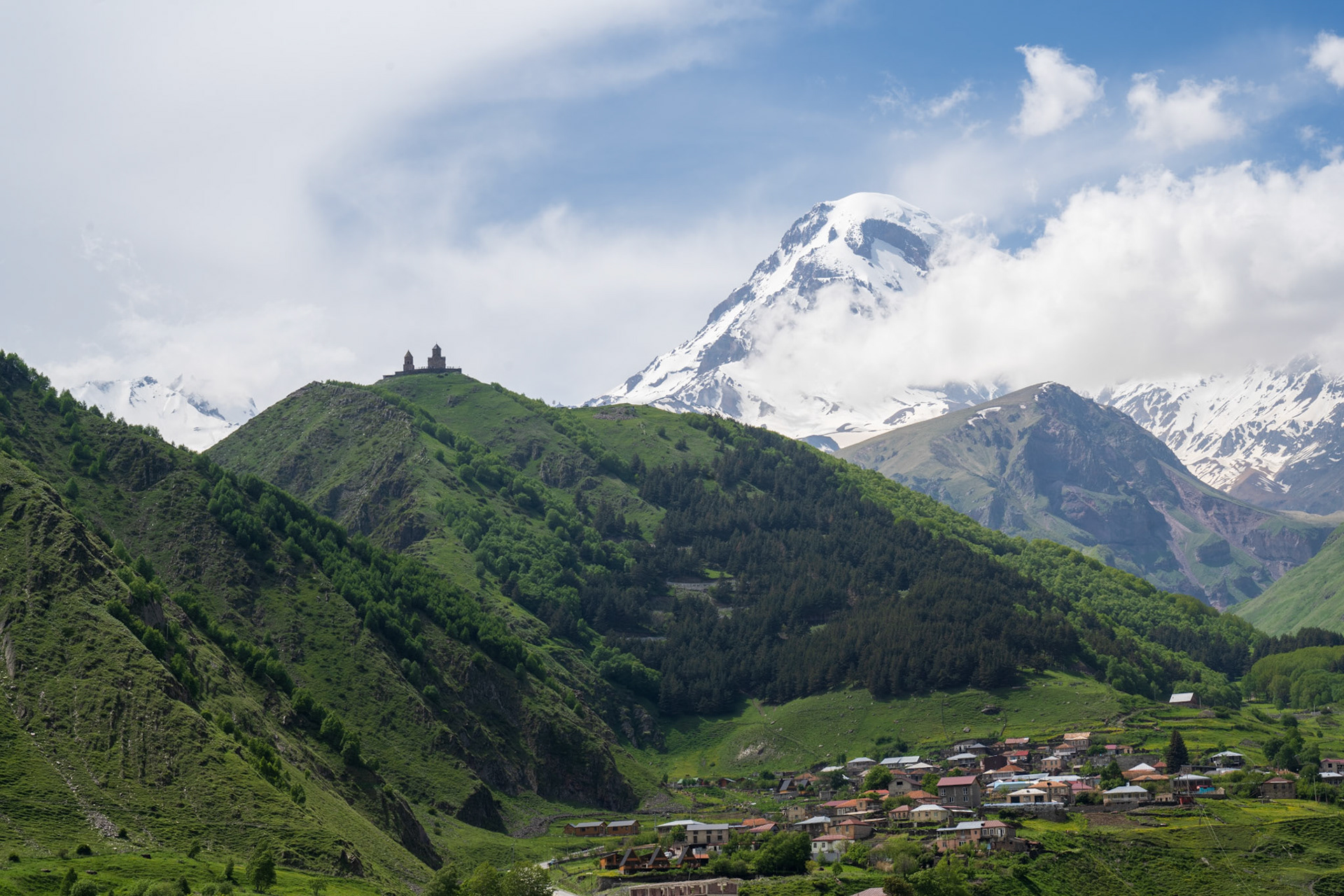
Stepantsminda - The famous hilltop silhouette of Tsminda Sameba Church and the towering snowy cone of Mt Kazbek looking down from the west.
